Recent Visits: PENLLERGARE LOCKDOWN PROJECT - Jan - March 2021
18th March 2021
Since we're in a middle of another lockdown here in Wales and I am restricted by travel I have decided, since it is in walking distance, to focus my attentions on photographing Penllergare former mansion estate. During this time of year I only have time to visit weekends, mostly due sunrise and sunset times. I will post new images as and when.
I also intend to pay, in part homage, to the former owner of Penllergare Estate and photographer, John Dillwyn Llewelyn and his sister, Mary Dillwyn Llewelyn - see these links for more information:
https://en.wikipedia.org/wiki/John_Dillwyn_Llewelyn
https://penllergare.org/victorian-paradise/meet-jdl/
All black and white images (10x8inch hand printed using traditional darkroom techniques and unmounted) are available to buy at £35 each. £10 from each sale will be donated to the Penllergare Valley Woods or if you wish to donate directly please follow this link: https://penllergare.org/donate-fundraise/
If you’re interested in purchasing an image please email me at paulwhite@welshruins.co.uk
Turn around will probably be 2 – 3 weeks but sooner if I get more than one order.
I will be using my Ebony wooden camera and with a brass lens as seen in the pictures below. Exposures will vary from a few seconds to possibly a few minutes and I hope to emulate a sense of wonder and calmness that comes when photographing in such a manner.
Below are photographs... the black and white are the finished prints and the colour are snapshots and working in situ...
I'll be using a variety of old brass lenses (without shutter, using a lens caps to exposure the sheets of film).
First set of black and white images here were taken with a Beck Steinheil Orthostigmat 7 1/8inch (180mm). January 9th/10th 2021.
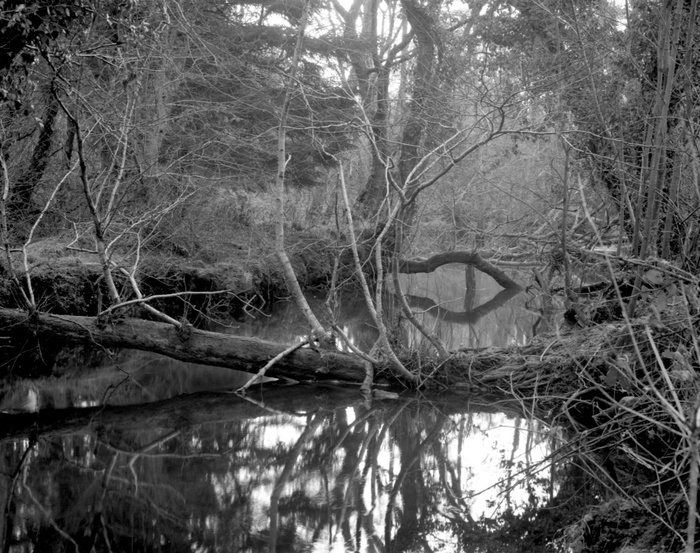
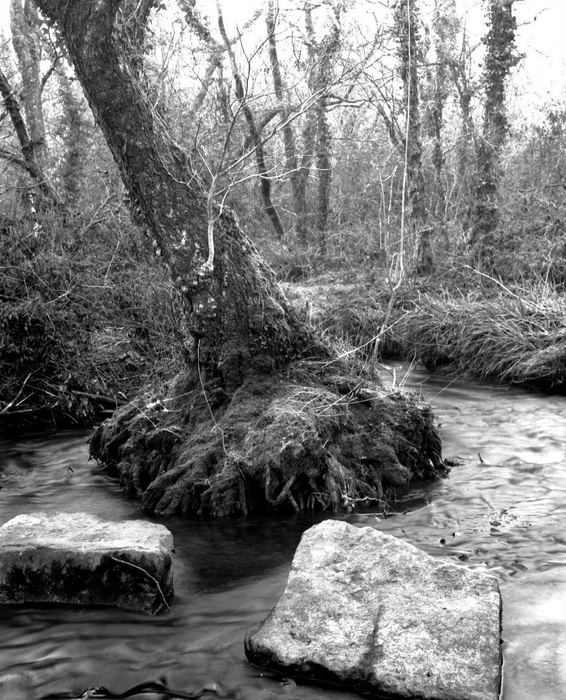
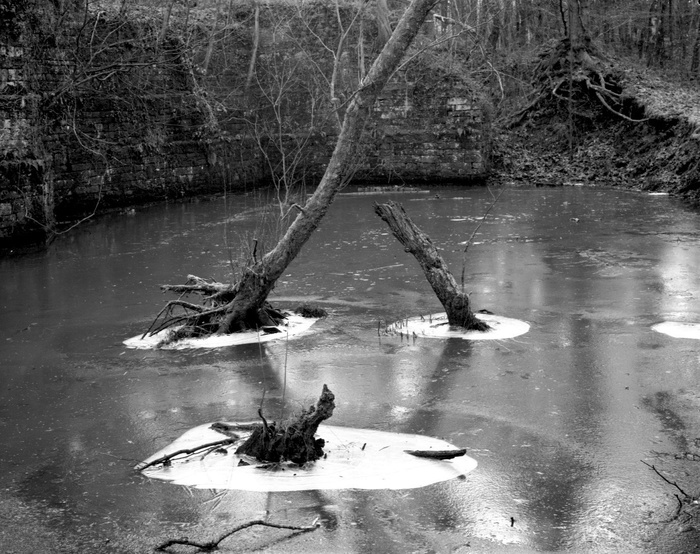
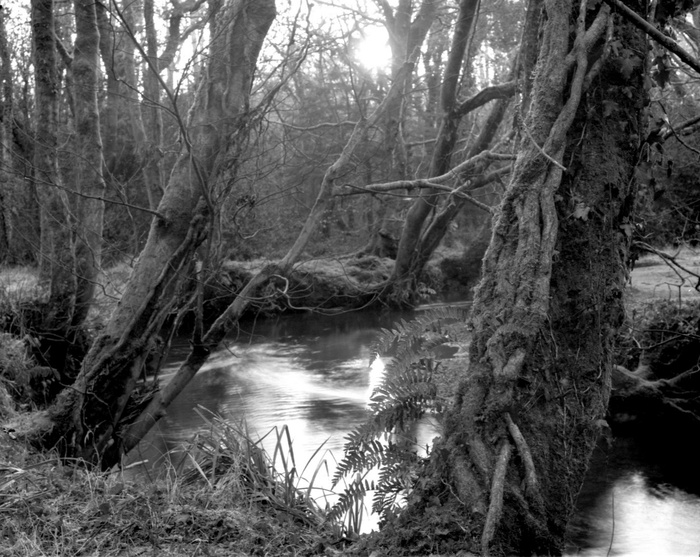
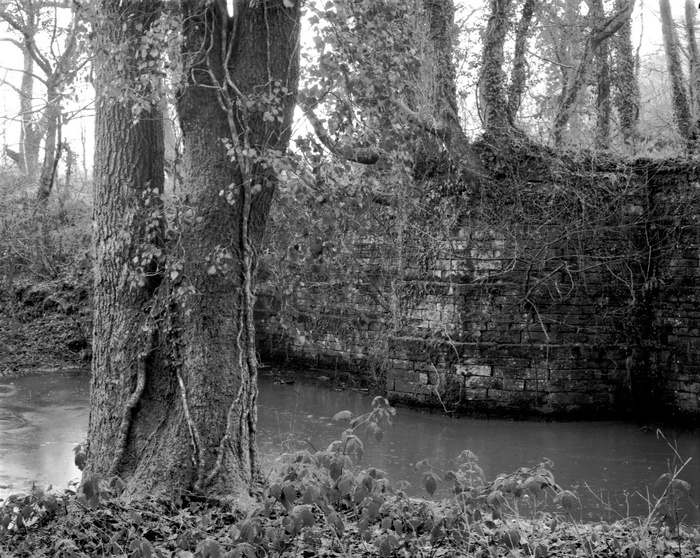
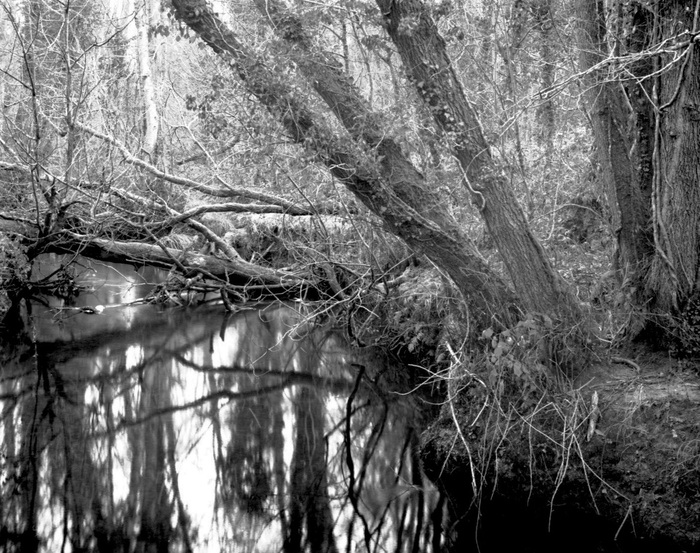
Colour snapshots showing locations and camera in situ...
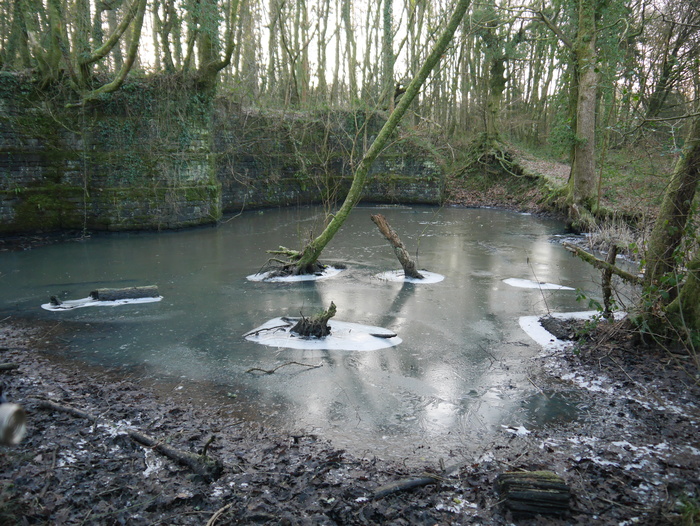
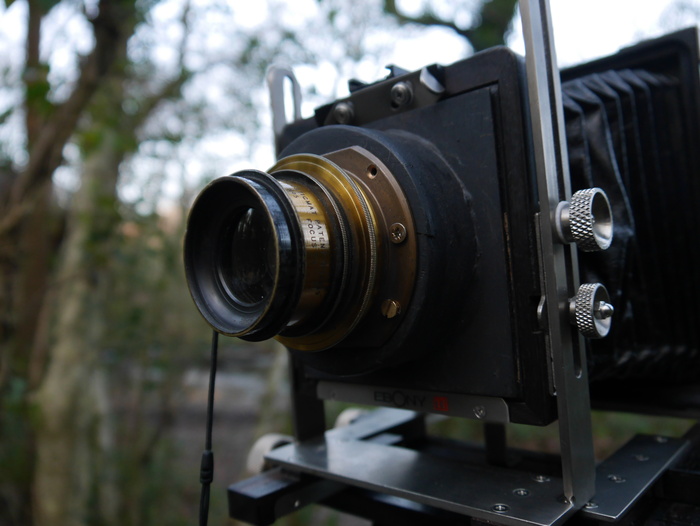
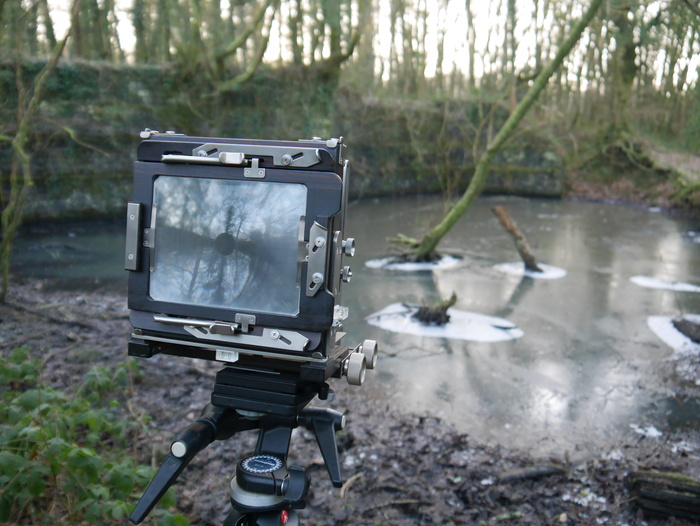
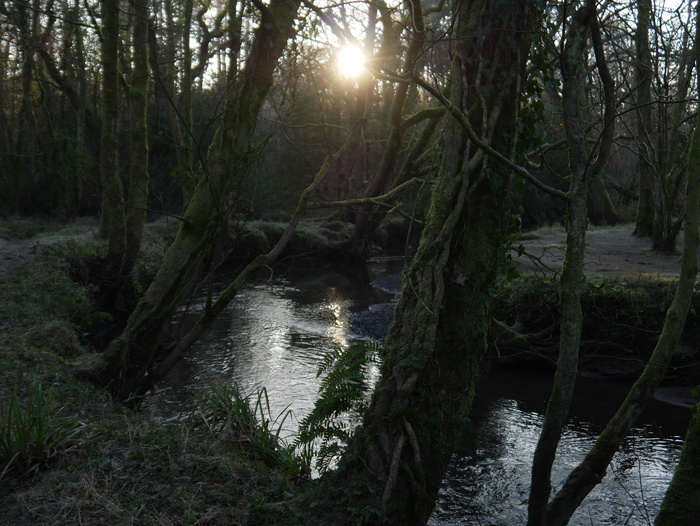
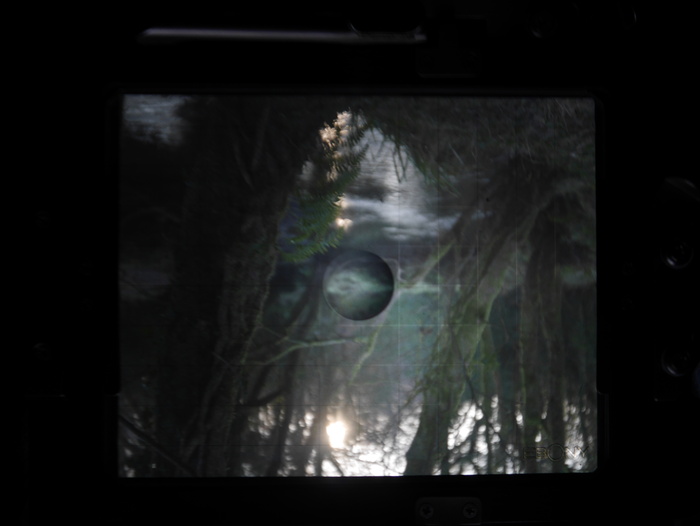
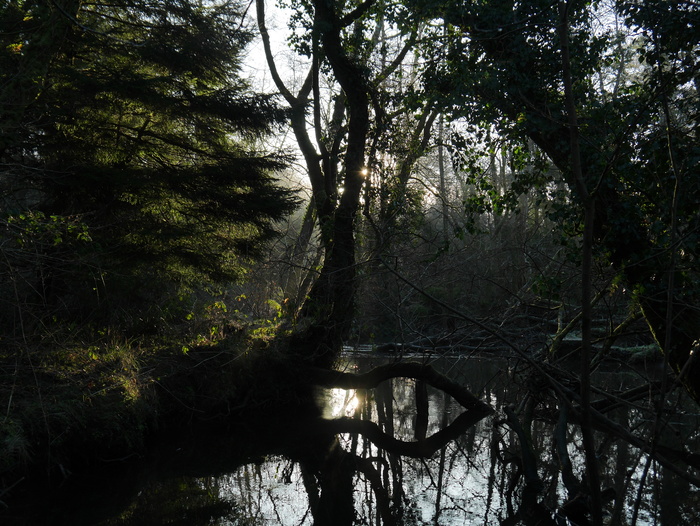
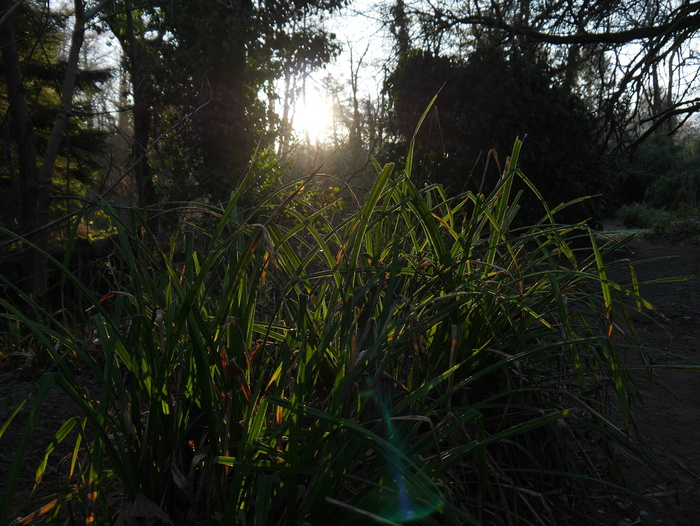
The next few black and white images were taken 16th Jan 2021 using a Cooke Aviar 6inch brass lens. Some exposures, the first three were long exposures between 1 - 4 minutes... the latter three approximately 30 seconds... it was a dim morning... all taken at F22...
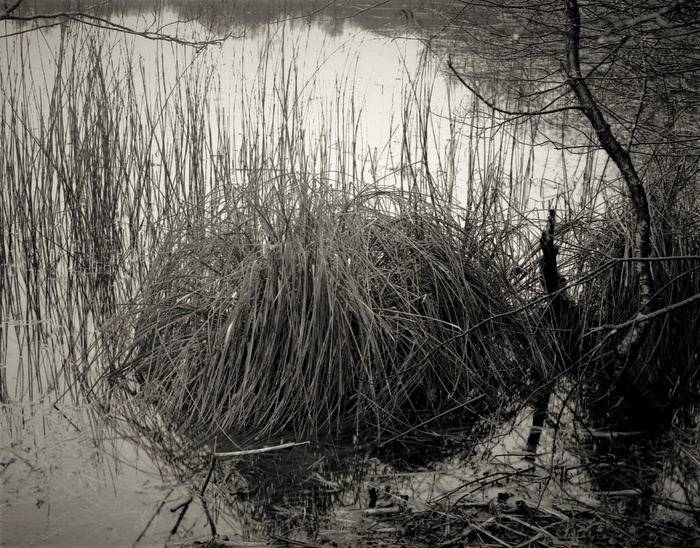
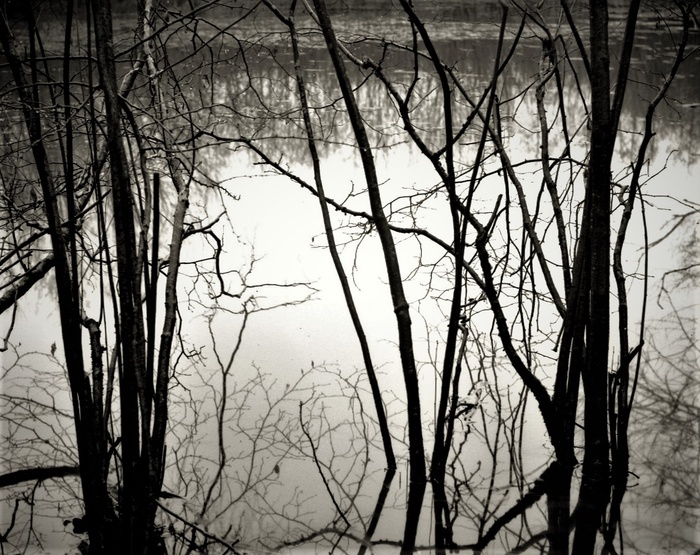
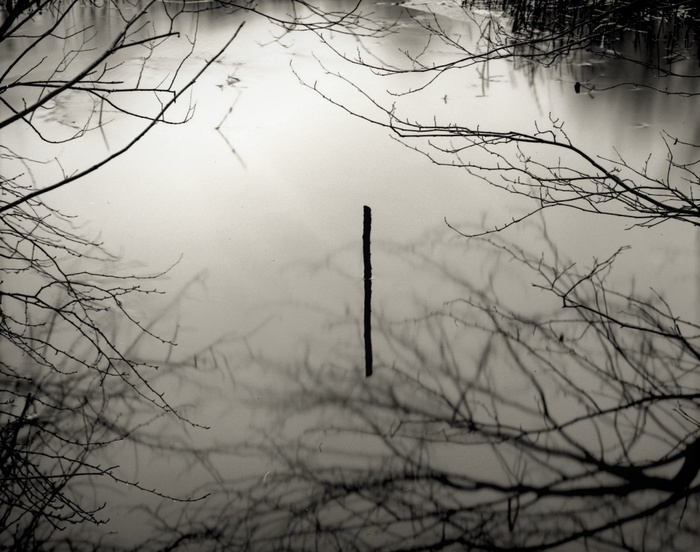
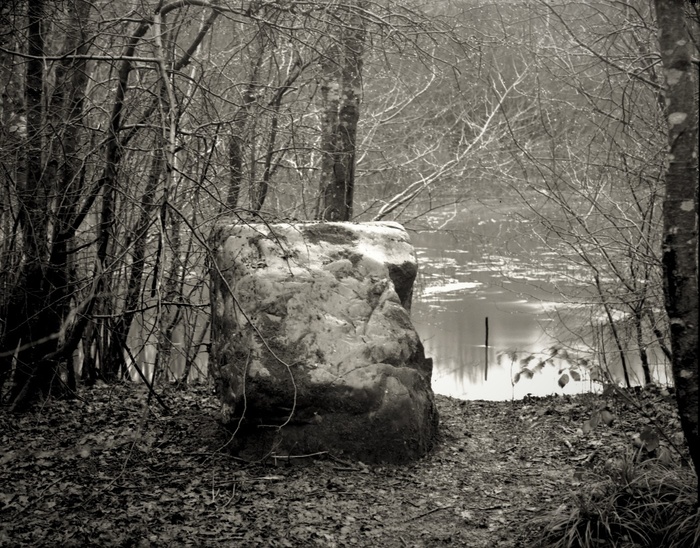
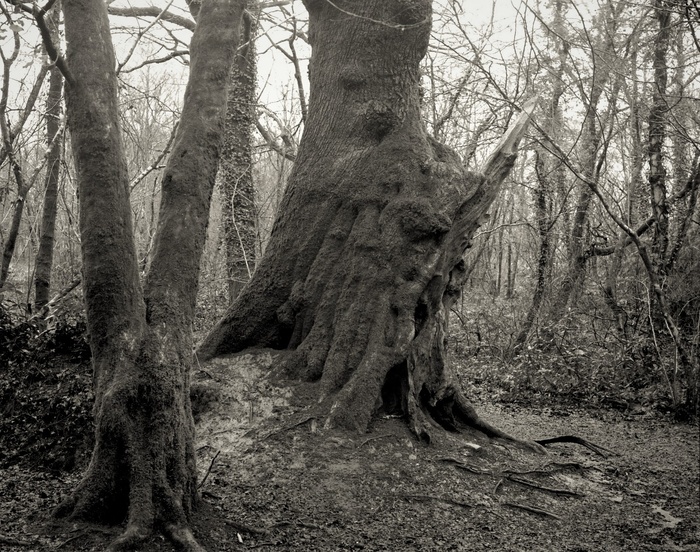
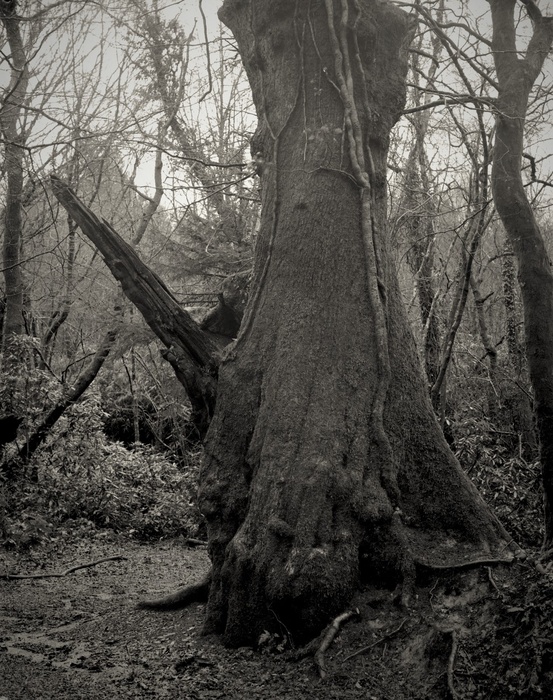
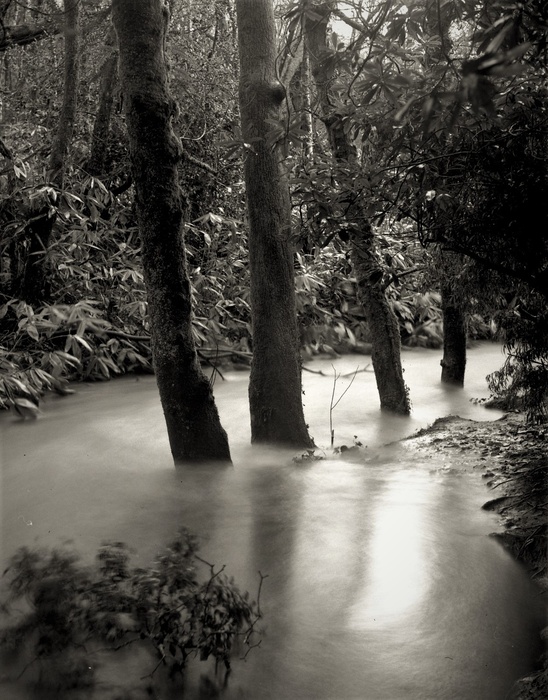
...and a few colour snapshots...
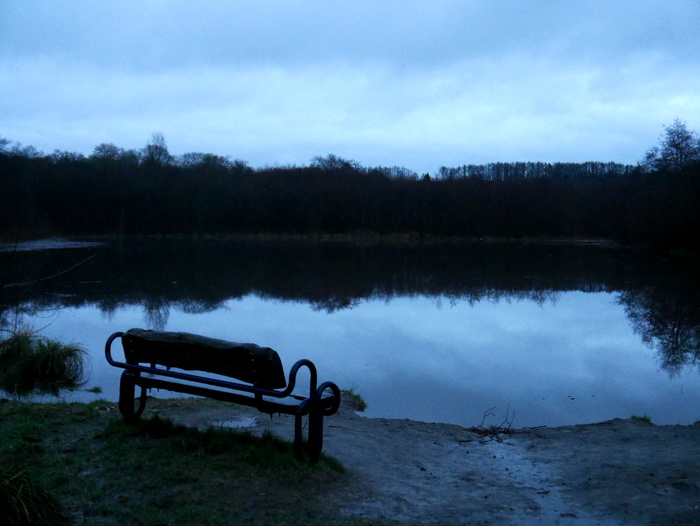
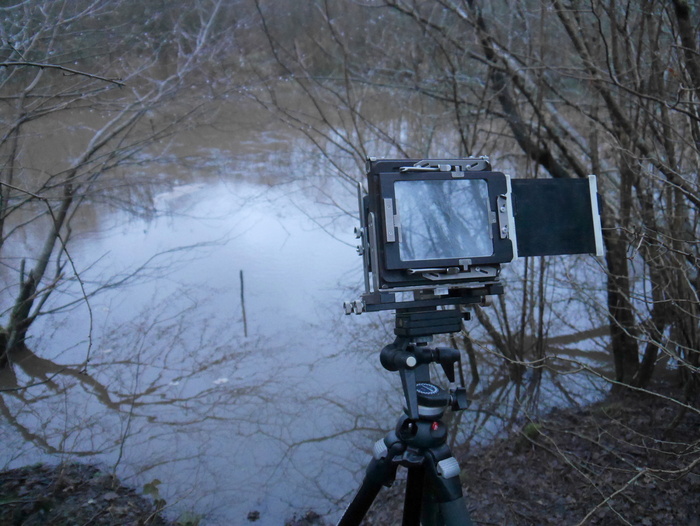
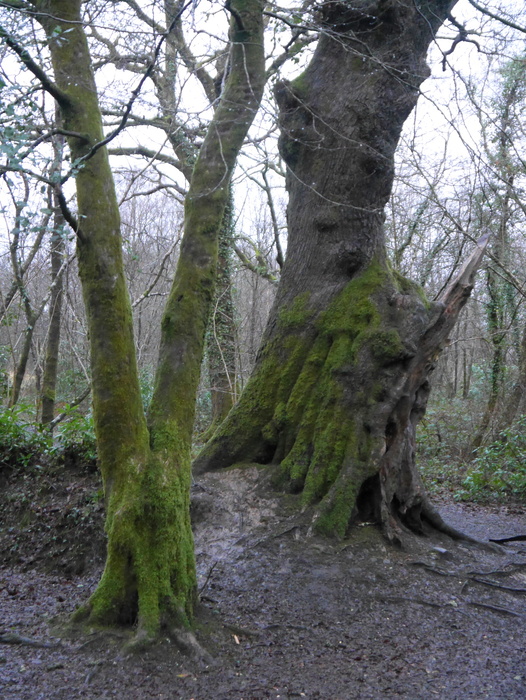
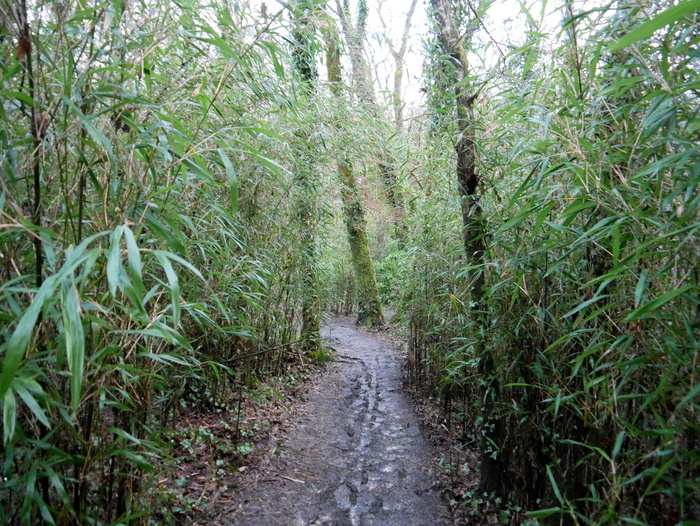
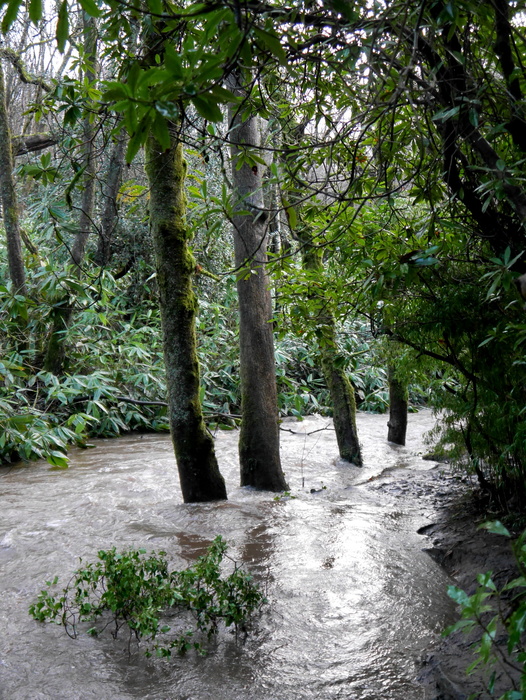
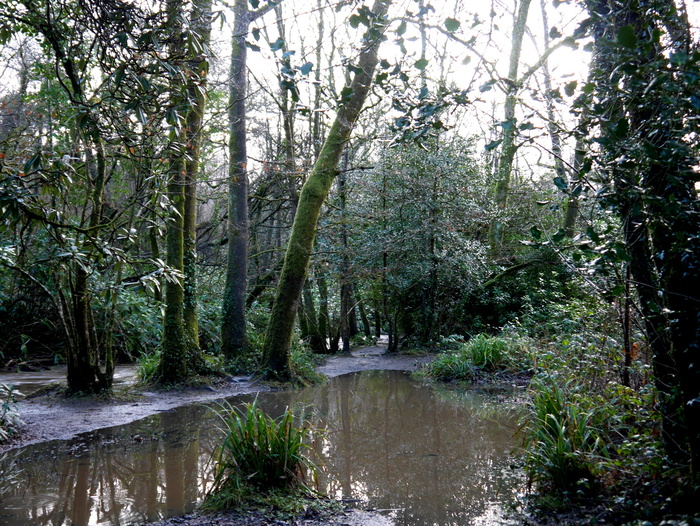
Penllergare Walled Garden - he walled garden is actually out of bounds currently due to renovation and repair.
The following images were taken with the Cooke Aviar lens...
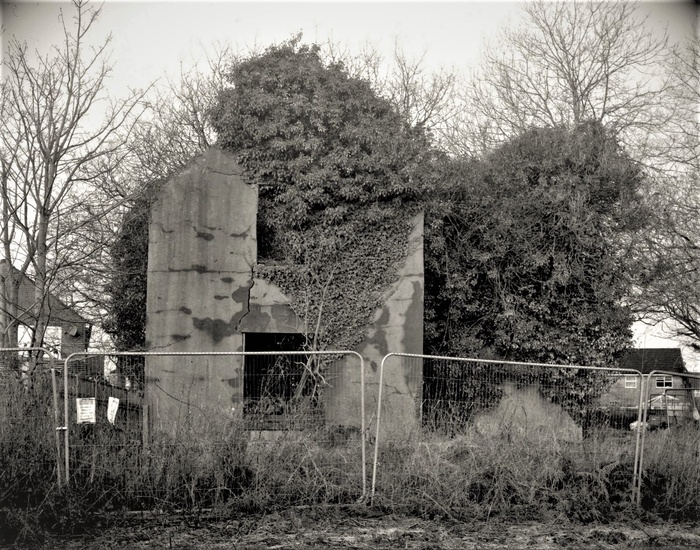
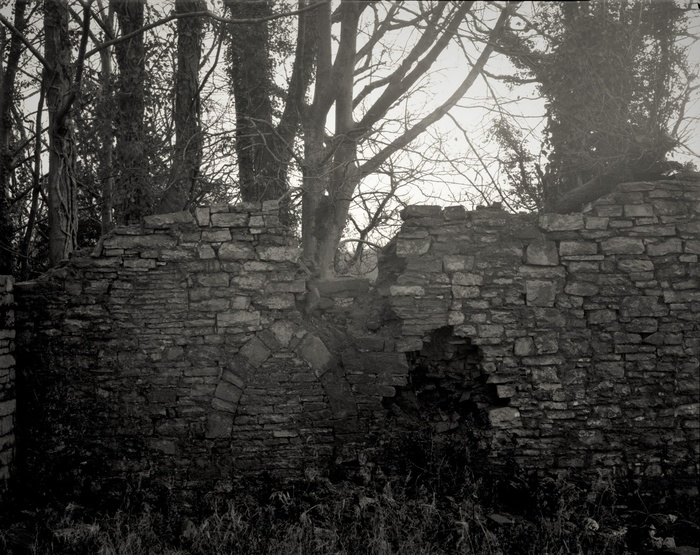
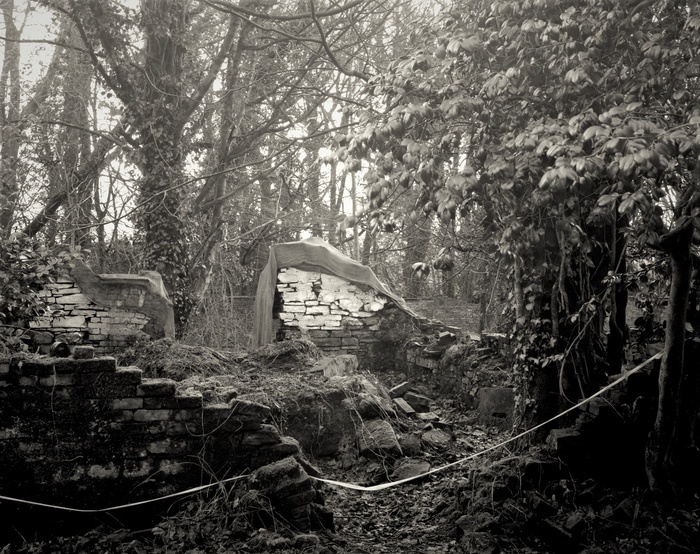
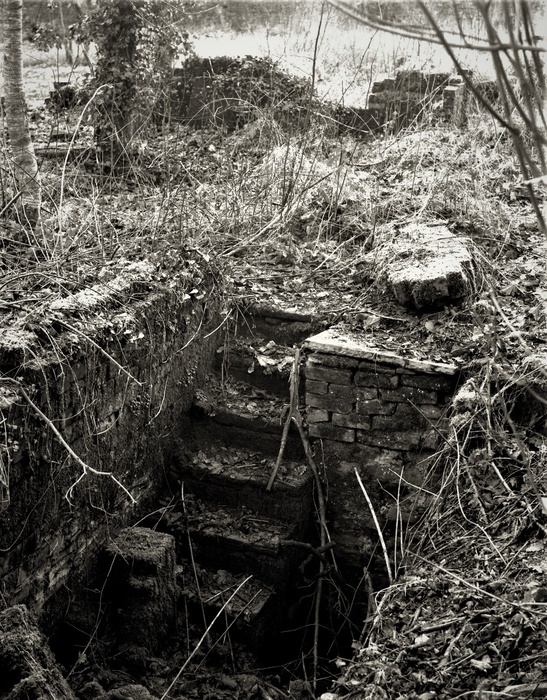
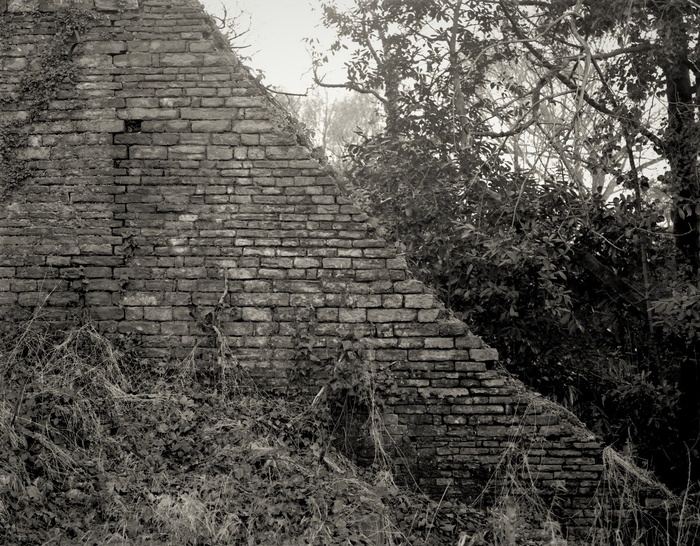
The next few are taken with my preferred Orthostigmat:
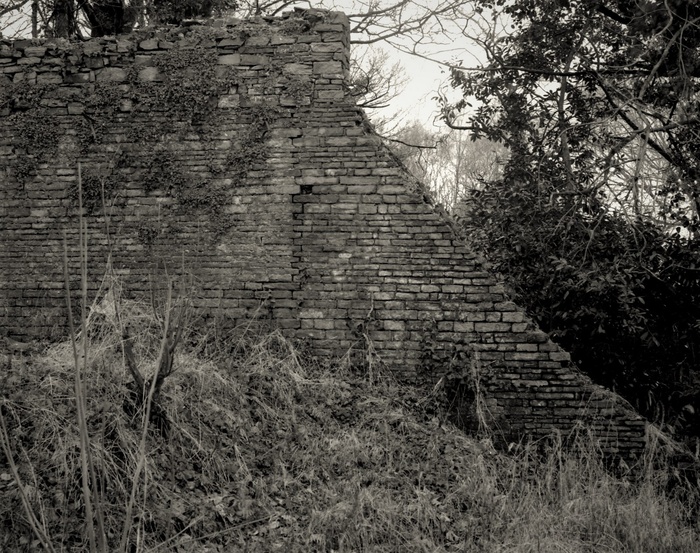
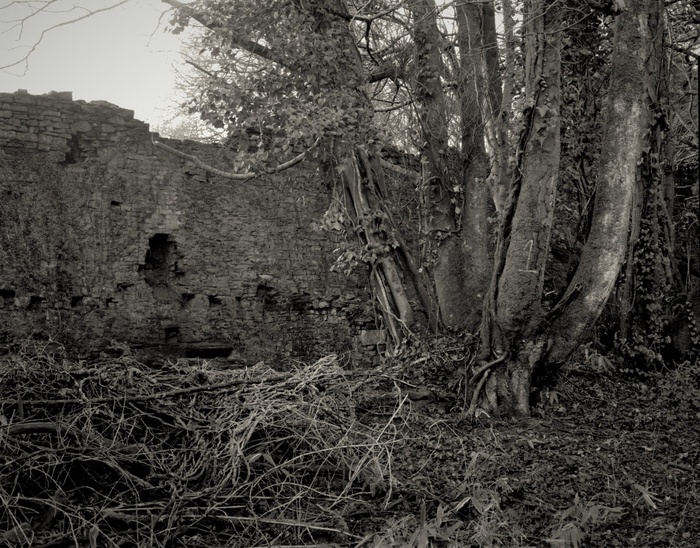
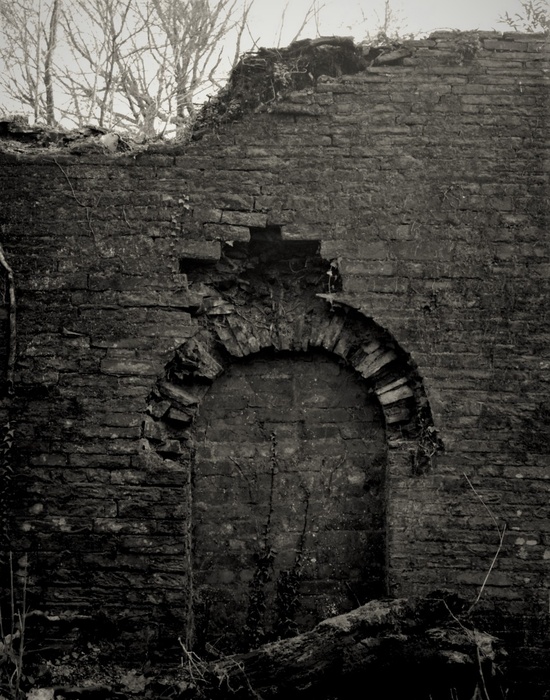
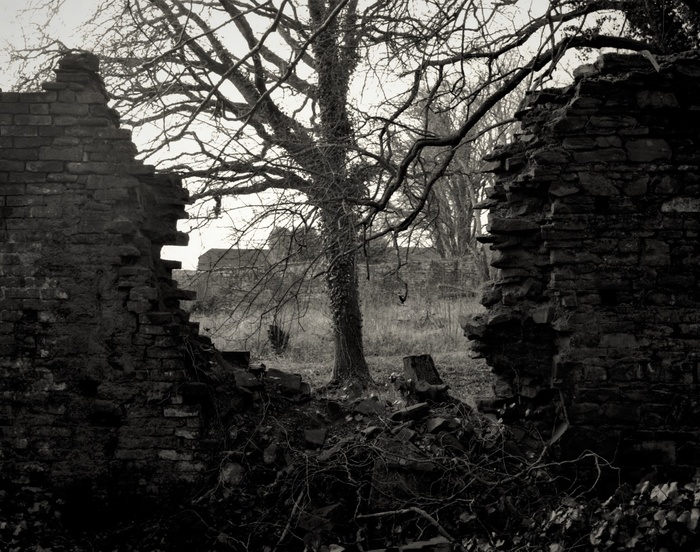
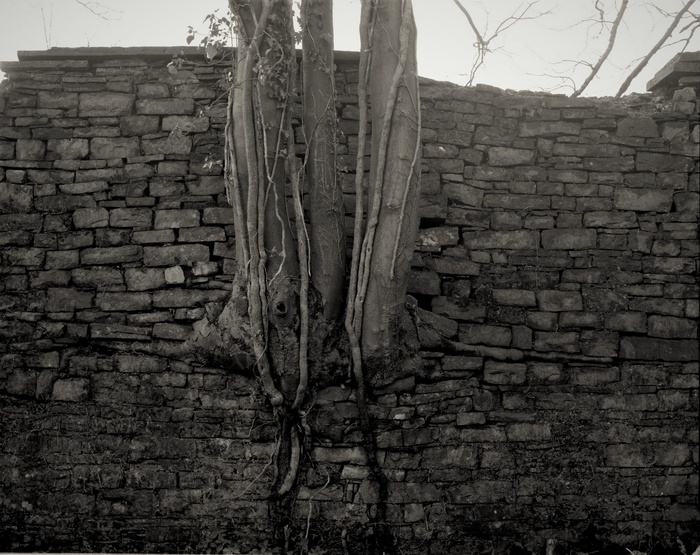
Colour images from todays visit:
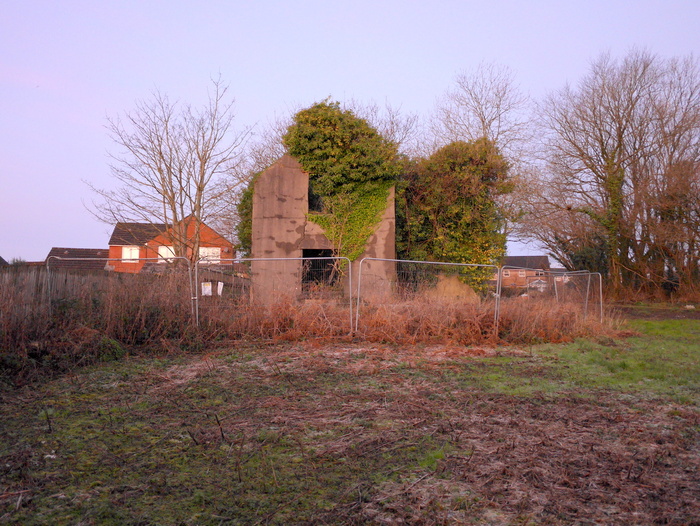
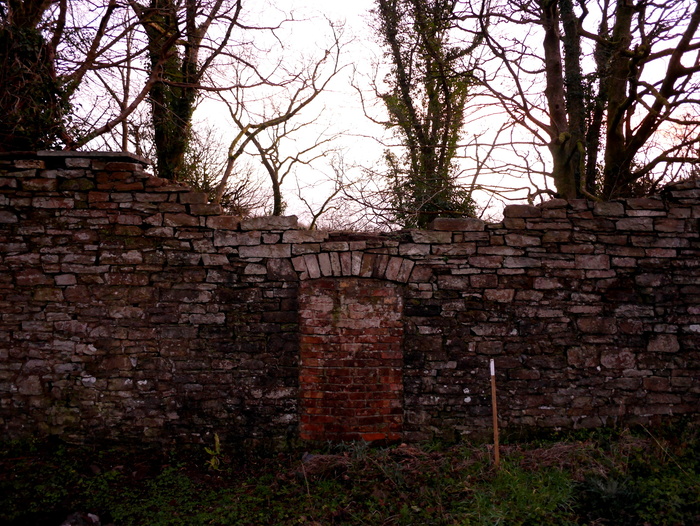
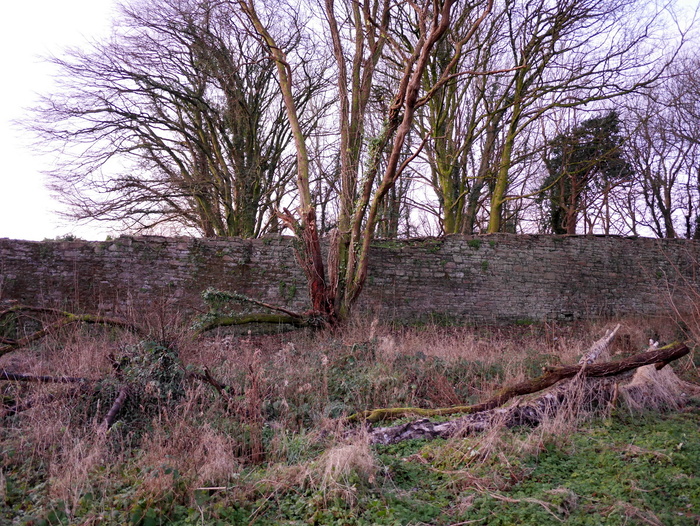
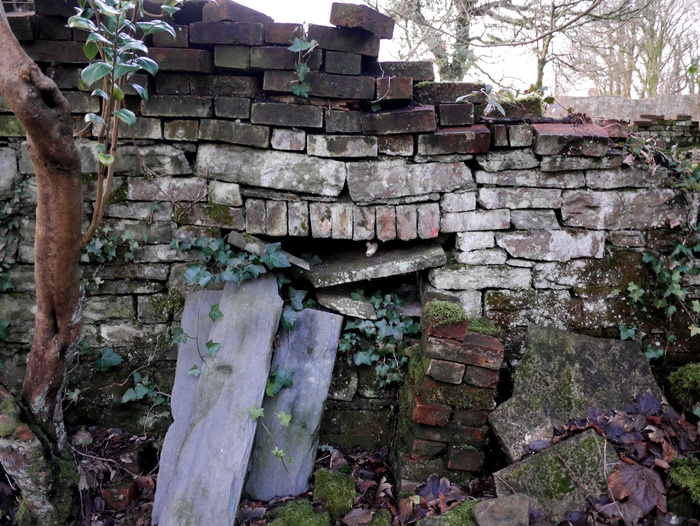
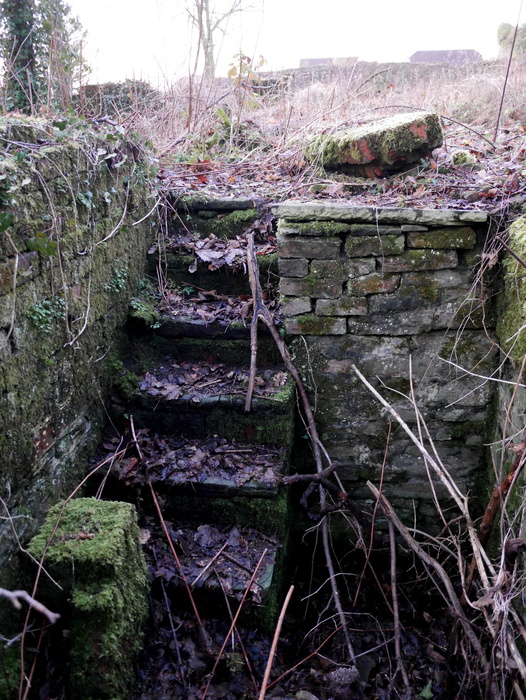
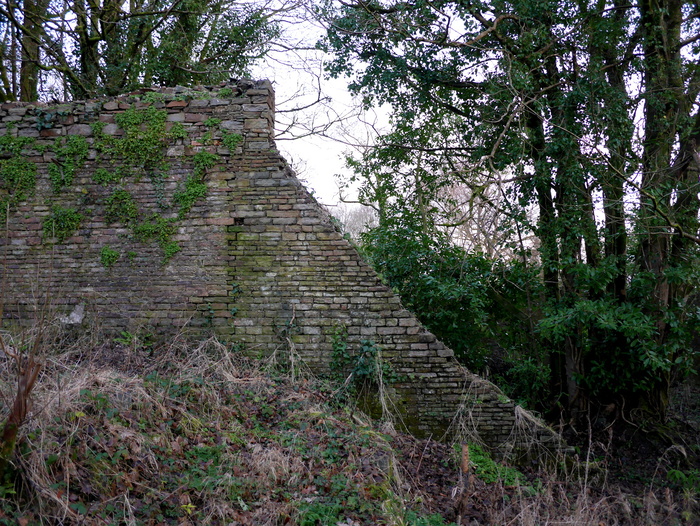
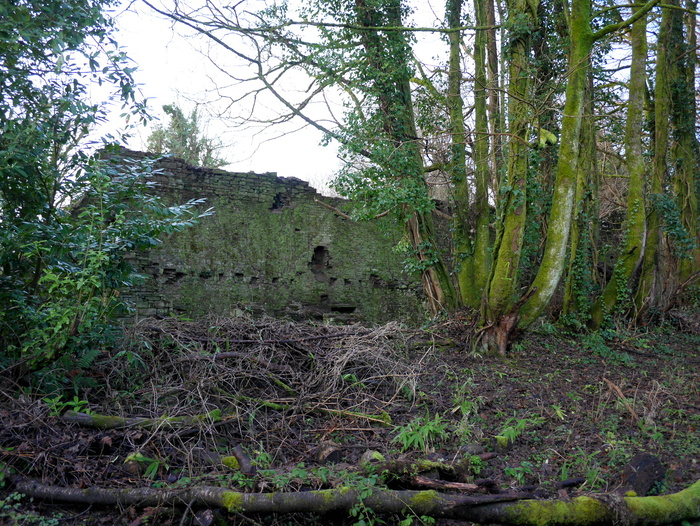
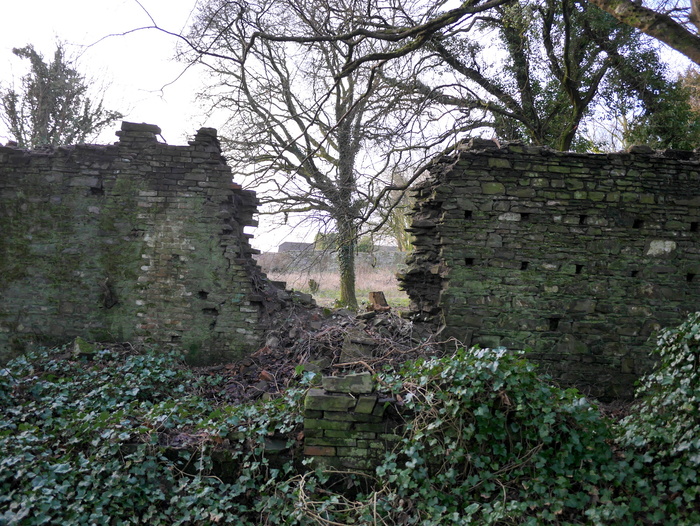
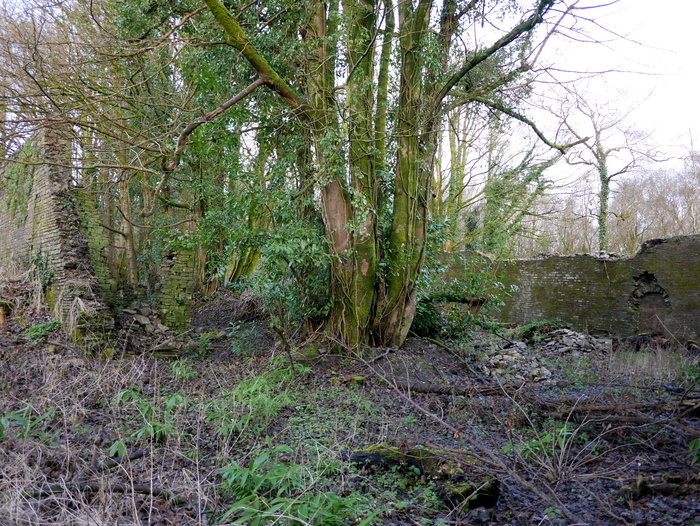
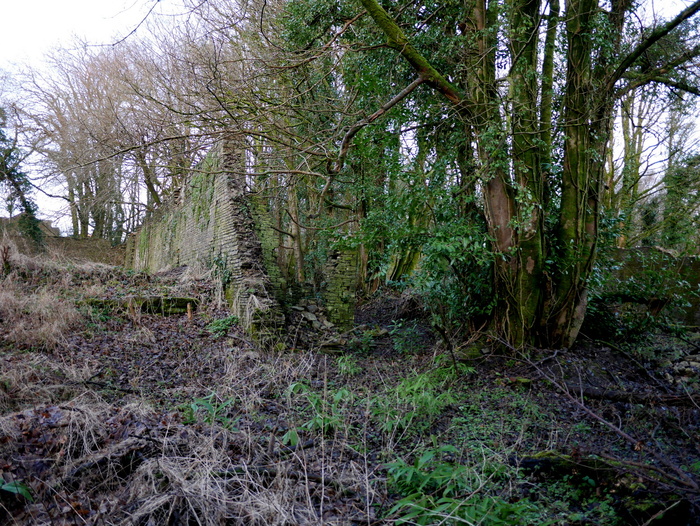
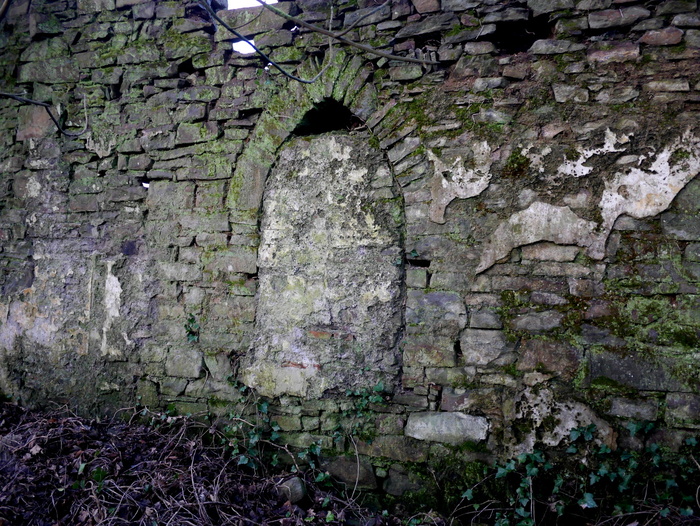
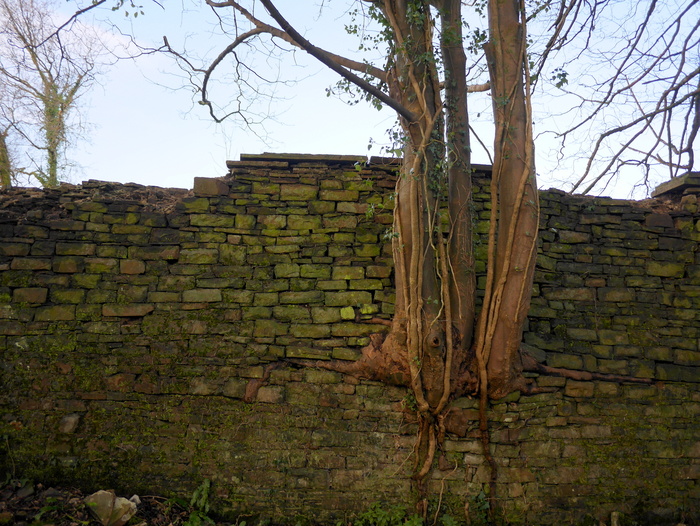
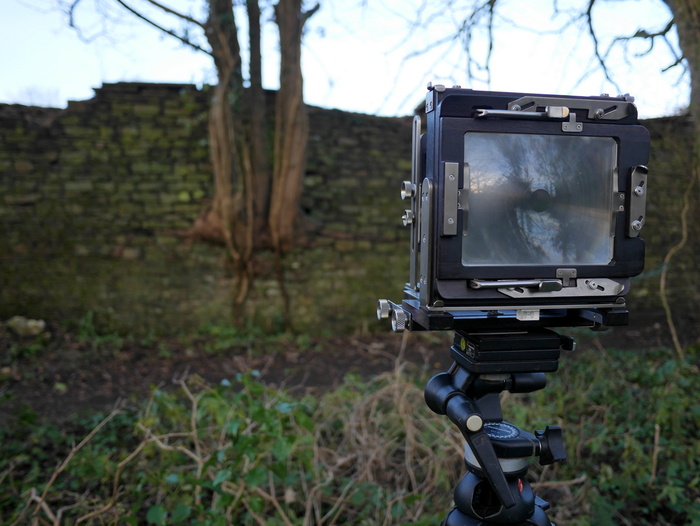
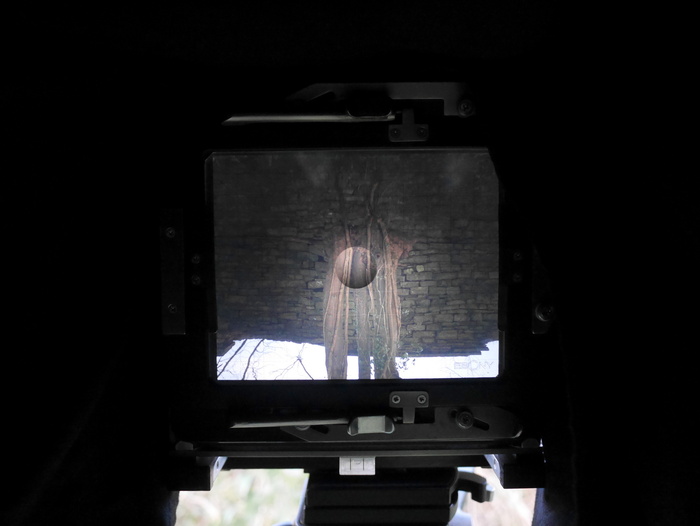
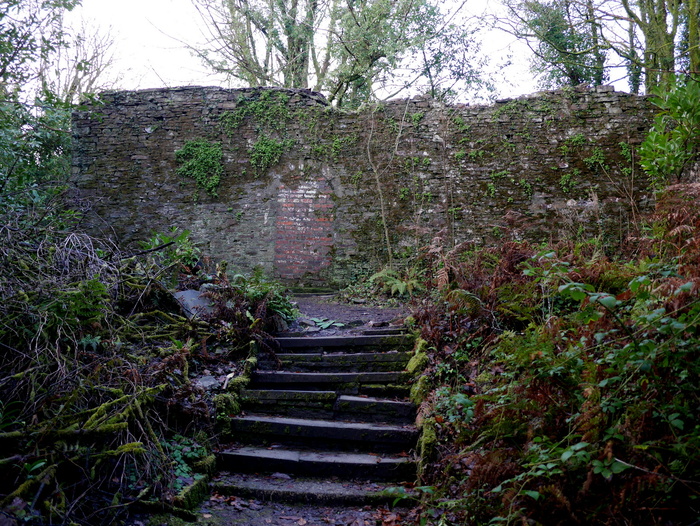
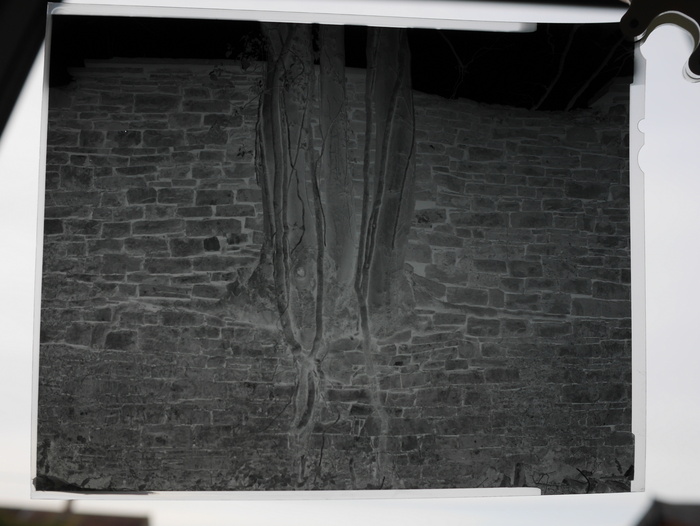
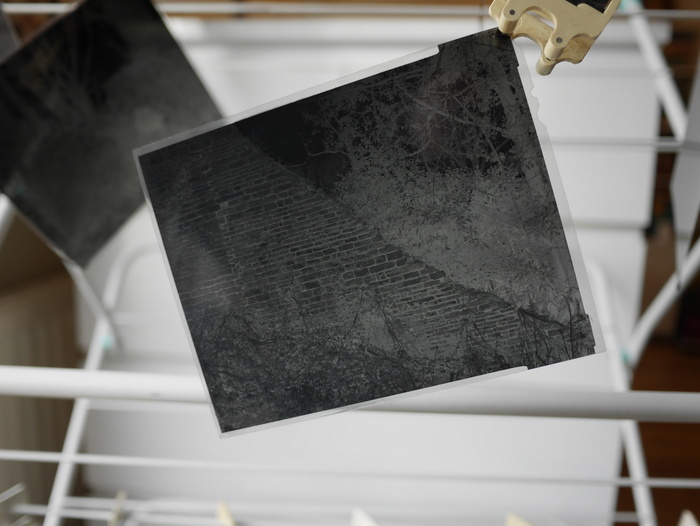
A few words...
Since 1991 when I was 21 years old and purchased my first ever wooden 5x4inch field camera I have photographed in exactly the same manner as I do now. I have very seldom photographed any other way. The only times I have are when I was at college and university between 1993 – 1997. During this time I used a variety of methods; everything from studio still-life/portraits, to using flash indoors and outdoors, painting by light among other types. And mostly in colour. I did not regret or resent being forced to photograph in this manner but I knew even at that early stage that I would remain a largely uncomplicated and simple photographer. I liked only having two or three lenses, a slow wooden camera, always tripod mounted. I knew the weight and size of equipment would be annoying now and again but it seemed a small price to pay and indeed, became part of the whole process.
Occasionally I go walking with my family and just carry a digital camera and I take a few photographs. I compose, I take my time but it feels akin to cheating compared to carrying a heavy rucksack and heavy-duty tripod. Not to mention processing and printing in darkroom conditions. You feel you have properly earned an image, worked for it, not post-processed on a computer monitor.
The slow traditional process of photographing this way is an almost organic form. The only piece of electrical equipment used is a light meter which takes a 6volt battery. Everything else is purely mechanical and manual. And even the light metering is often something I can do without. I know that most times when I am out and about it will be morning. I know it will most likely be cloudy and I’ll be focussing my camera upon a rural ruin. Eighty percent of the time this means I will be using an aperture of F22 and exposing for approximately 4 seconds. Unless the lighting changes, the sun shines or I am under dark canopy of woodland, I can more or less continue photographing with this aperture/shutter combination. It works for me.
So what has changed recently? The Covid pandemic has meant I cannot travel anywhere beyond walking distance. My only local walk is Penllergare (sic Penllergaer) woodland, an old picturesque mansion estate just five minute walk away. Not disimilair to the Hafod Estate where I am from. I have of course photographed it numerous times with my normal set up; wooden camera, wide angle lens. I have however recently been looking at old brass lenses on eBay and purchased a Beck Orthostigmat 180mm. This lens dates from the 1890’s and has no shutter. This means I have to use a lens cap to expose a sheet of film. This means exposures need to be approximately over 2 seconds or so… not a problem.
This method of exposing film has never appealed to me. It always felt clunky and unscientific, mostly using guess work. In practice however it has felt the complete opposite of a step backwards. Technically speaking it is a step backwards but as far as a satisfying process to record an image onto film, it feels like a great leap forward.
Working this way has slowed me down further. Using a wooden camera is generally considered a slow process anyway but I have been using the same method of photographing for so long that it generally only takes me a minute from taking the camera out from the bag and setting it all up and exposing a sheet of film. I have done it this way for so long that I’ve often sped through the whole process without properly enjoying or appreciating it. Using shutter-less brass lenses has made me re-think, re-consider the whole process. And for this I am grateful.
My next lens is a Cooke brass lens, which has a similar focal length, but should produce a different look to the finished image.
Ideally I would like to use a larger 10x8inch camera (I have only ever used 5x4 inch camera’s) but the same concerns niggle me as they did back in 1991 when I was trying to find the camera for me. The price of film, the price of camera, lenses, darkslides, processing equipment all increases and I would, without any doubt, take a lot less photographs. I am already restricted to some degree how much I spend and increasing film sizes would simply restrict me further. So, I will remain with my set-up and be happy with what I have.
Of the images here they are mostly of landscapes. For many years, decades even, I considered myself a landscape photographer first and foremost. The truth is that I am not the greatest of landscape photographers! I have often felt my images lacked something, an air of mystery or of historical importance, or a true sense of place. I could produce pretty landscapes but they are often hollow and lack weight and meaning. Nonetheless, I have approached Penllergare woods as a landscape project. I may learn something new. I may discover how to create ‘weight’ and ‘meaning’ onto a sheet of film.
Or alternatively I may have reached my landscape creative peak thirty years ago when I first roamed the Hafod mansion estate when it was mostly untouched and not filled with walkers and visitors – not that I have an issue with walkers and visitors, I was then as I am now at Penllergare nothing more than a visitor.
Weekend 23rd January 2021 - A very cold morning - deep frost - first a few colour images and then followed by black and white....
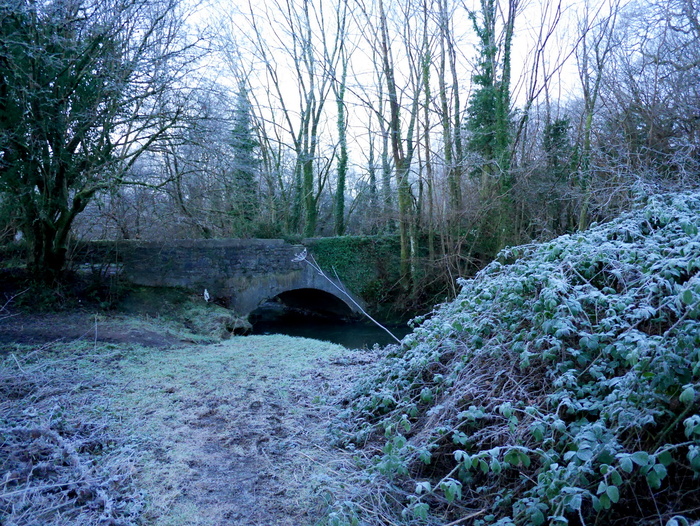
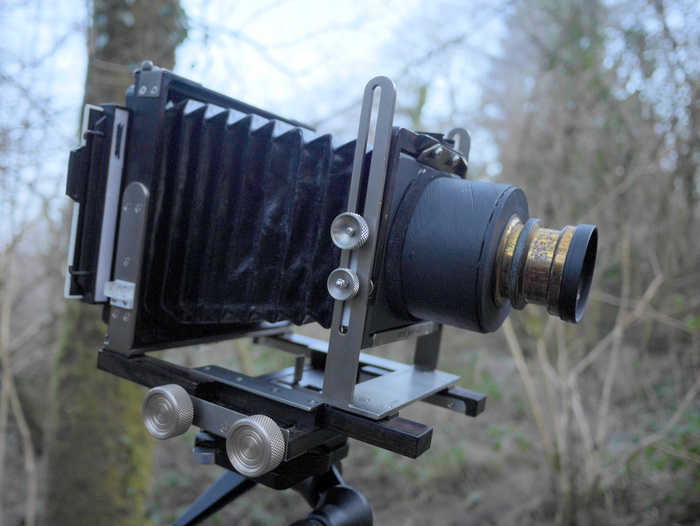
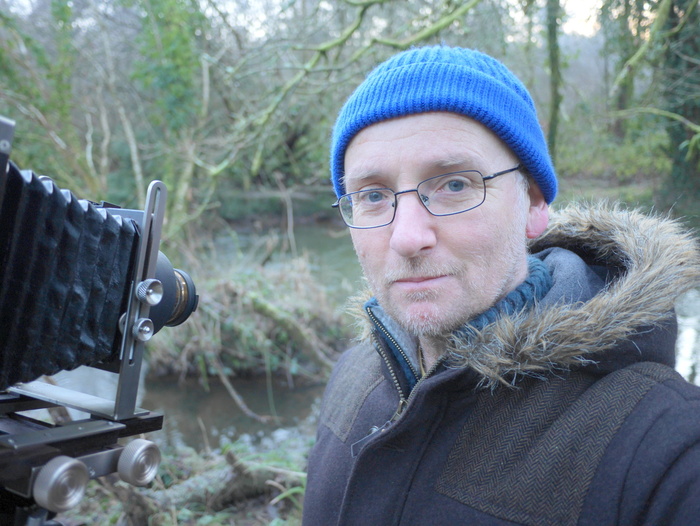
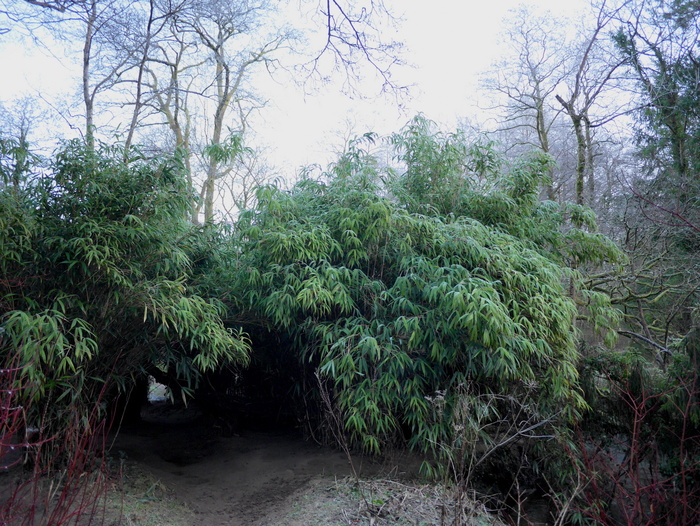
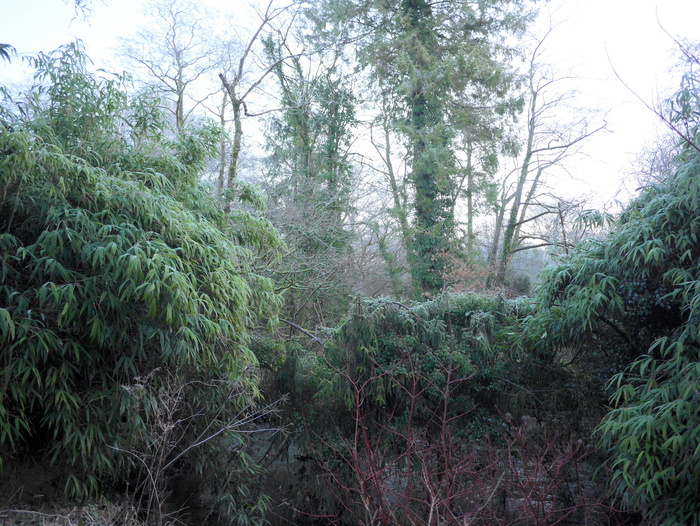
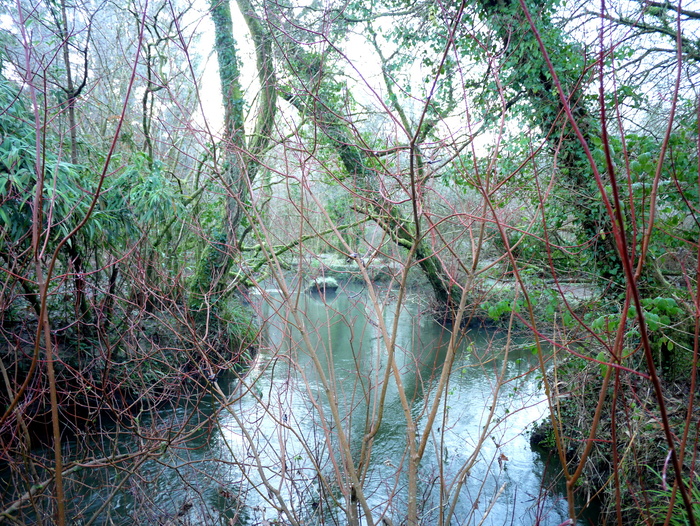
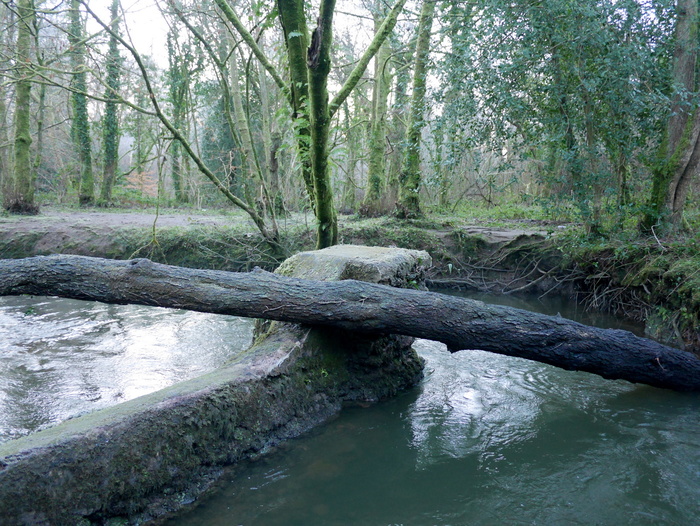
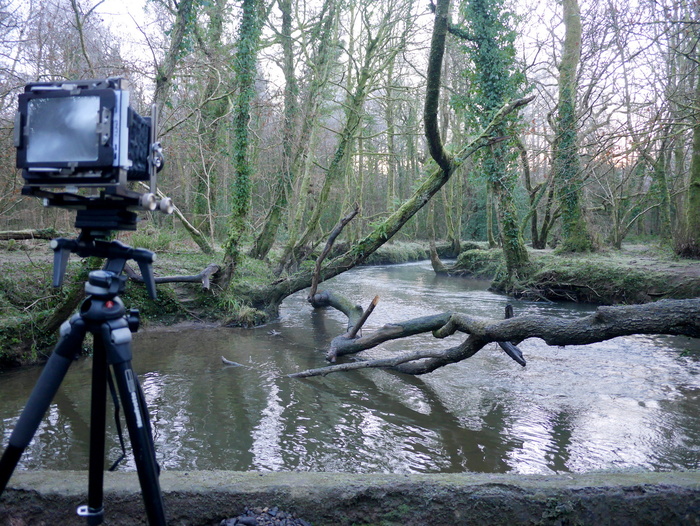
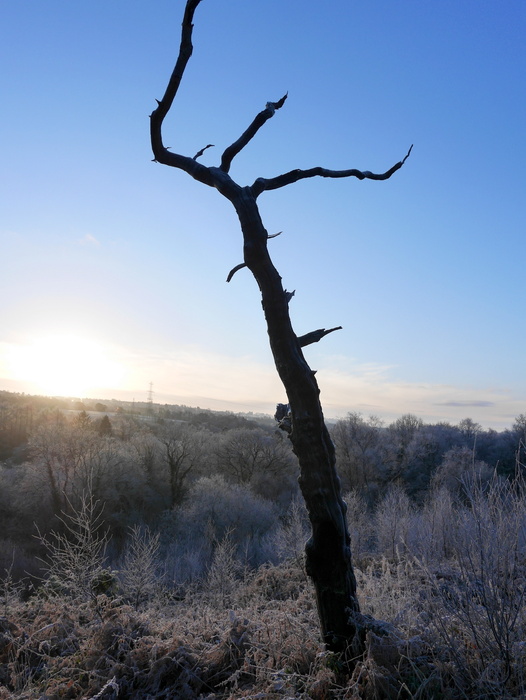
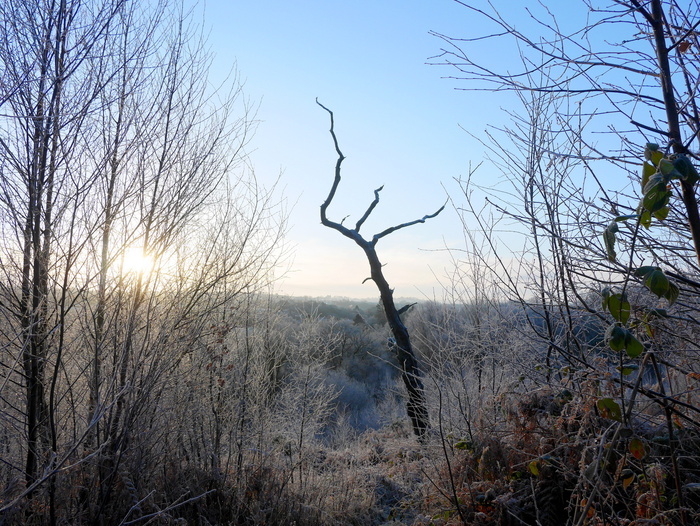
The black and white were taken using a Beck Symmetrical 8inch lens - exposures varied from 4 minutes to approximately 15 seconds. Aperture F22 - F45. The Beck lens is very sharp once stopped down but the maximum aperture of F8 meant it was quite difficult to focus in the dim morning light.
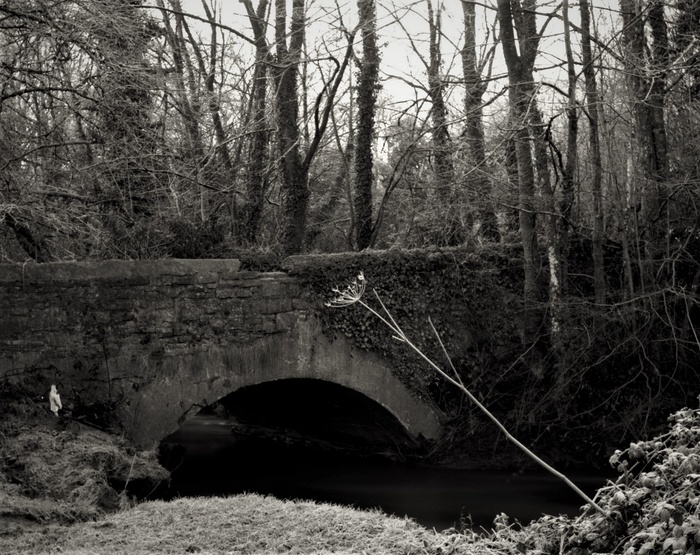
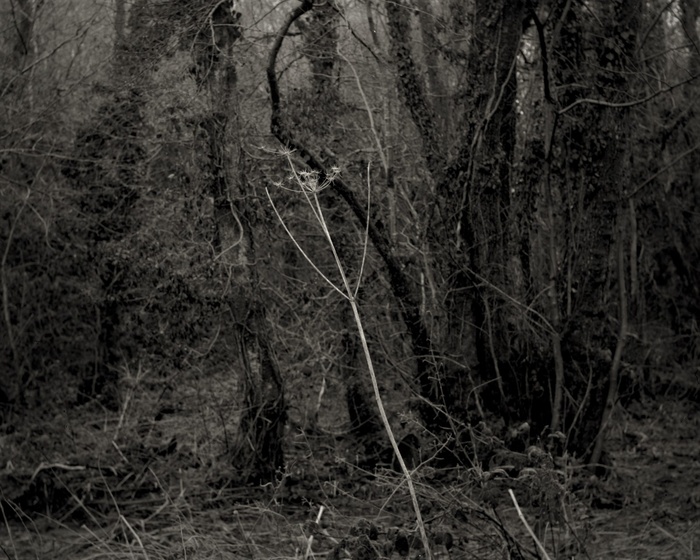
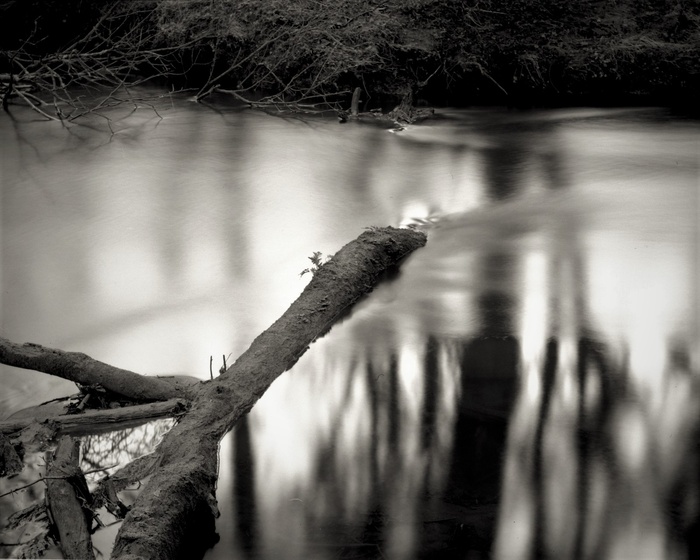
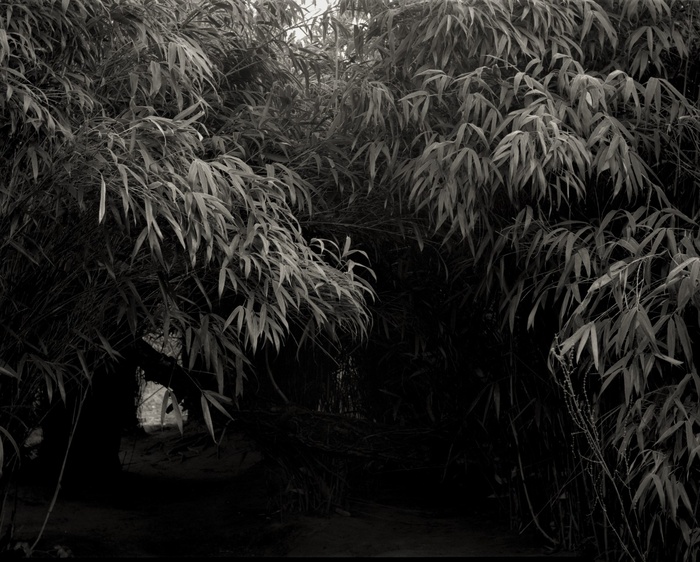
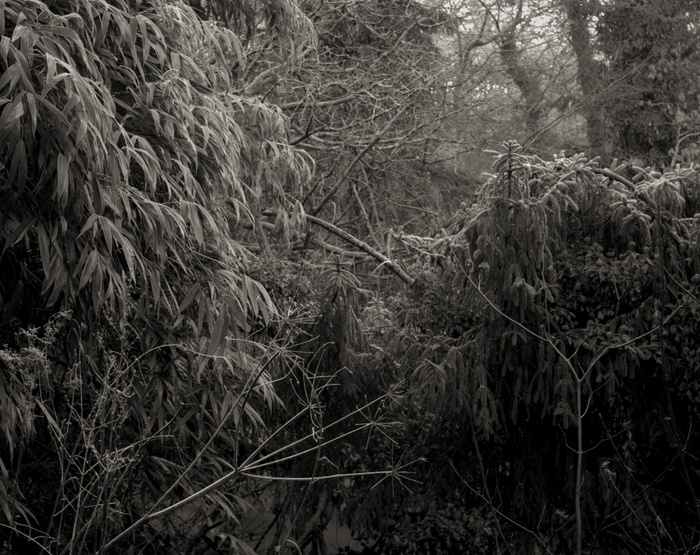
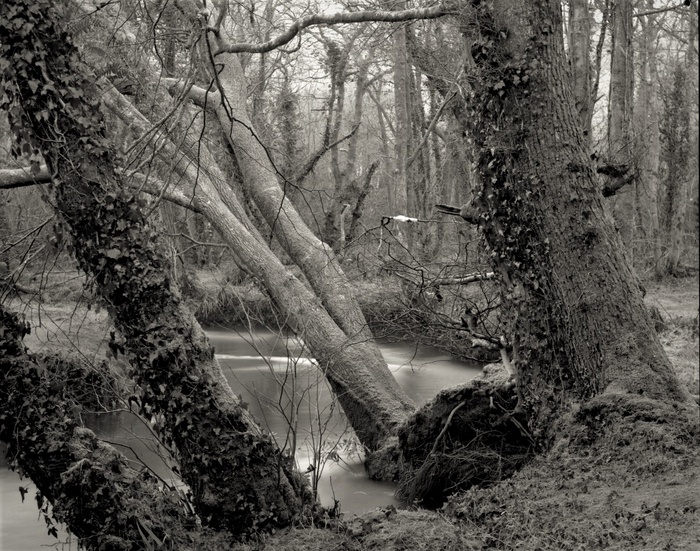
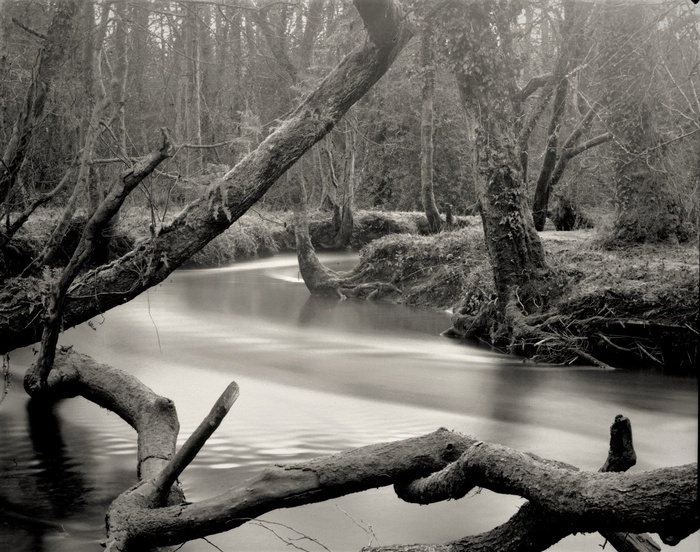
24th January 2021 - A little snow at last in Swansea!
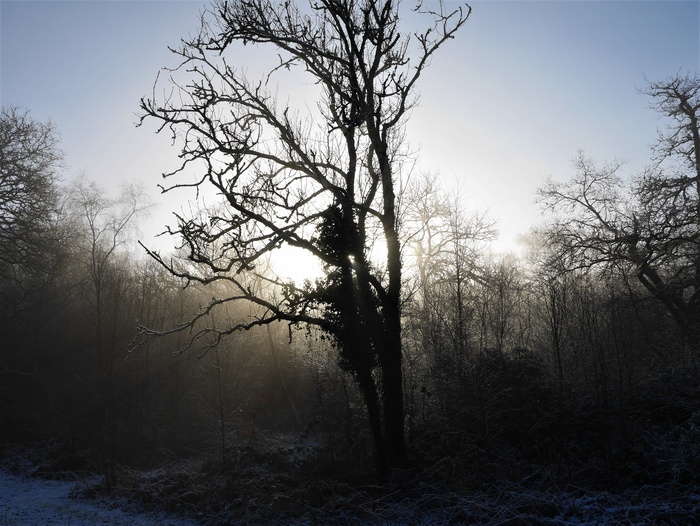
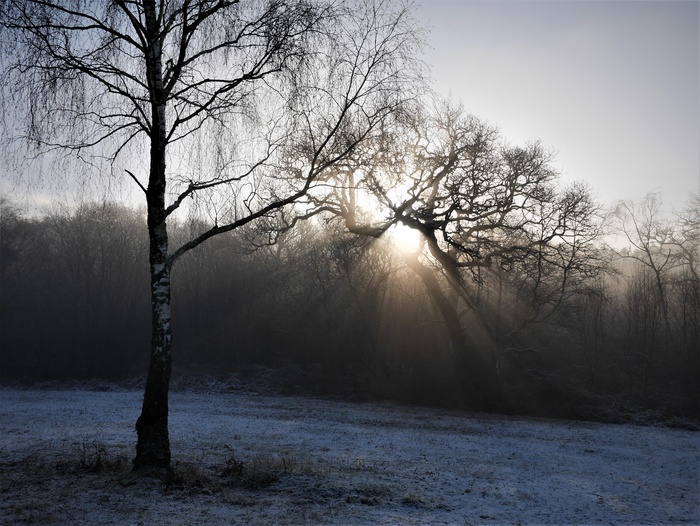
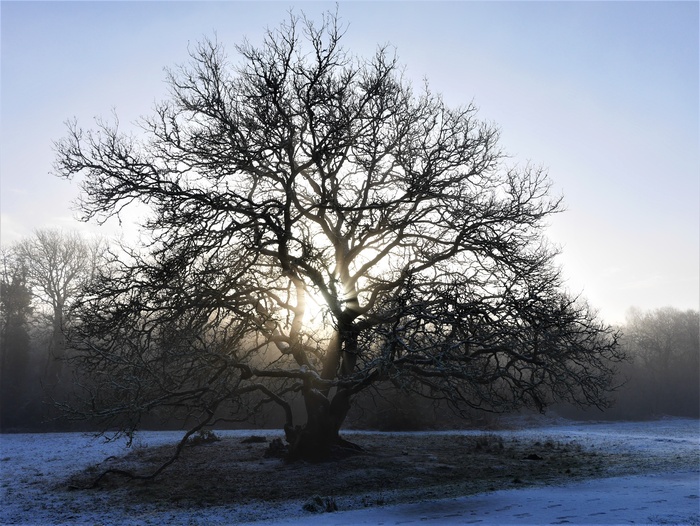
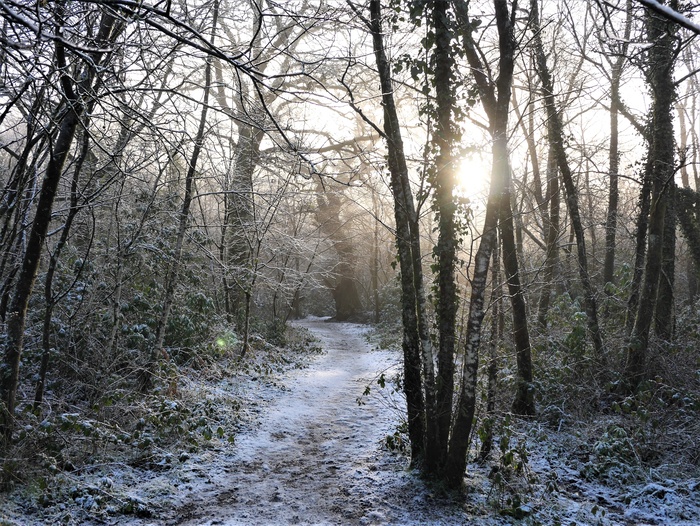
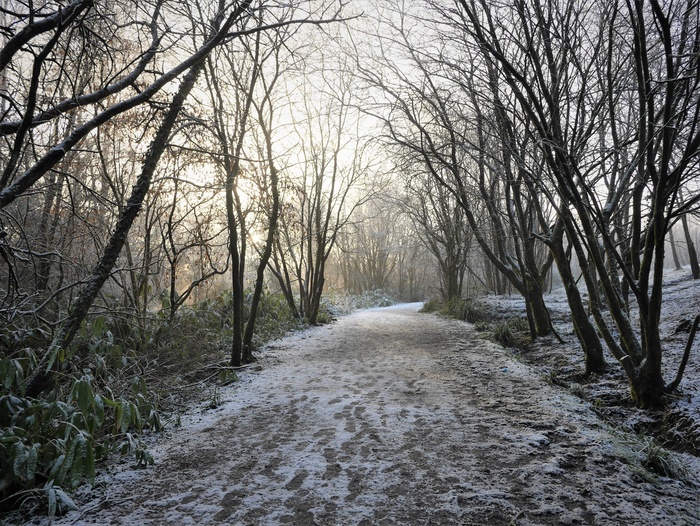
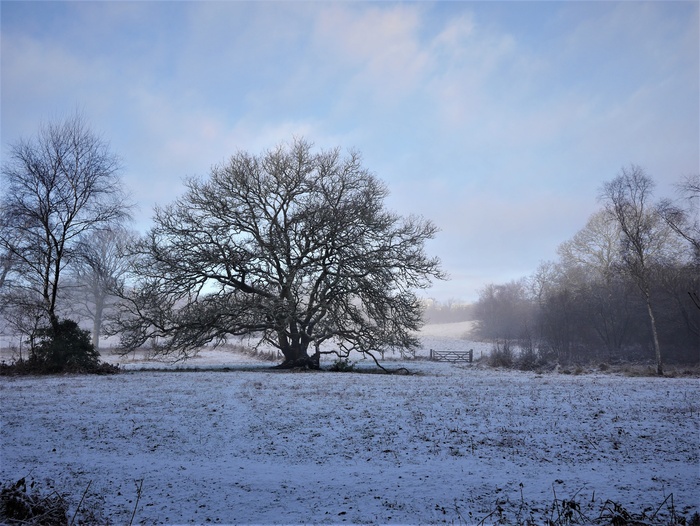
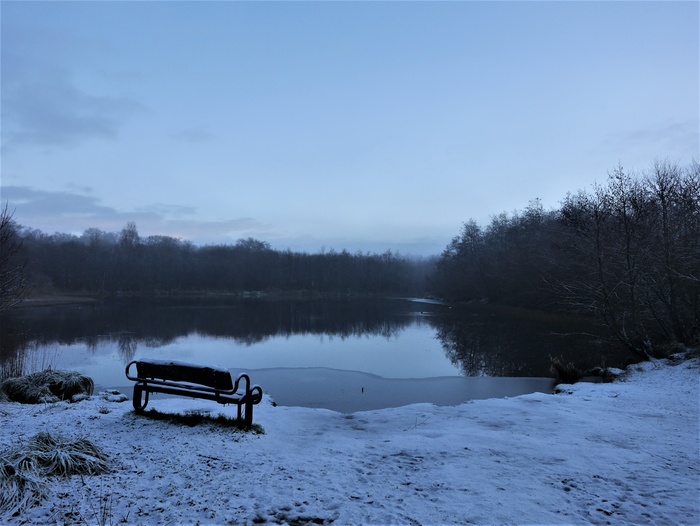
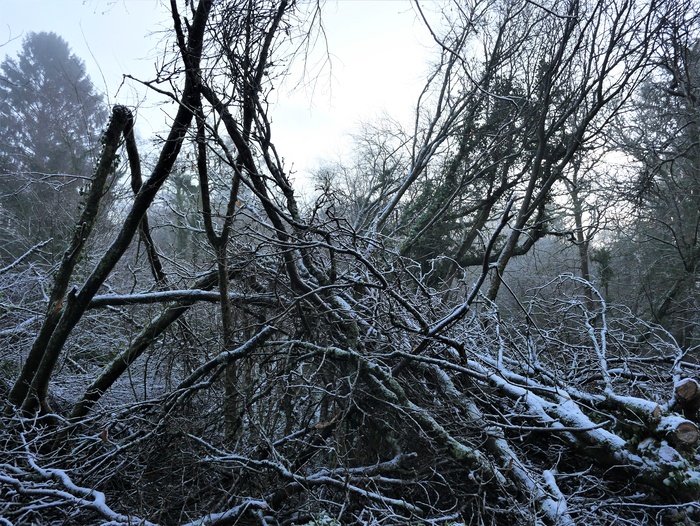
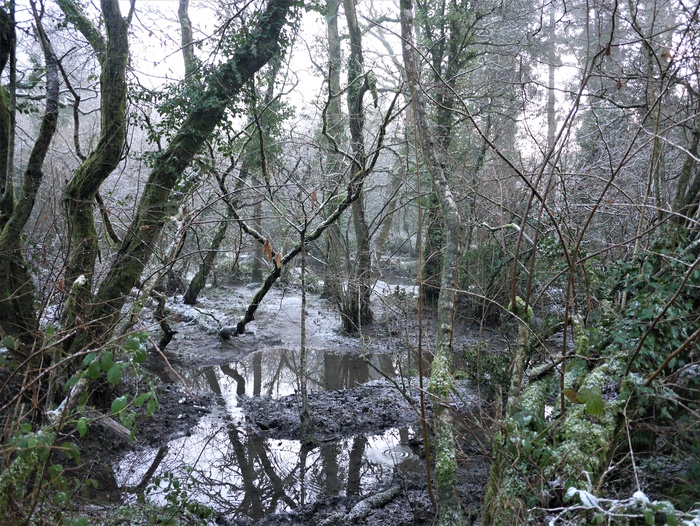
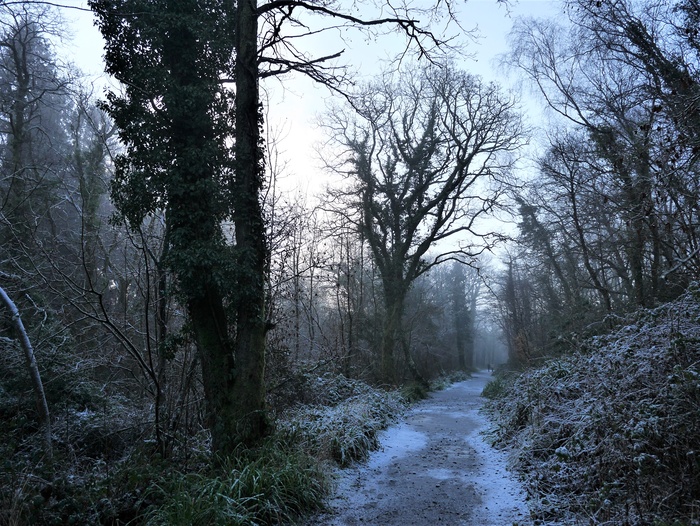
The black and white images were taken using a lovely little Dallmeyer Stigmat 6.4inch F6 brass lens and at F32 for approximately 1 second to 4 seconds. Images of the lens are here, lovely bright image on ground-glass meant I could take some of todays images without disappearing beneath a focus clothe.
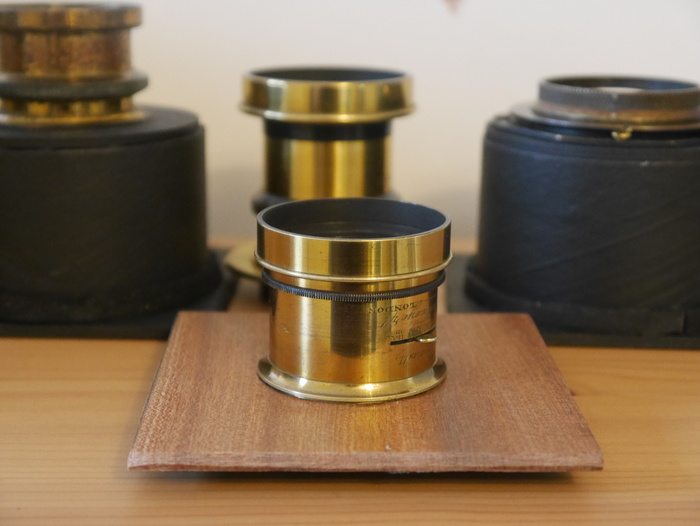
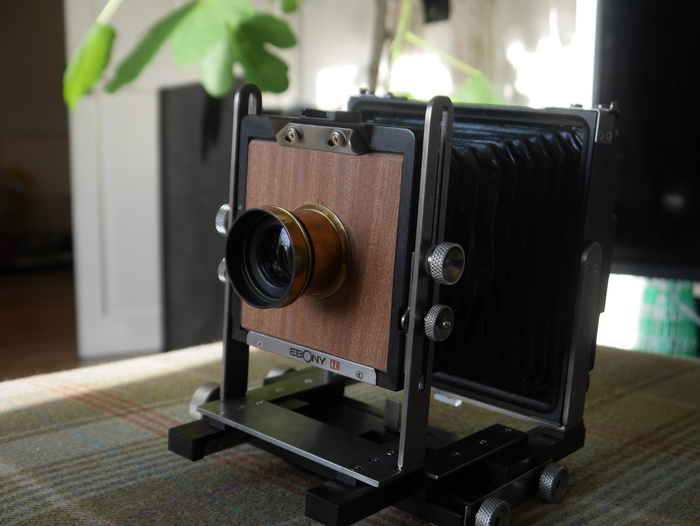
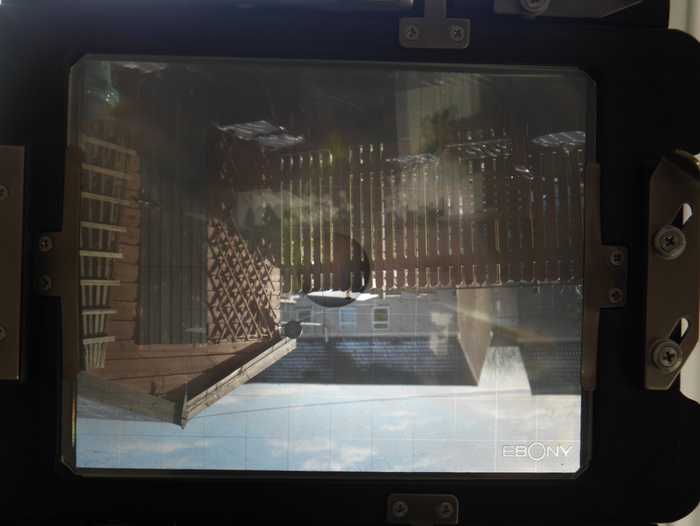
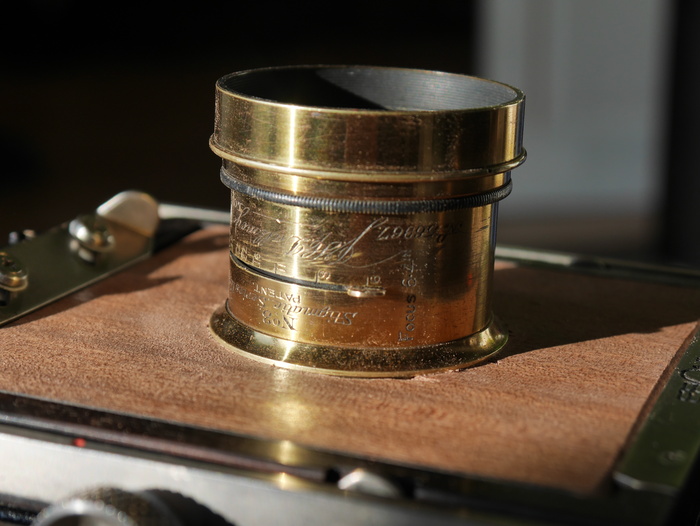
The black and white images below are a slight disappointment to me. There could be a number of factors for this; firstly it could be the lens. I had high hopes for this Dallmeyer lens - I think the jury is still out - two of the images were shot directly towards the sun. Any brand new lens struggles with this, and to expect a lens over a hundred years old, before the invention of coating lens surfaces to reduce flare etc...
Secondly, I had never seen Penllergaer Woods look so beautiful! A light snow fall had reached every part of the forest, a low light mist hung between trees and the whole place had an air of a fairy-tale. It was a beautiful morning. However my preferred weather is that of cloud, deep cloud. On cloudy days there seems there's a whole extra spectrum of grey tones... which leads to my third reason for my disappointment; a change of film stock. All the previous images were taken with FP4 (albeit out dated) but these four images were taken using Fomapan 100. I've never been the greatest of fans of Fomapan but it's cheap, almost half the price of its counterparts. I also noticed the negatives had drying marks - not something I normally have issues with. I think from now on I will spend a little extra and use either Ilford or Kodak film.
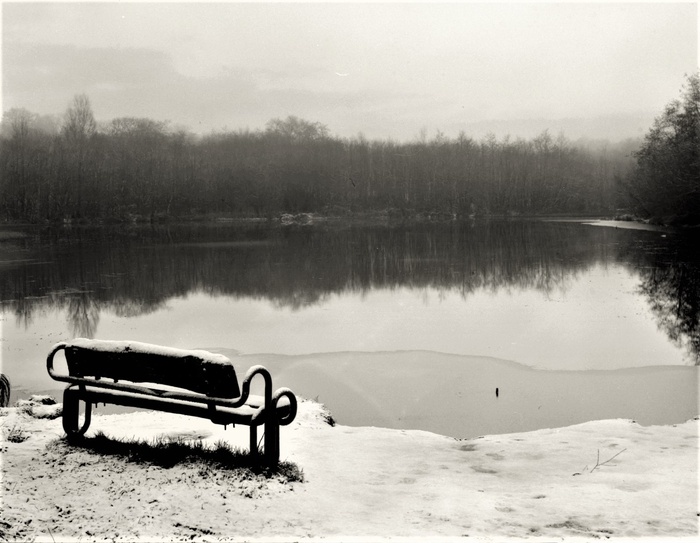
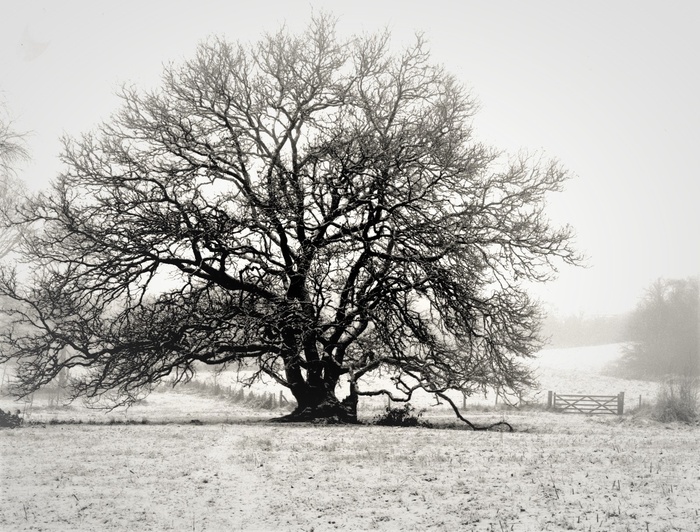
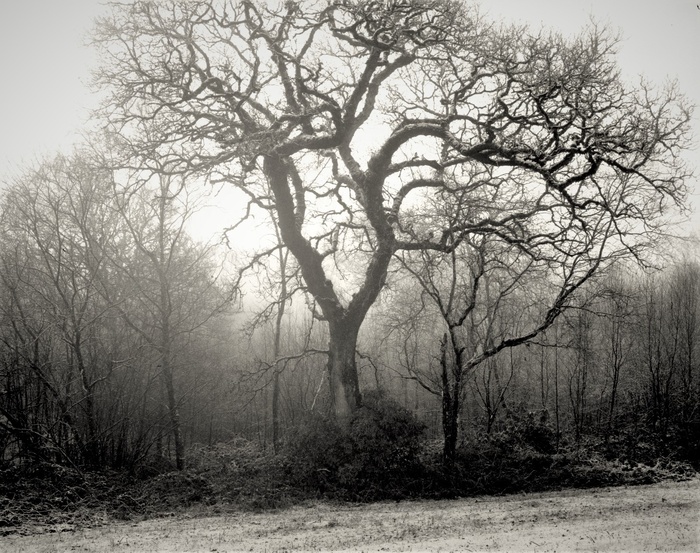
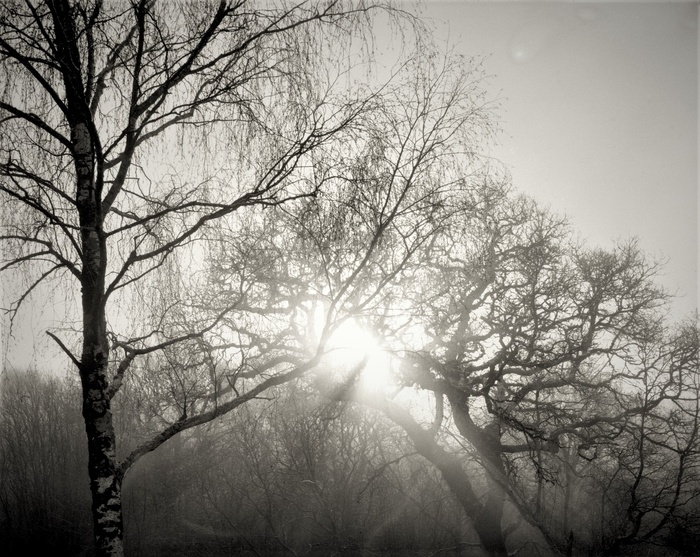
I have not given up on this Dallmeyer lens. I think it deserves another chance. It should also be noted that the exposures were quite short - 1 second to about 4 seconds. Using the lens cap as a shutter has it's own pitfalls with such short exposures. Next weekend, weather permitting, I'll return to Penllergare, early before sun up and expose more sheets and hope for improvements!
January 30th/31st 2021... a few colour images... black and white to follow shortly...
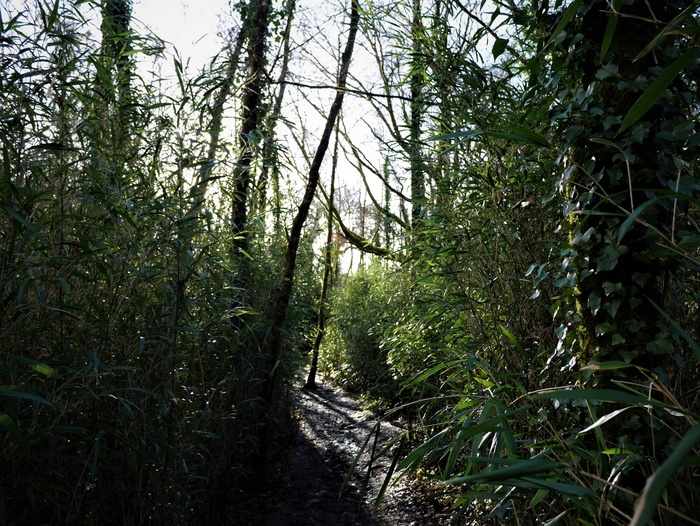
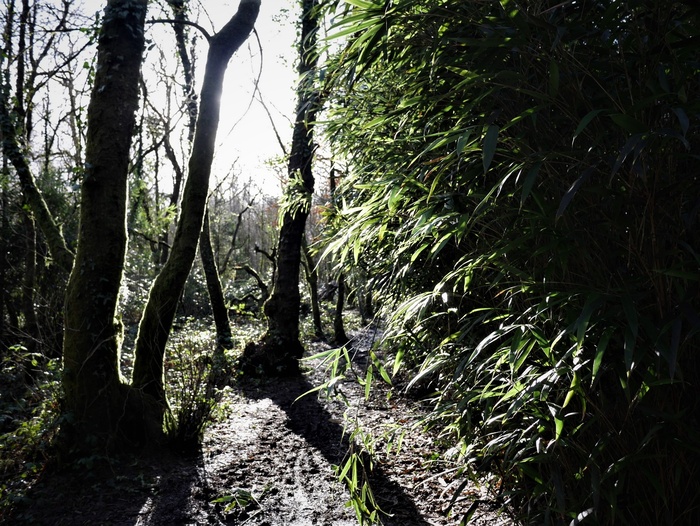
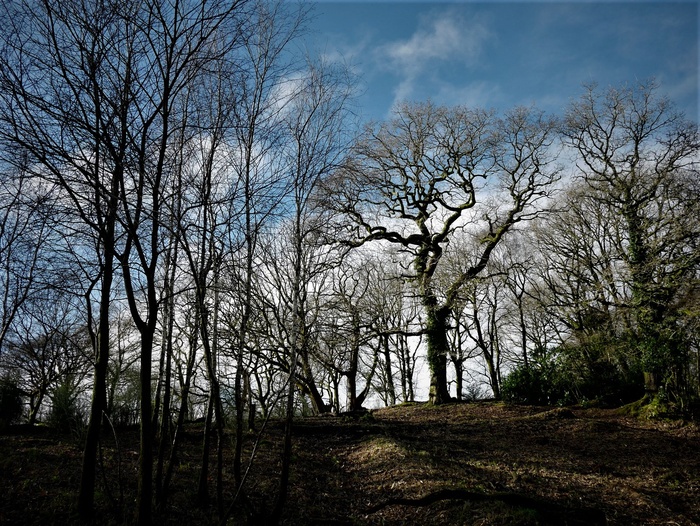
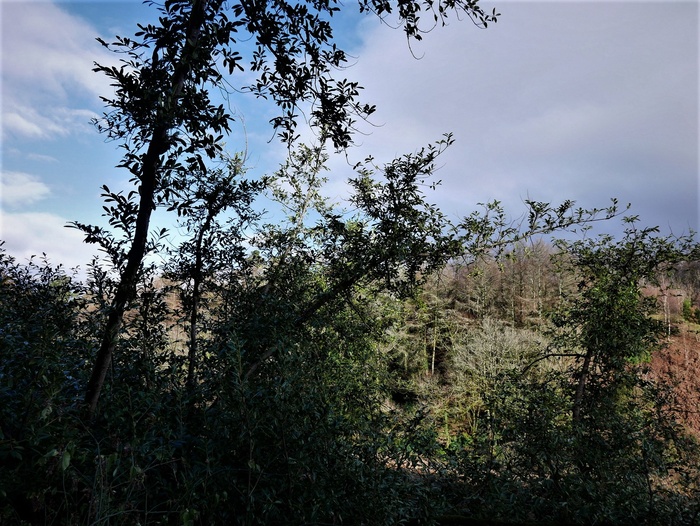
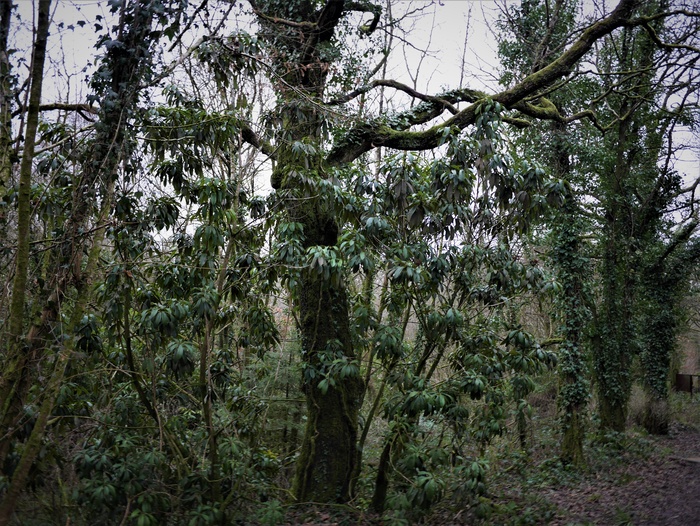
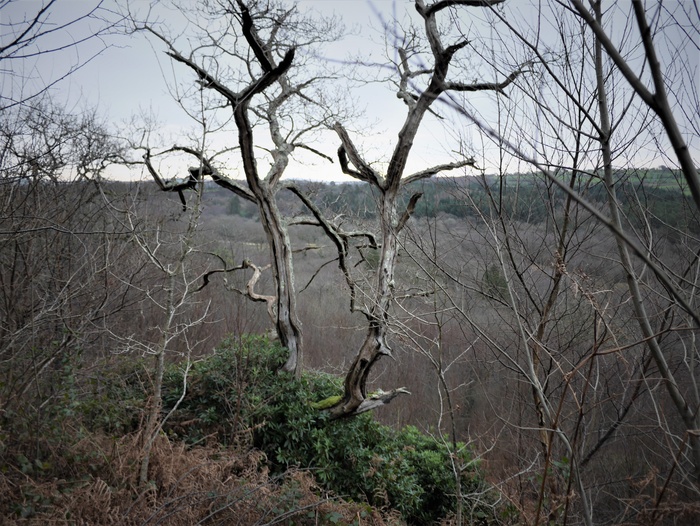
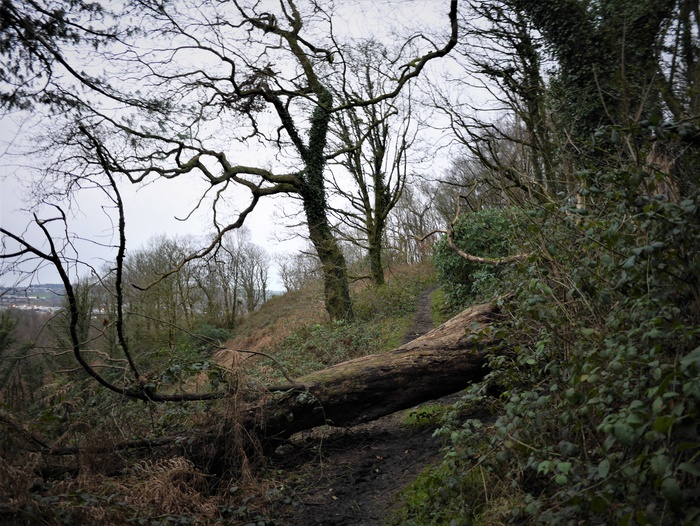
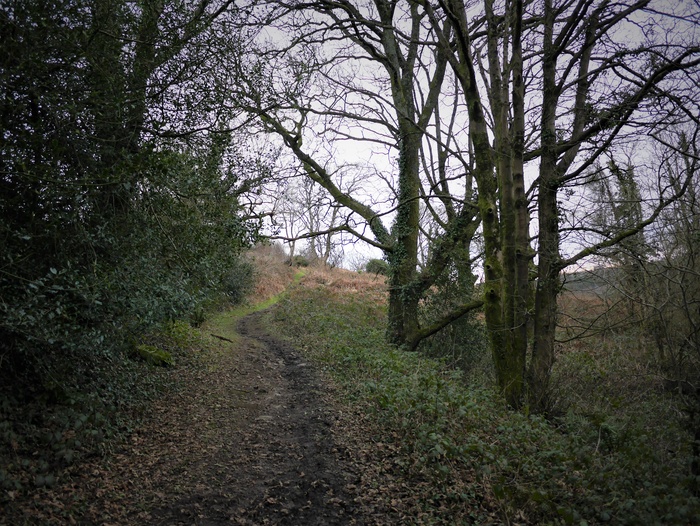
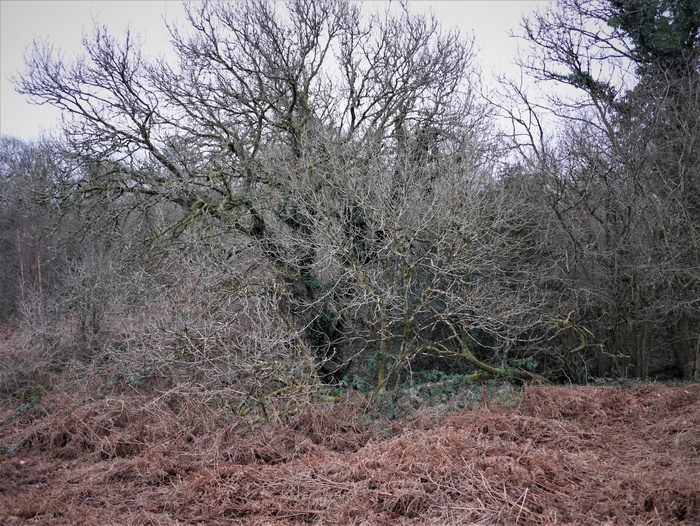
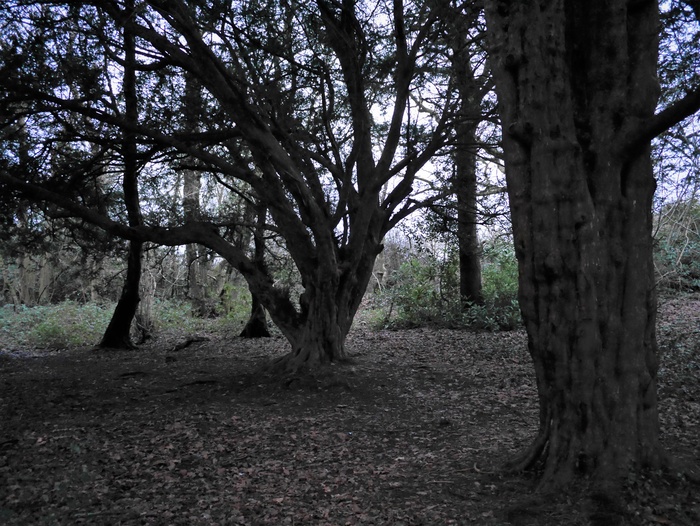
The first few images were taken with this Emil Busch Aplanat 8inch lens on a very windy day...
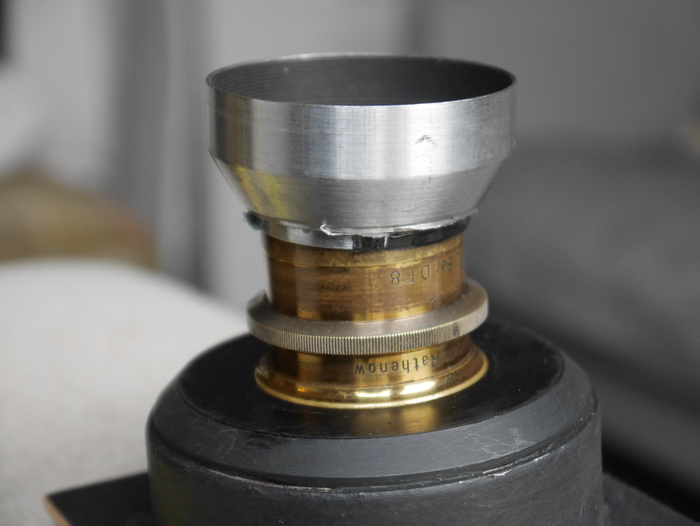
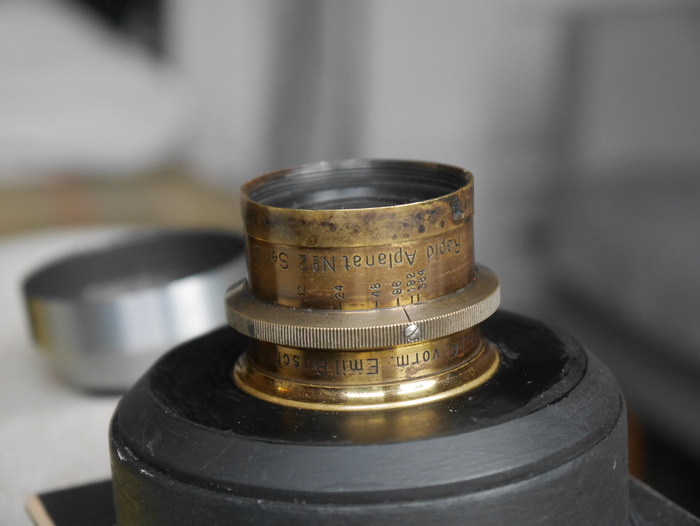
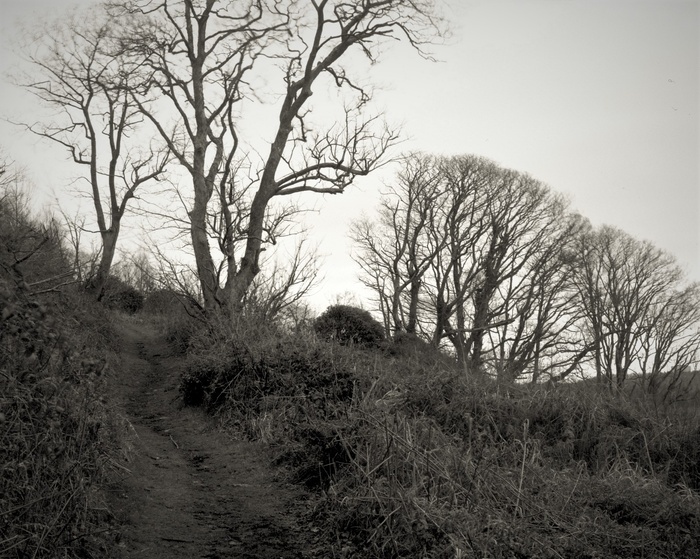
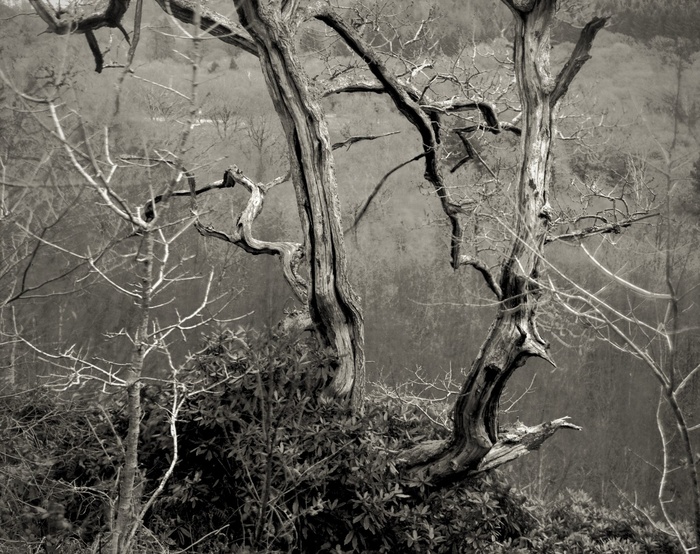
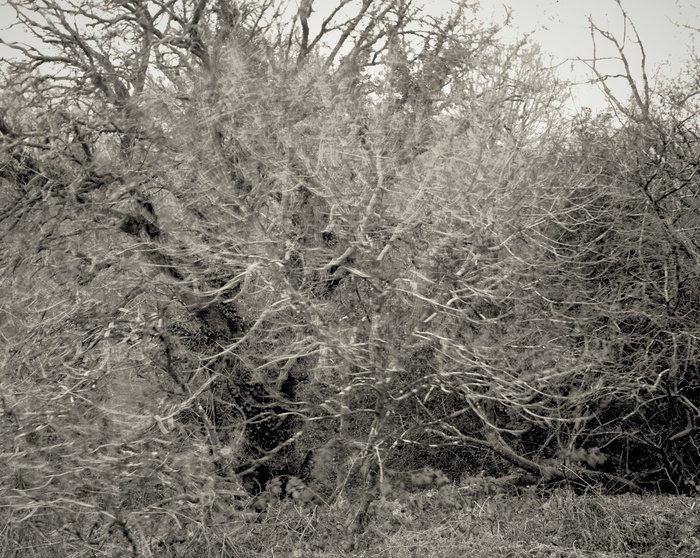
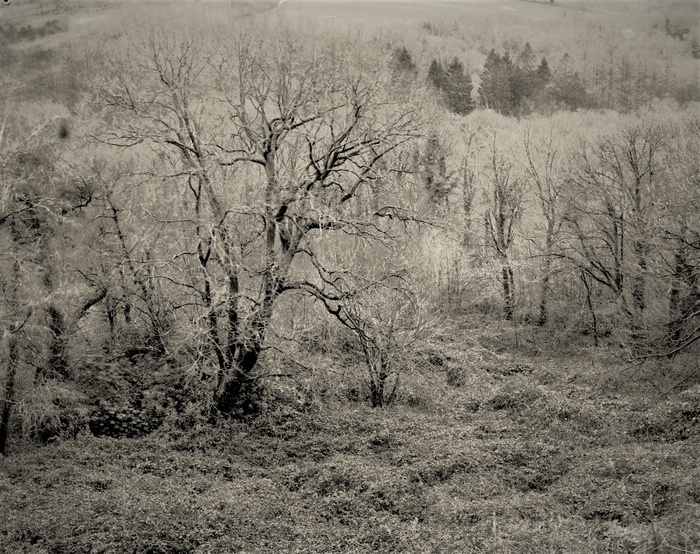
Still need some testing with this lens. It's difficult to gauge it's sharpness, although I acept sharpness is not the only attribute to a lenses performance and usefulness.
The next few are from the Dallmeyer Stigmatic which performed a little better this time around most likely due to the subject matter...
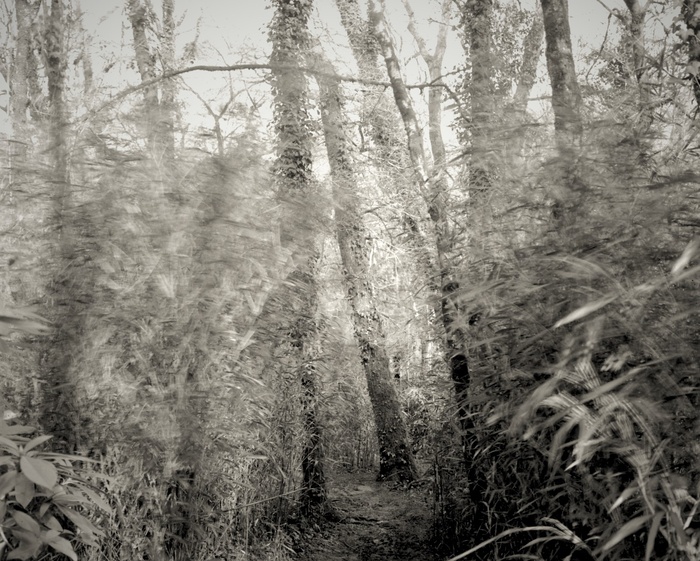
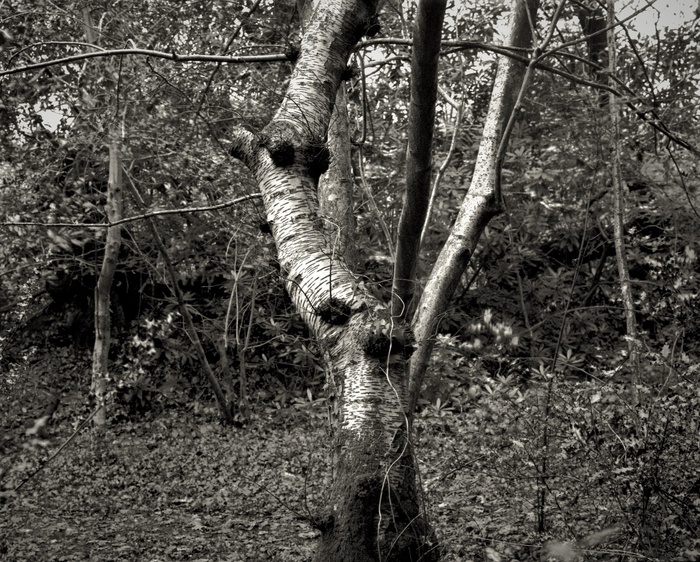
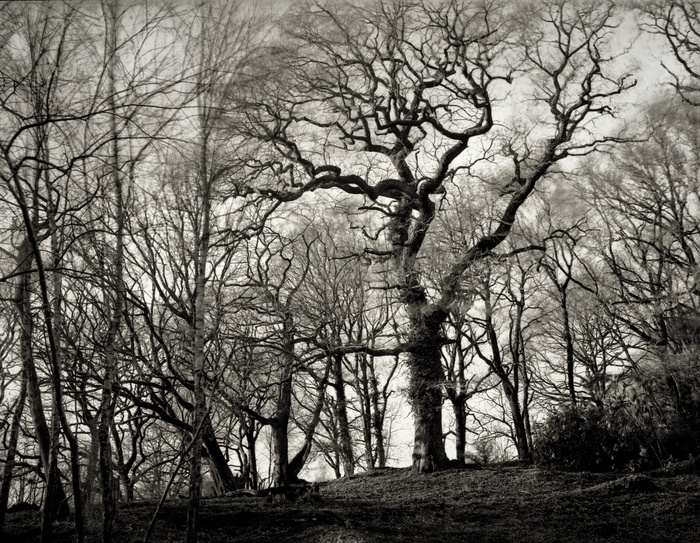
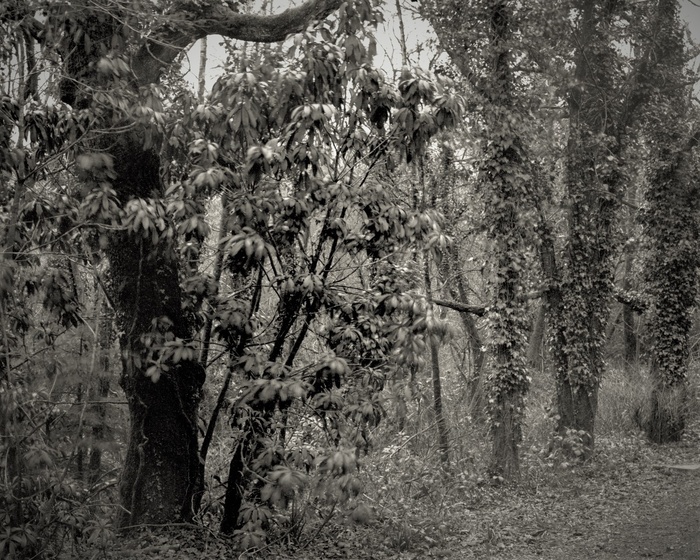
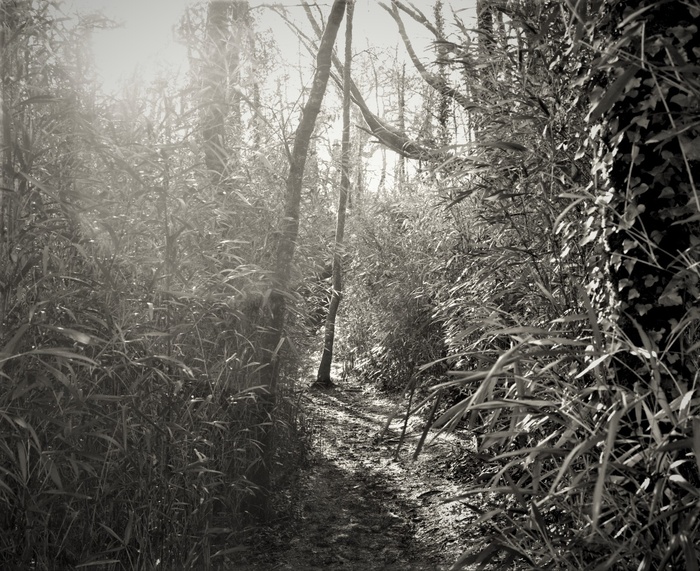
Day off - mid-week 3rd February 2021 - tough day - walked to Penllergaer Woods - visited the only ruined farm I know of in Penllergaer - Bryn-sil - it's a little off the beaten track and the track down is partially a stream. Black and White to follow...
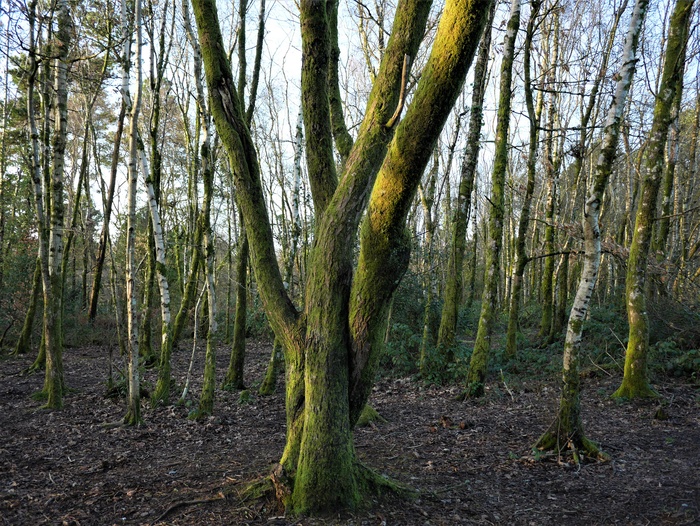
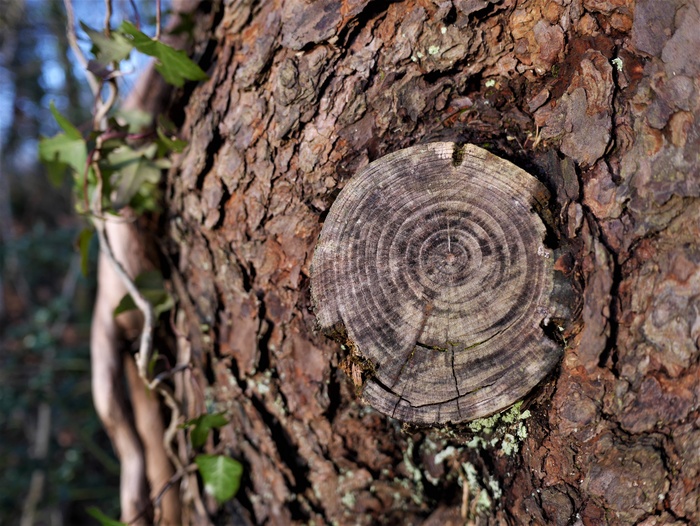
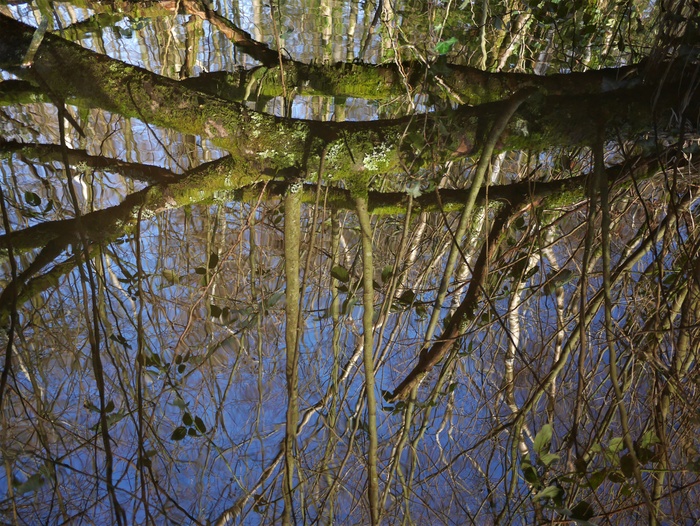
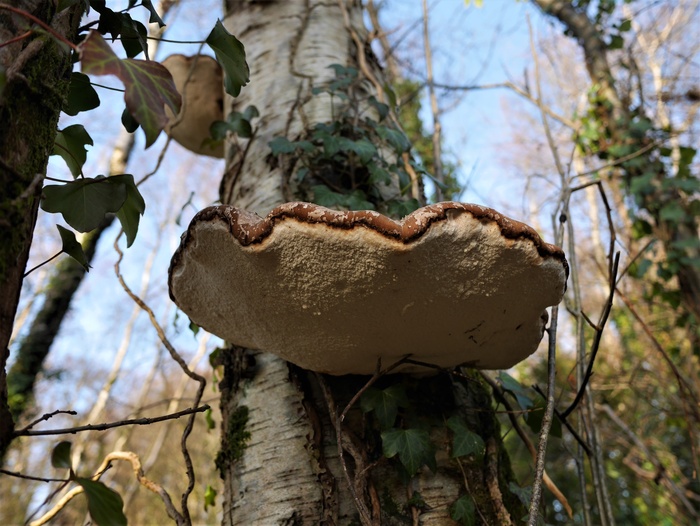
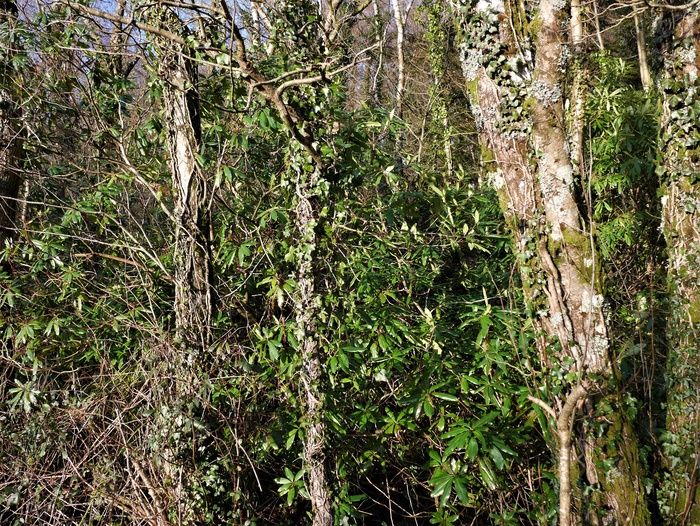
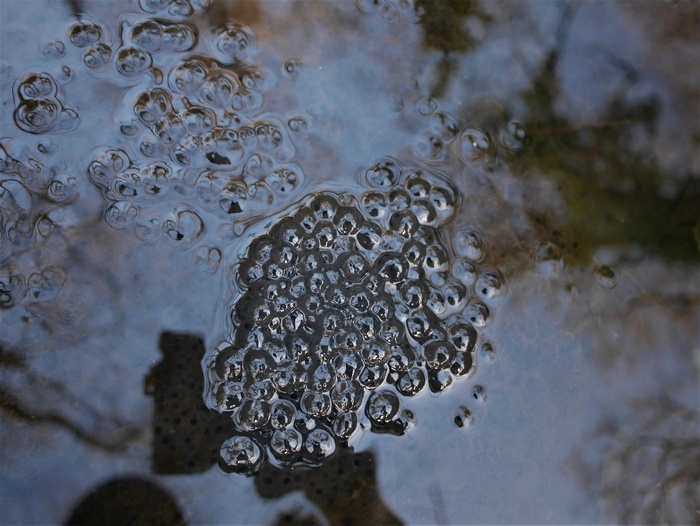
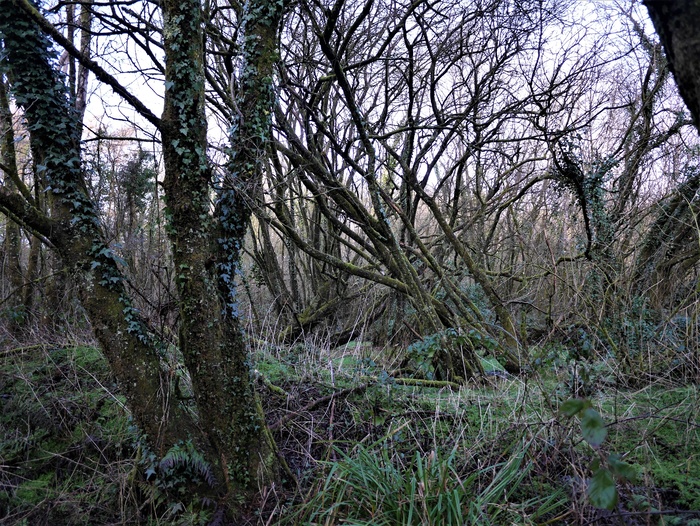
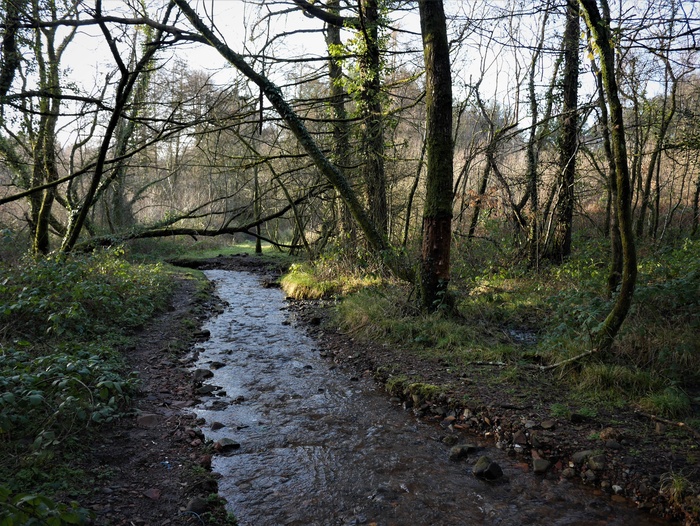
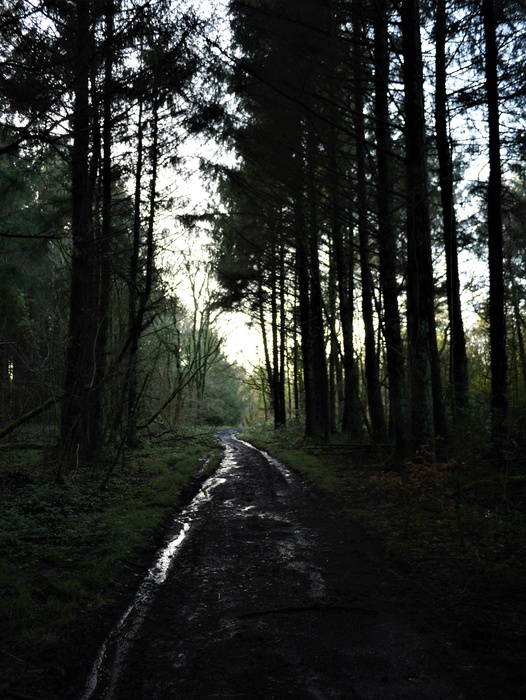
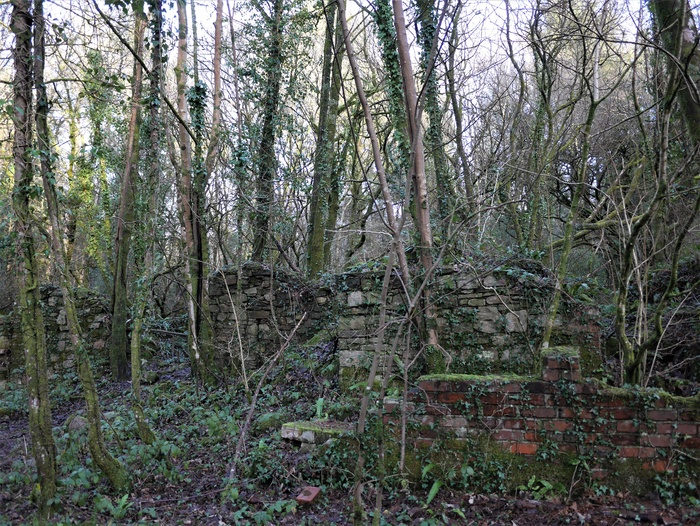
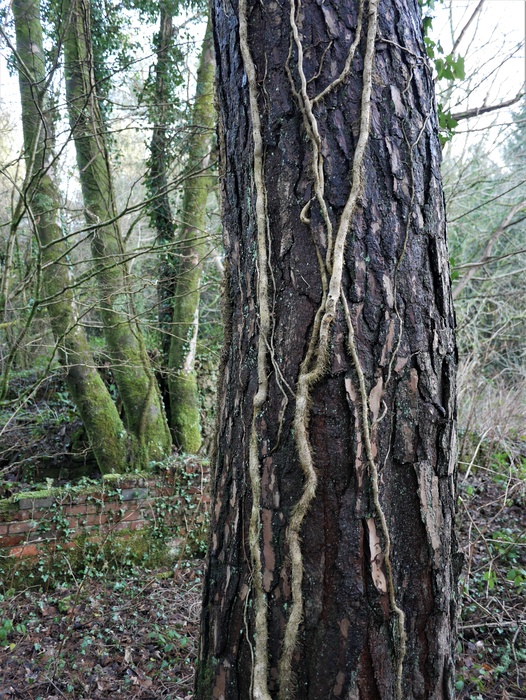
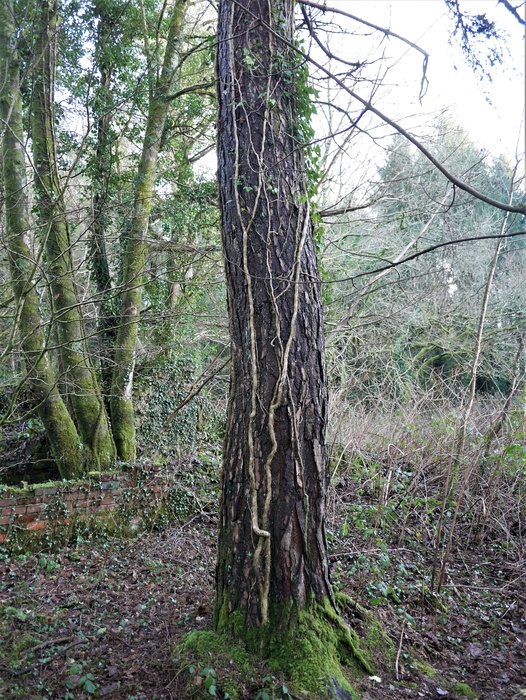
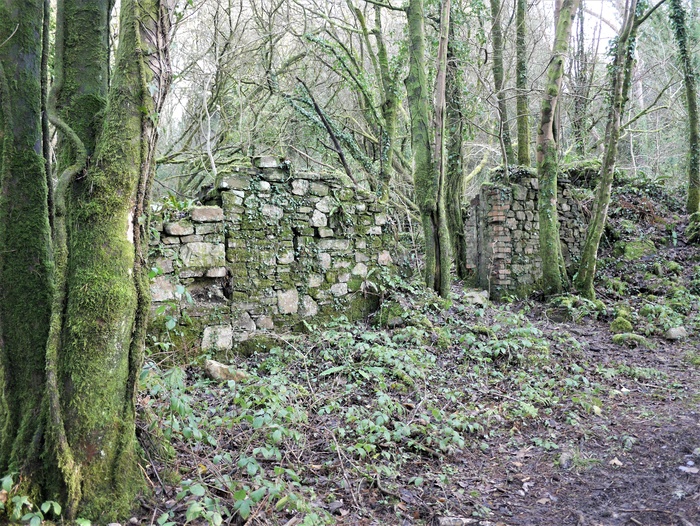
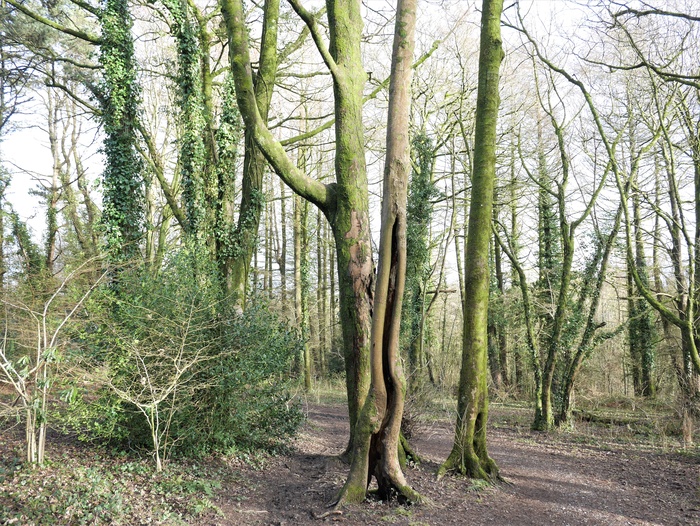
The black and white set were taken with a Cooke Aviar which I have just noticed has some haze and also some strange marks which are possibly fungus - therefore detrimental to the final image - uncertain if it is fungus since the 'strands/lines' are criss-crossed very symmetrically. Uncertain what weird phenomenon this is!
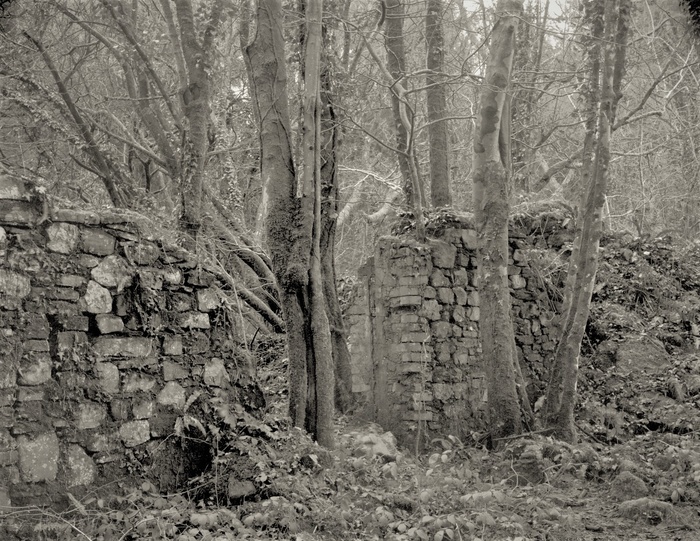
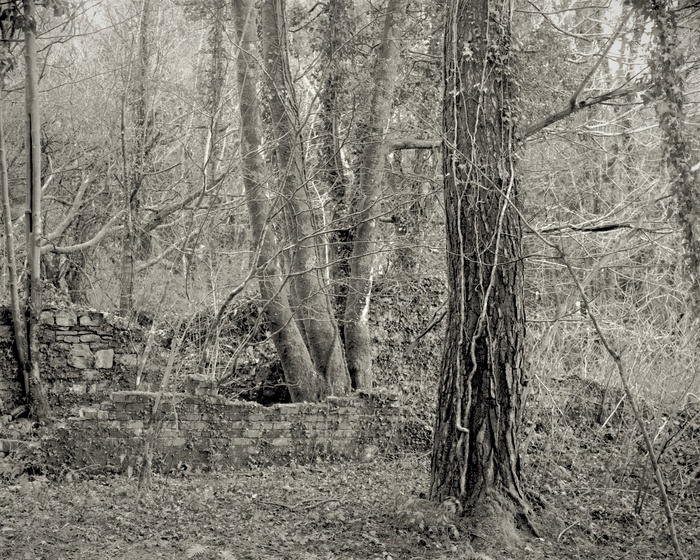
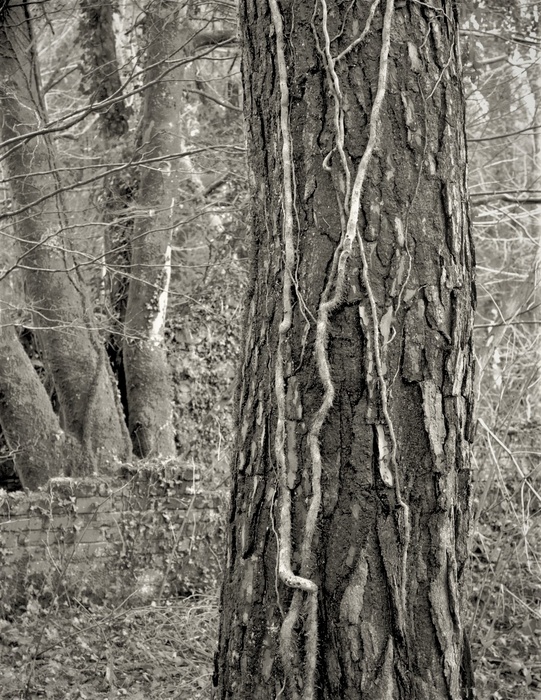
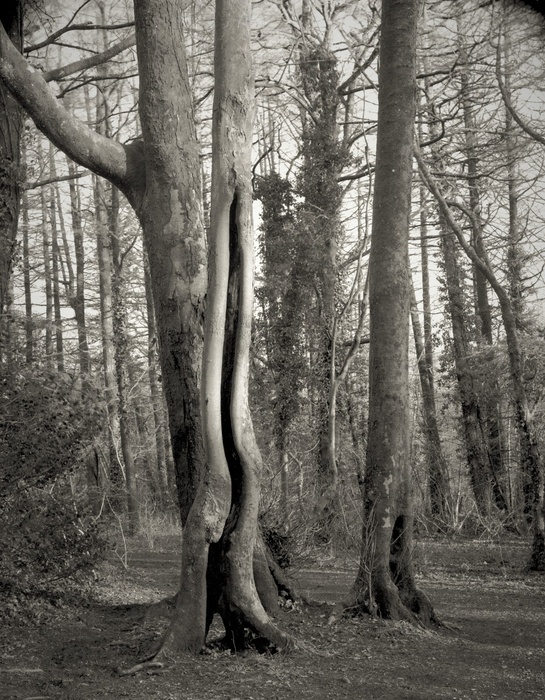
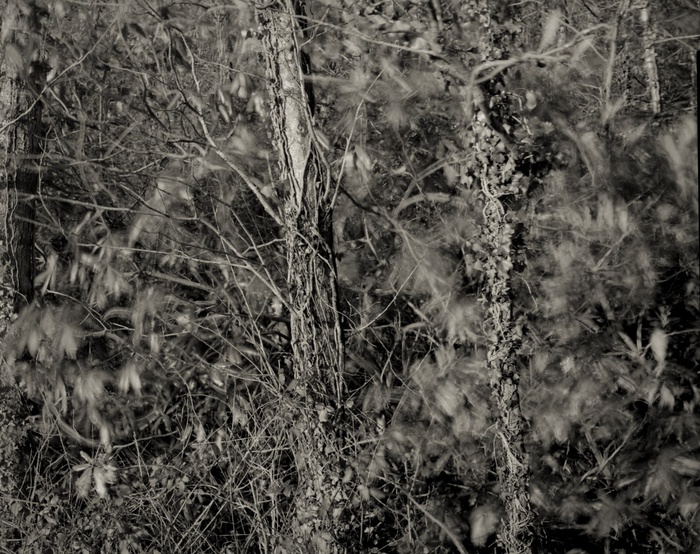
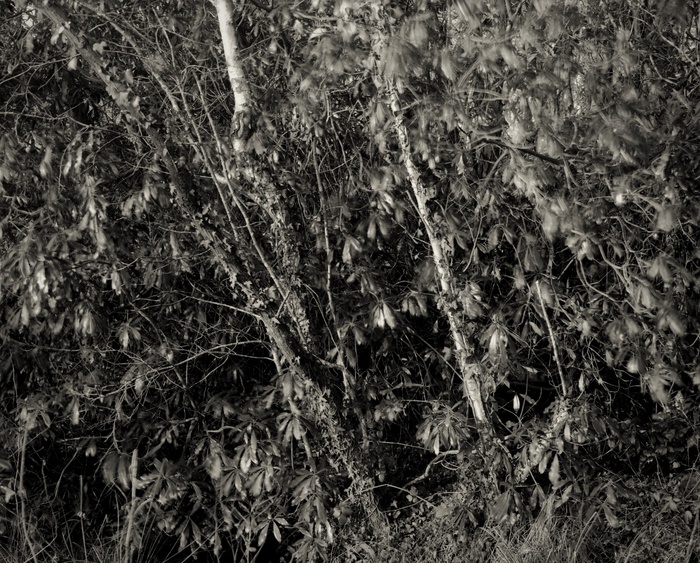
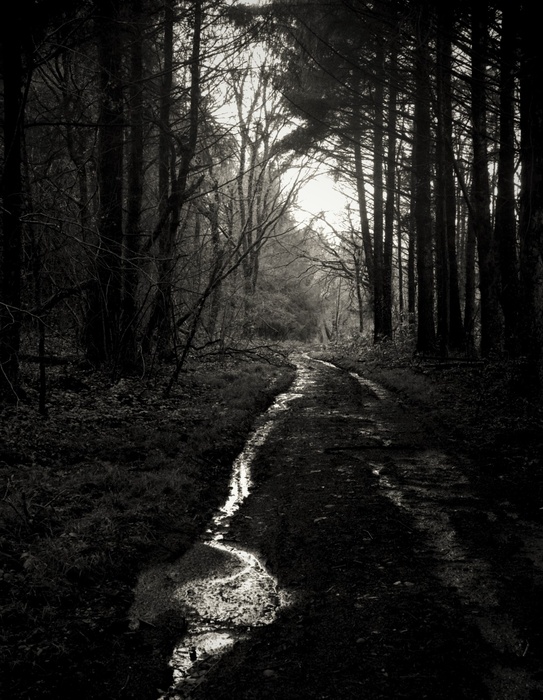
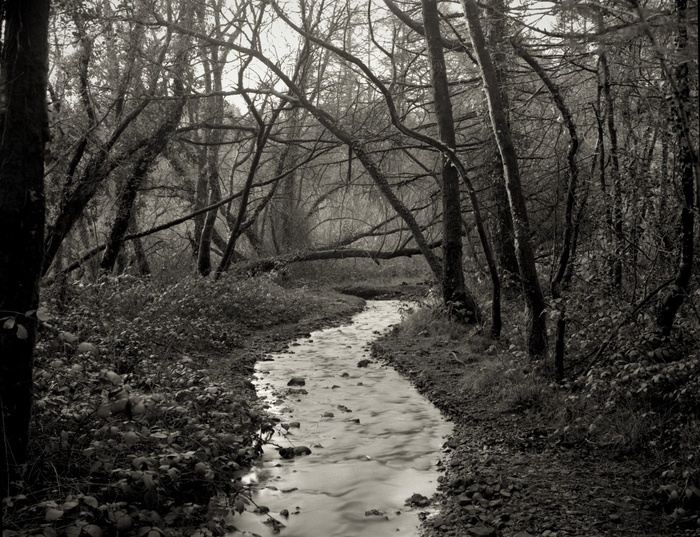
Next set: 7th February 2021
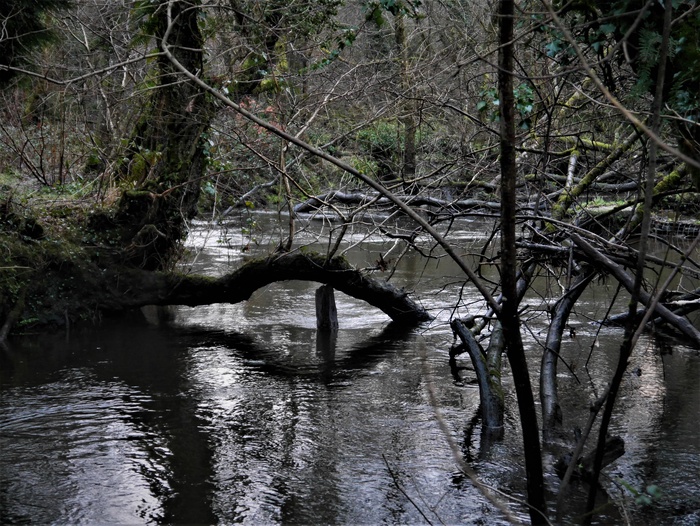
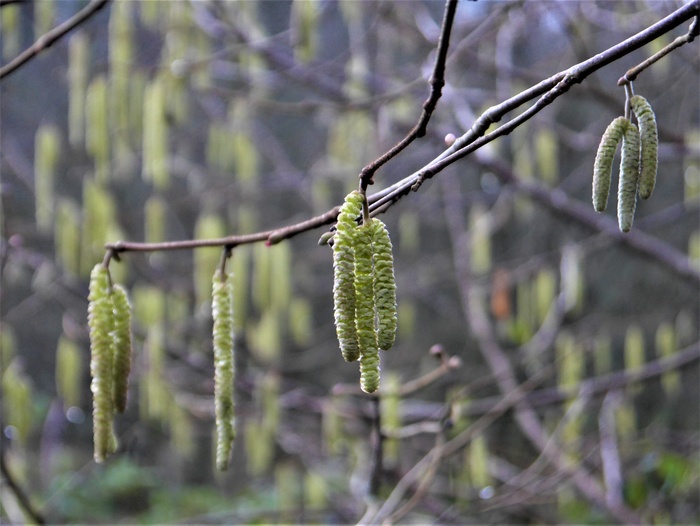
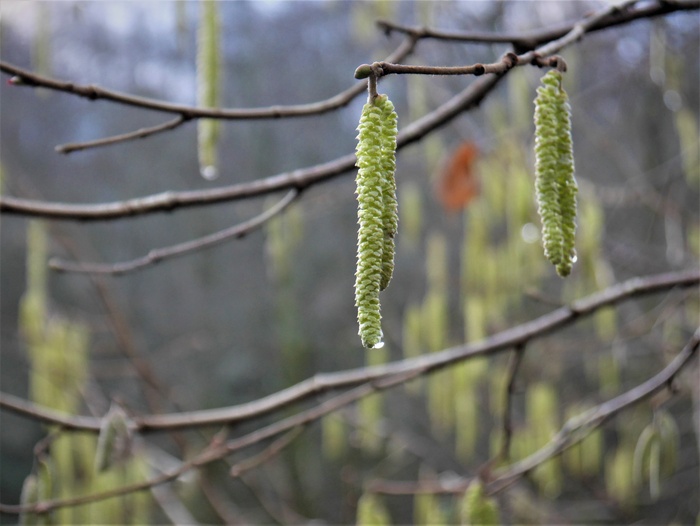
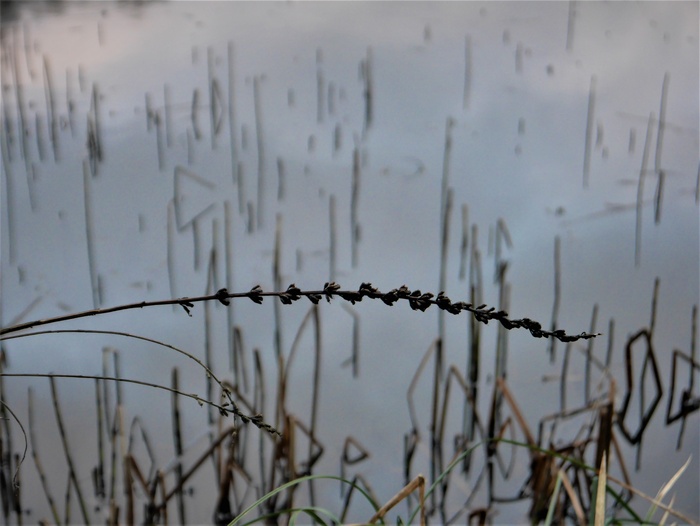
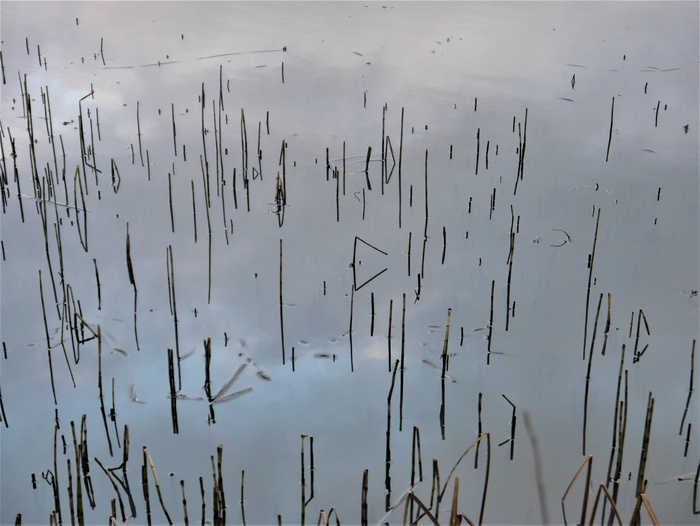
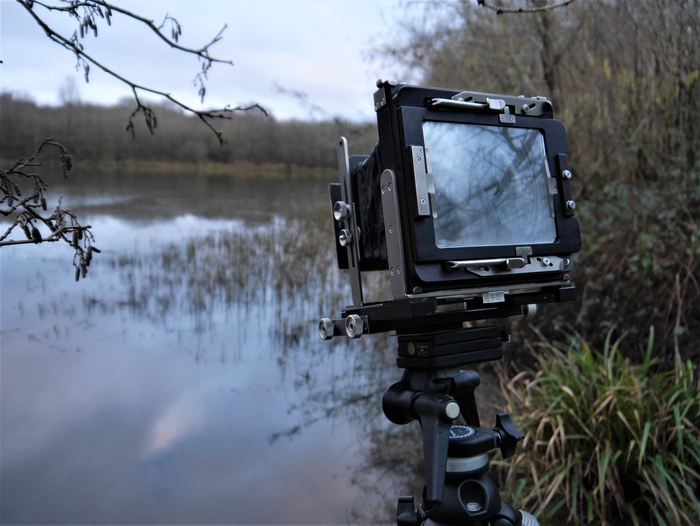
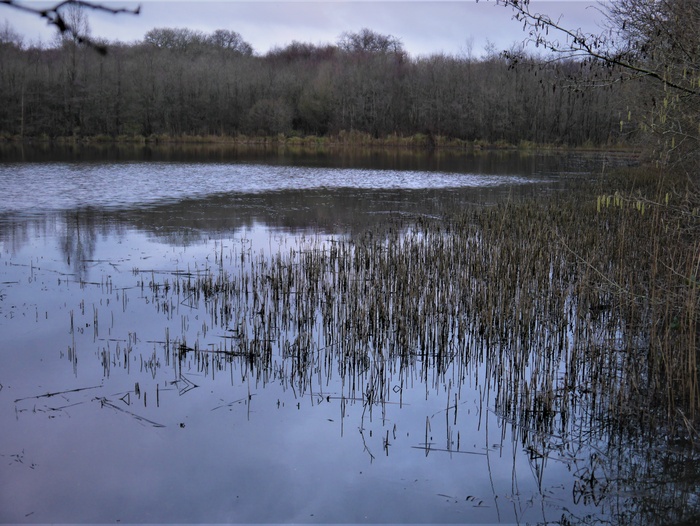
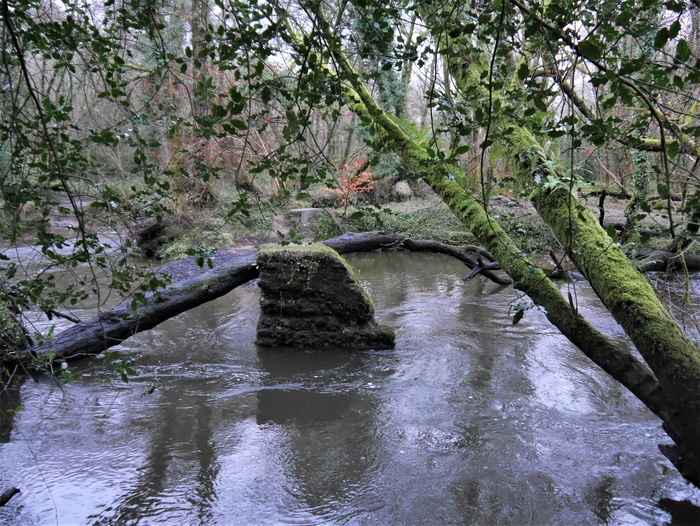
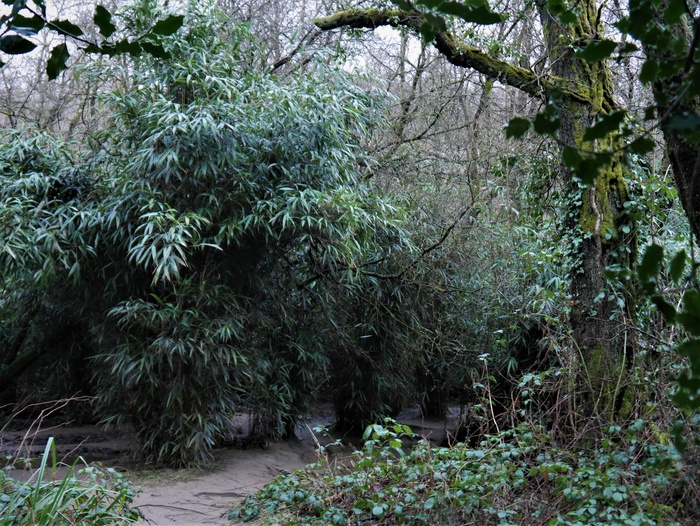
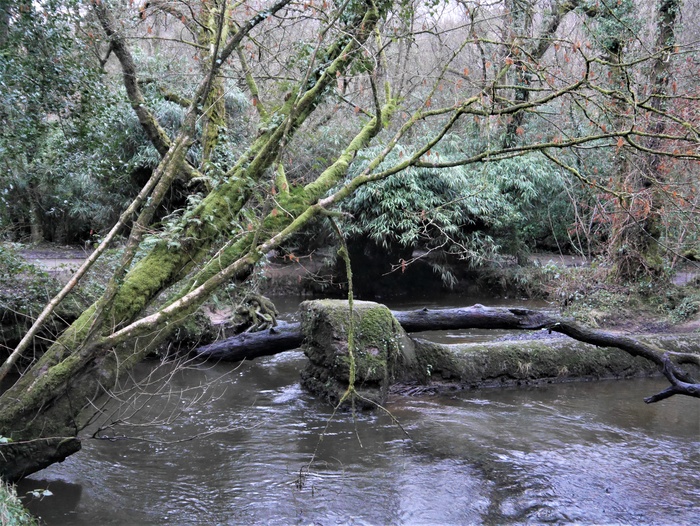
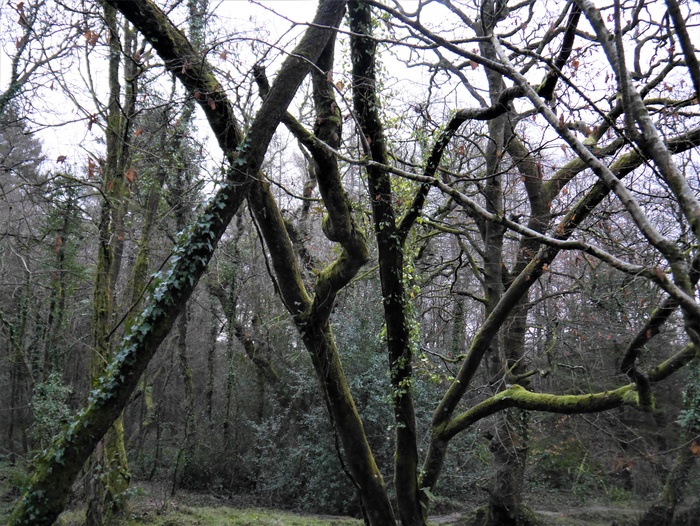
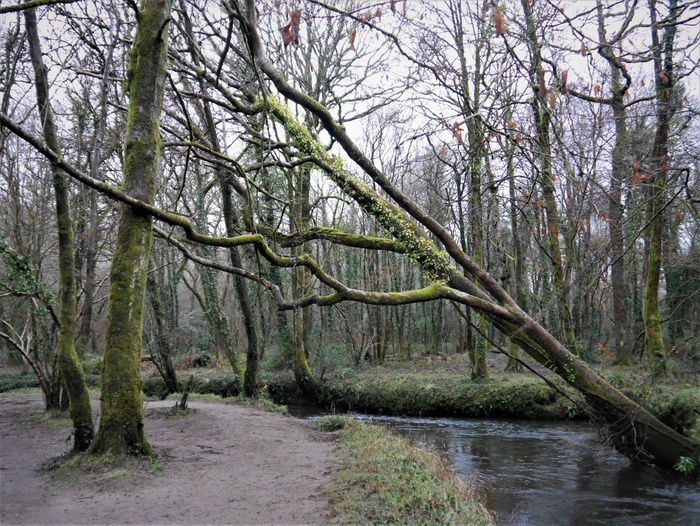
The black and white taken on 7th Feb 2021 were taken with a brass Goerz Dagor 210mm F6.8 lens - a well regarded lens - however my very cheap version purchased on eBay (£15) has an awful lot of dust, some blooming on the front element and yellowing of the optics (unless this is Thorium glass - which I doubt if it is!)... However, the negatives are nice looking, lacking contrast - which I've increased when scanned, and I think when I can find a better example the Dagor is definitely one to keep.
Exposures varied at F22 from 15 seconds to approx 45 seconds.
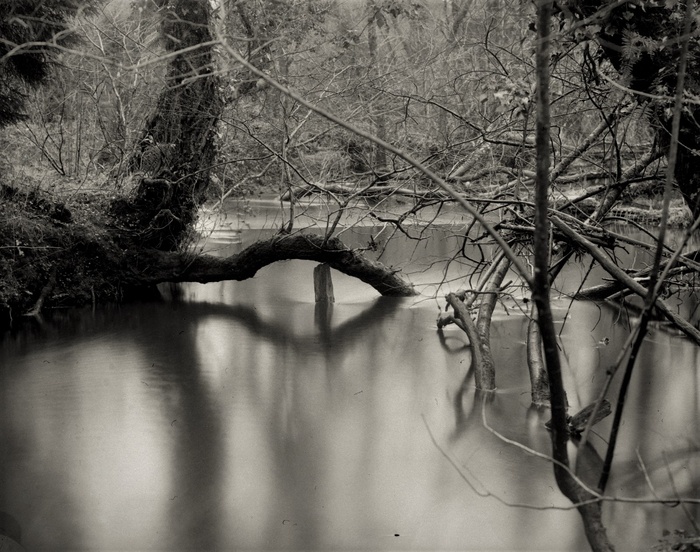
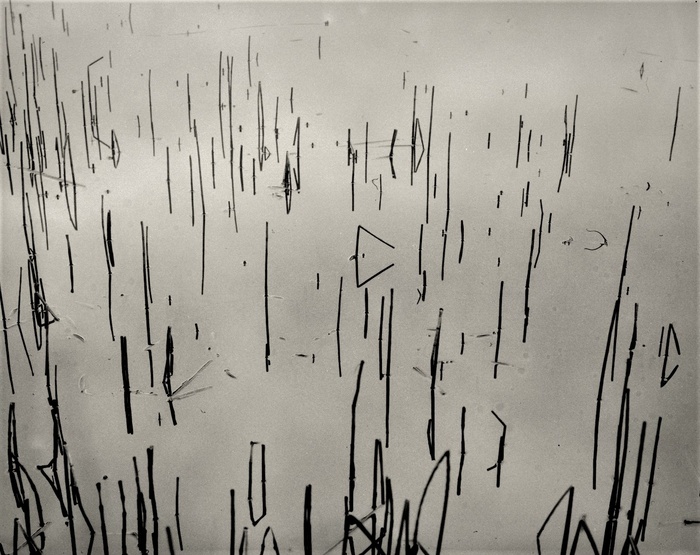
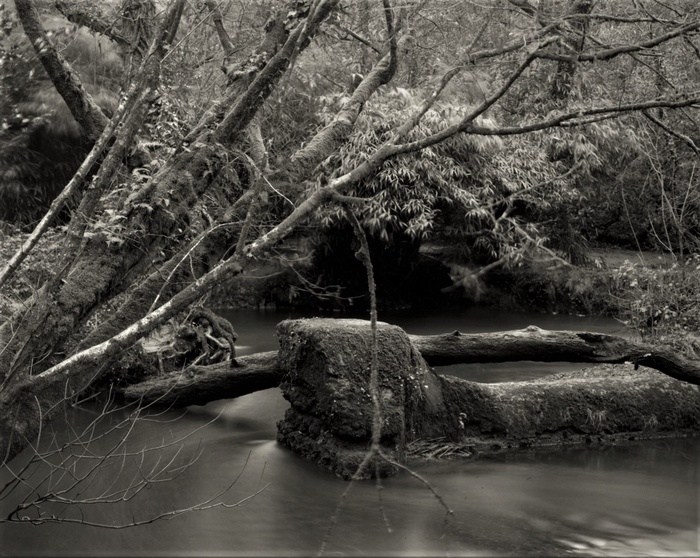
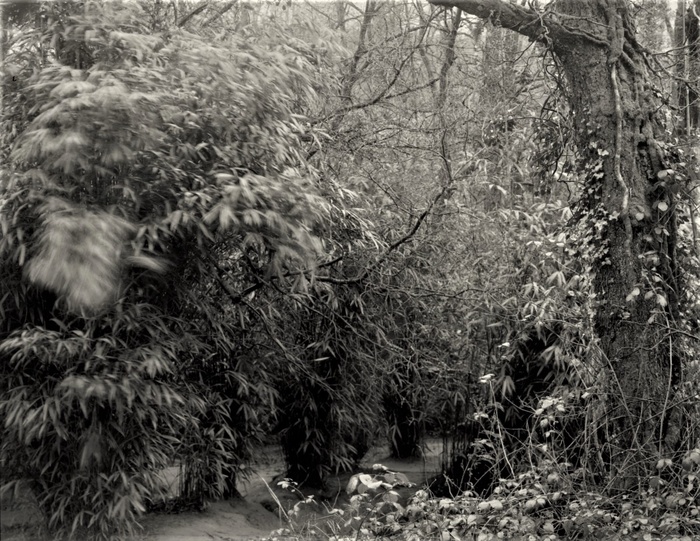
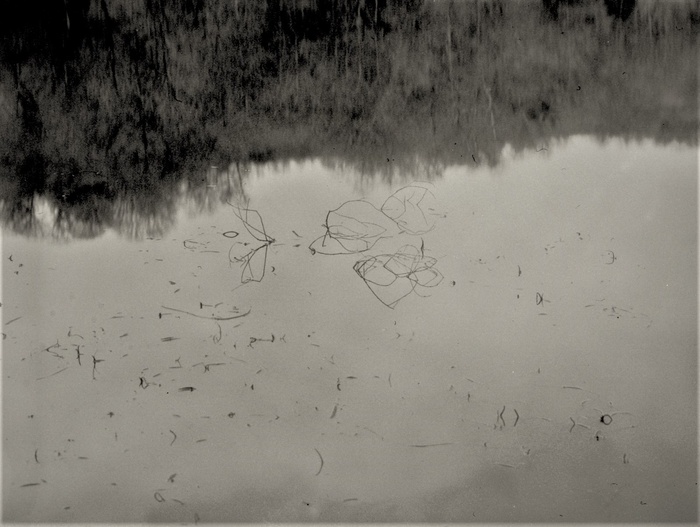
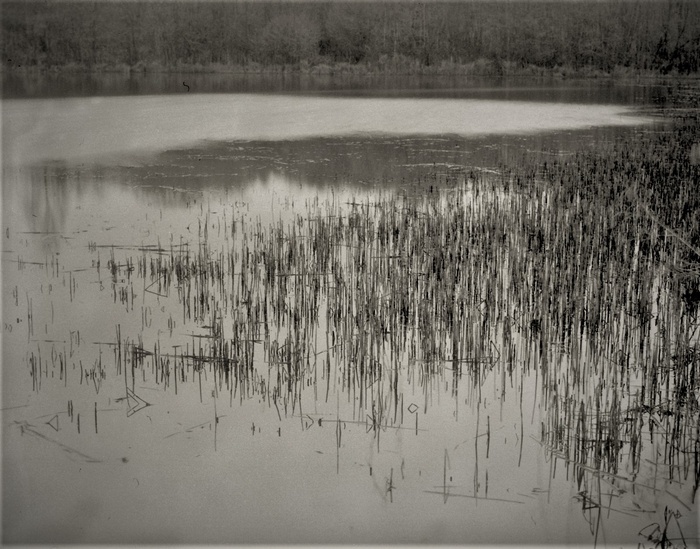
Following colour images were taken 13th February 2021 - black and white coming soon...
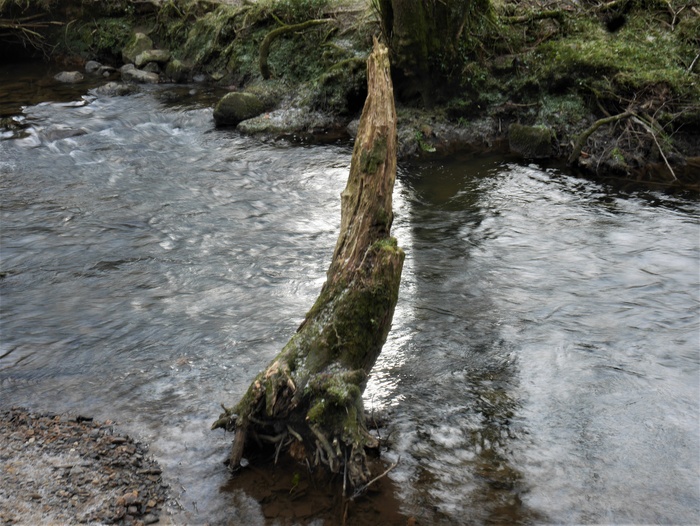
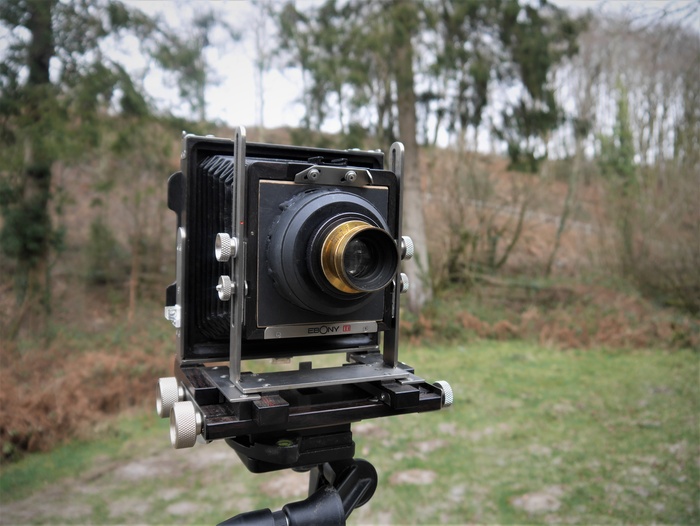
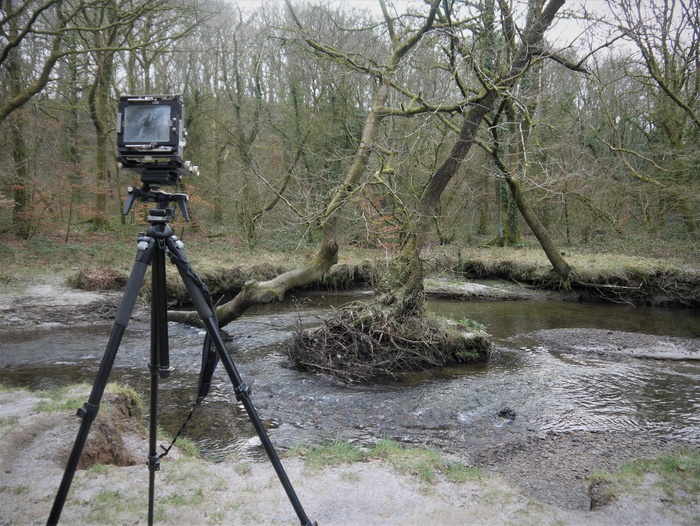
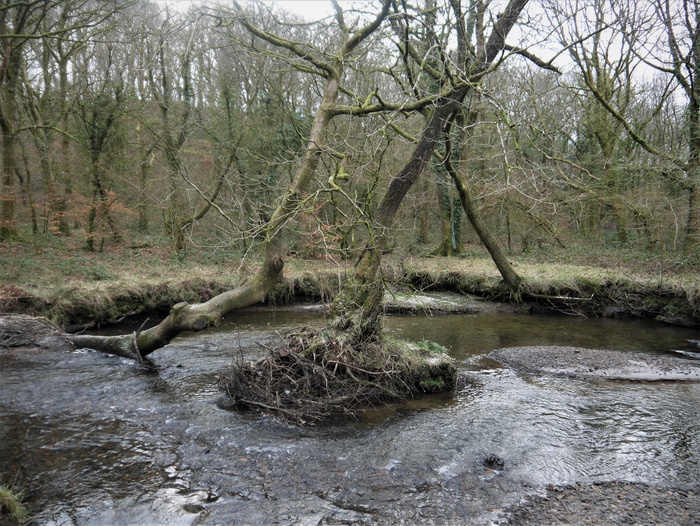
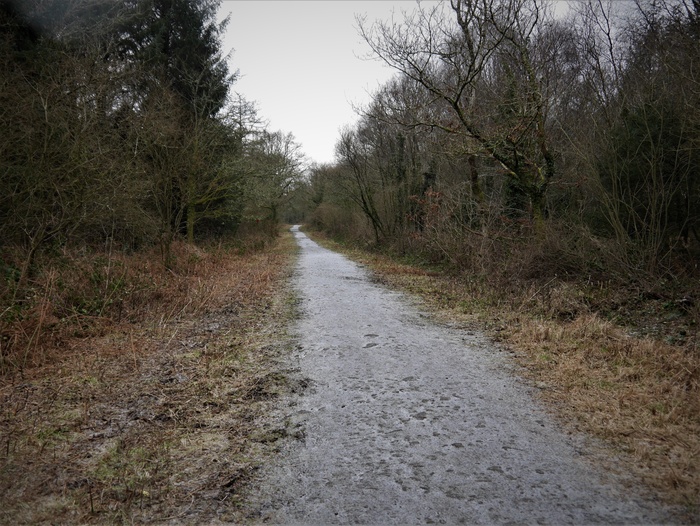
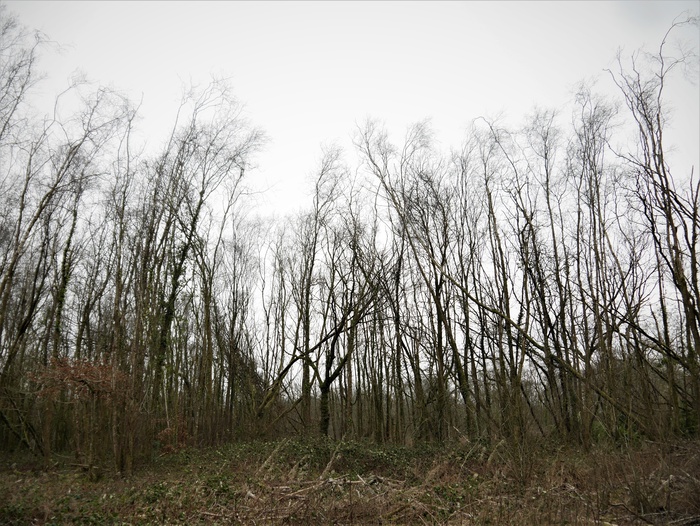
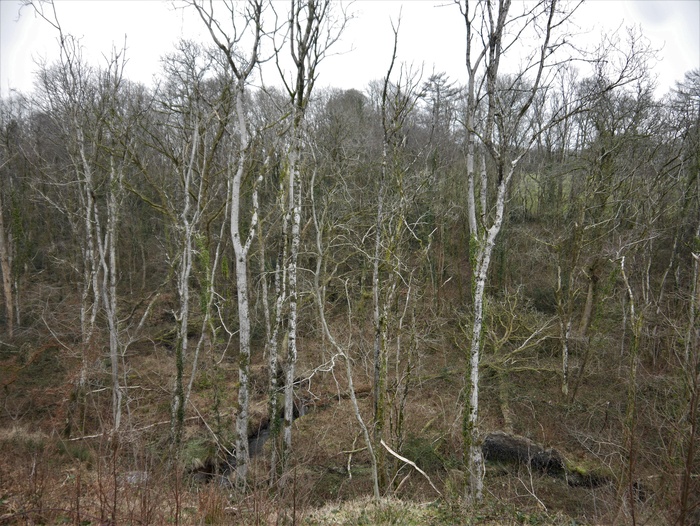
The next three images were taken with a Dallmeyer 5 1/2inch wide angle....
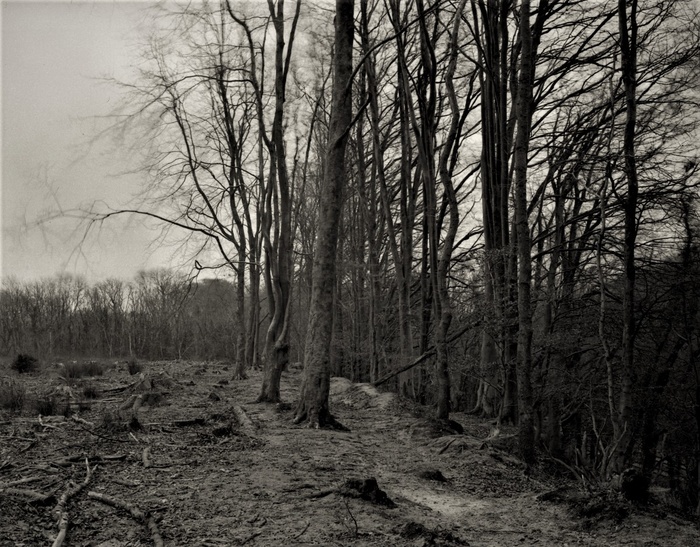
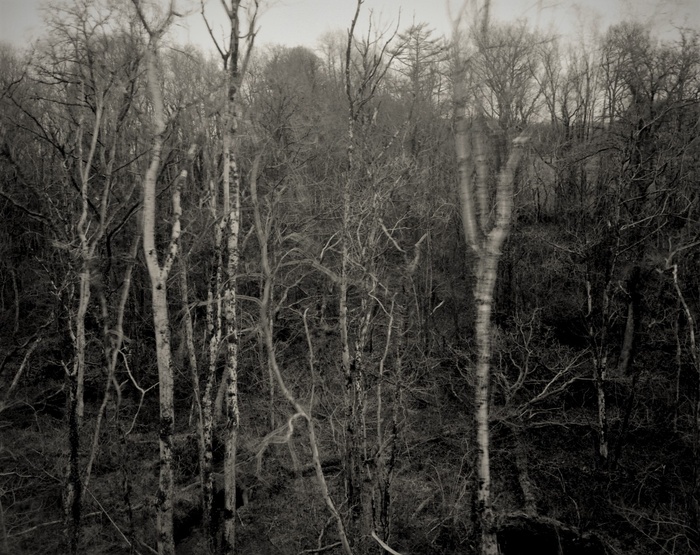
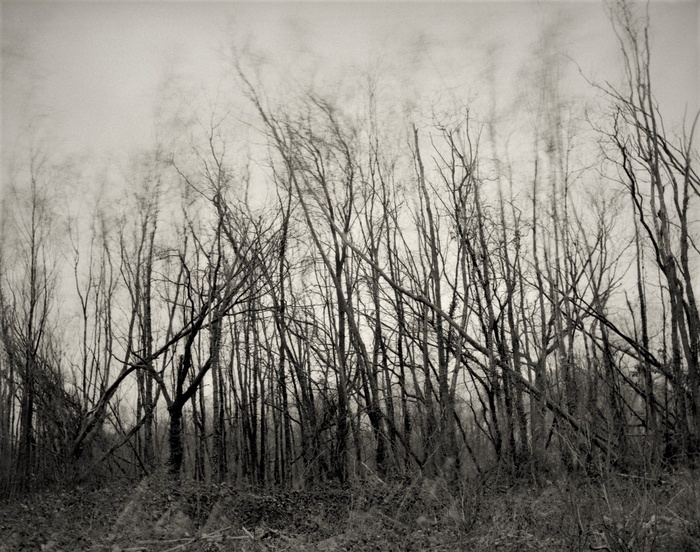
The next three images were taken with the Wray 5 1/2inch brass lens.
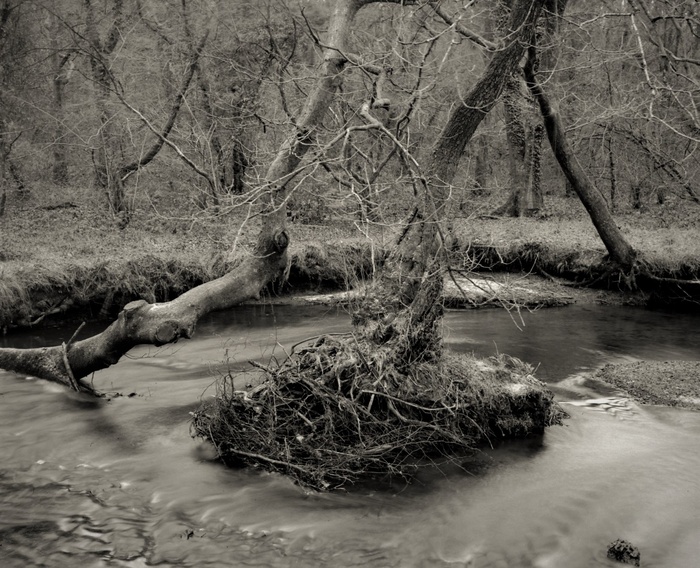
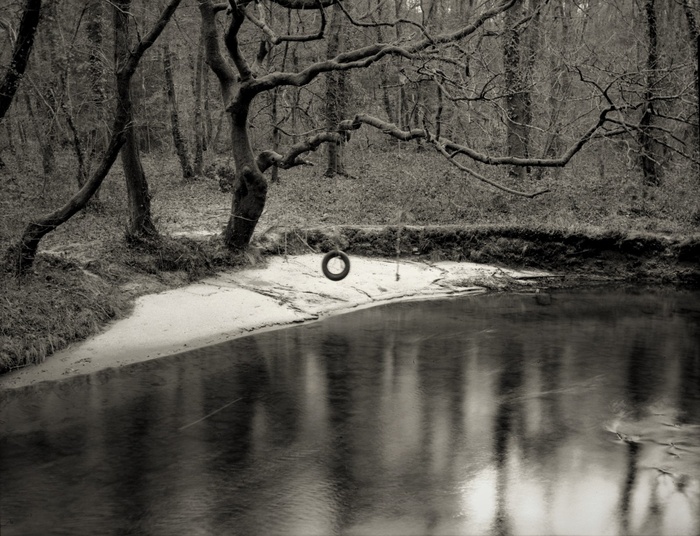
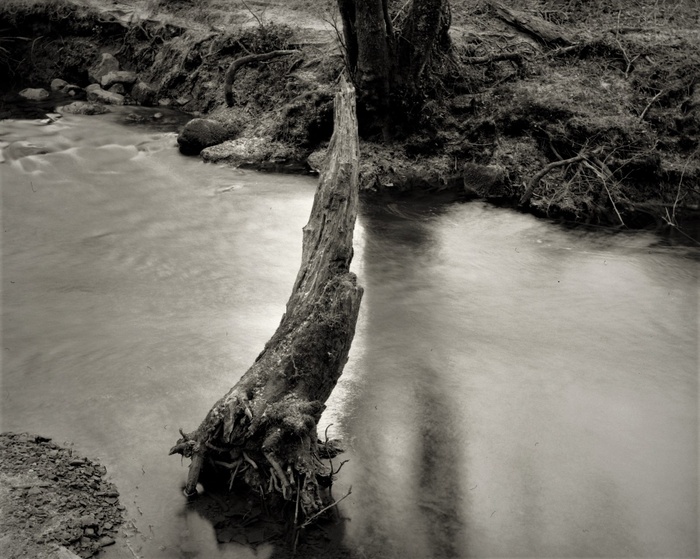
17th March 2021
After a break of a few weeks and with Lockdown coming to an end here in Wales, I thought I should think about ending this little project - final few images were taken with a Cooke 7.8 inch F6.5 series 3 brass lens - a lovely looking optic and I am optimistic of its qualities..
Black and white images to follow...
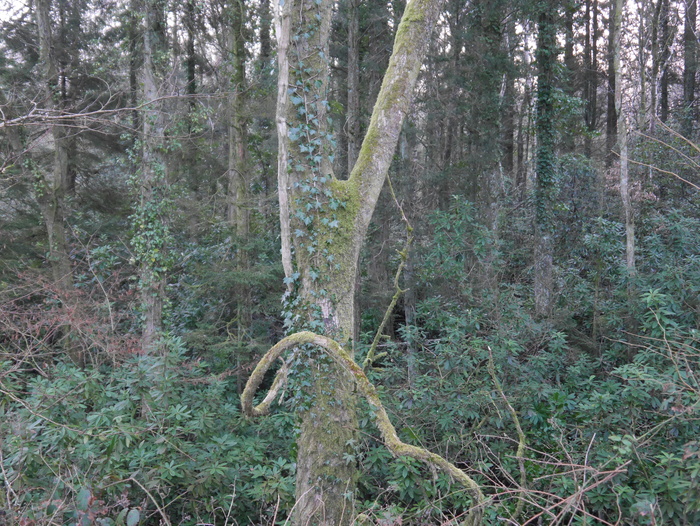
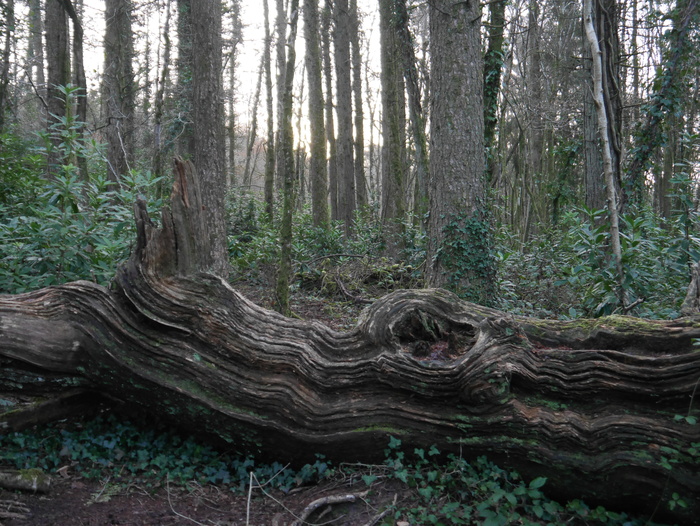
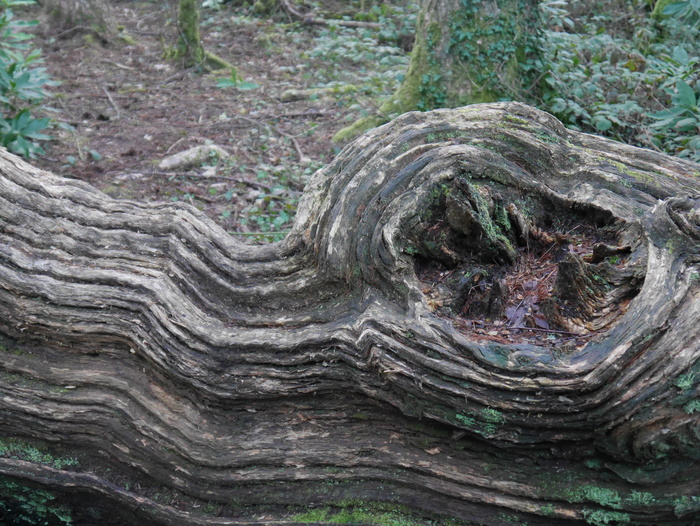
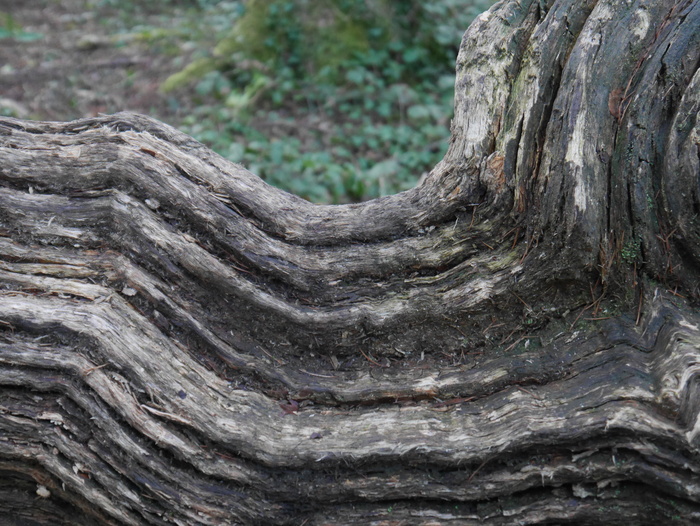
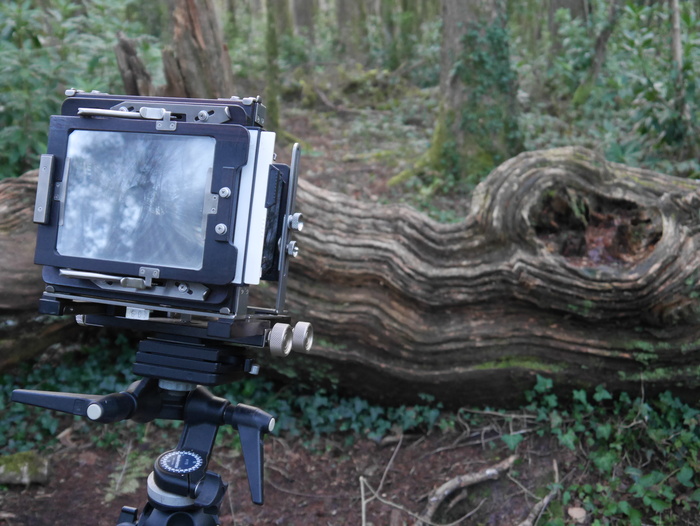
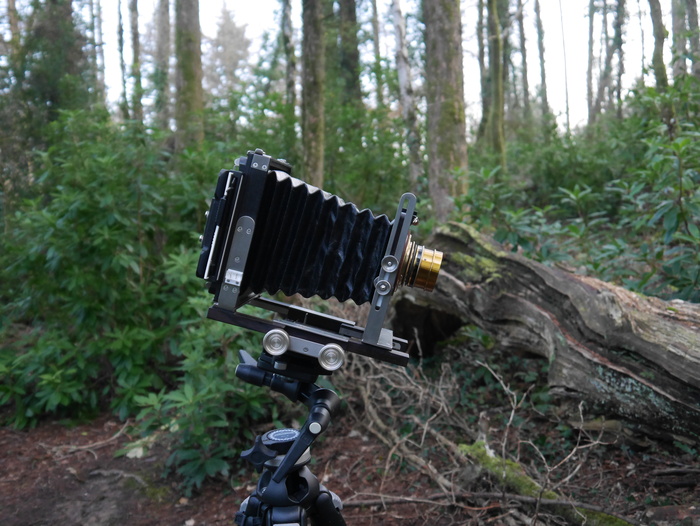
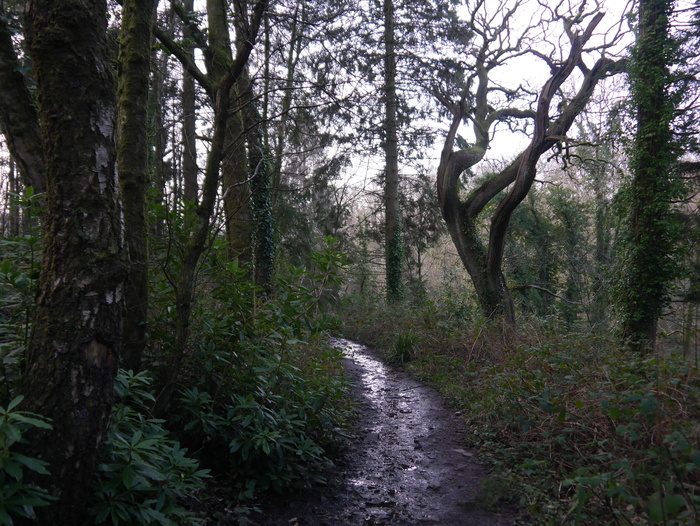
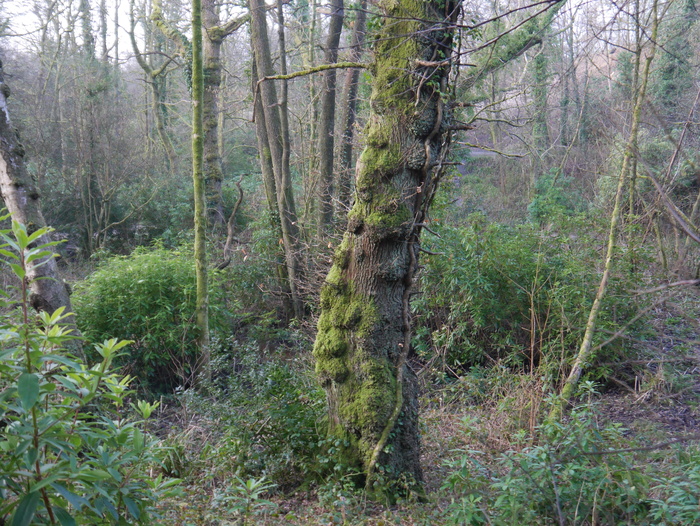
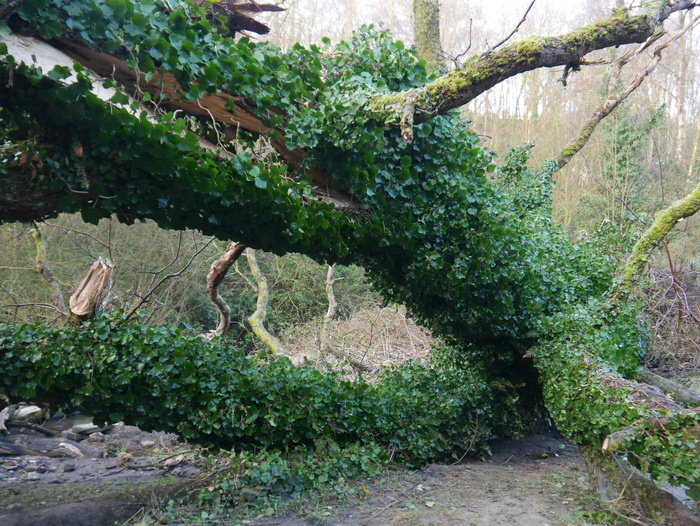
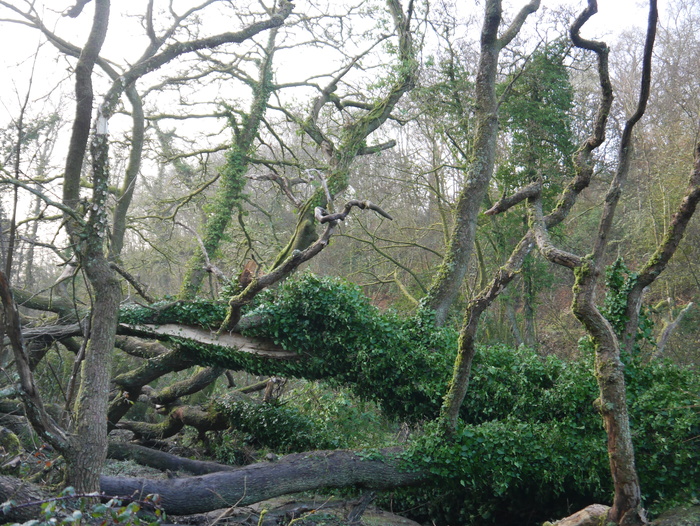
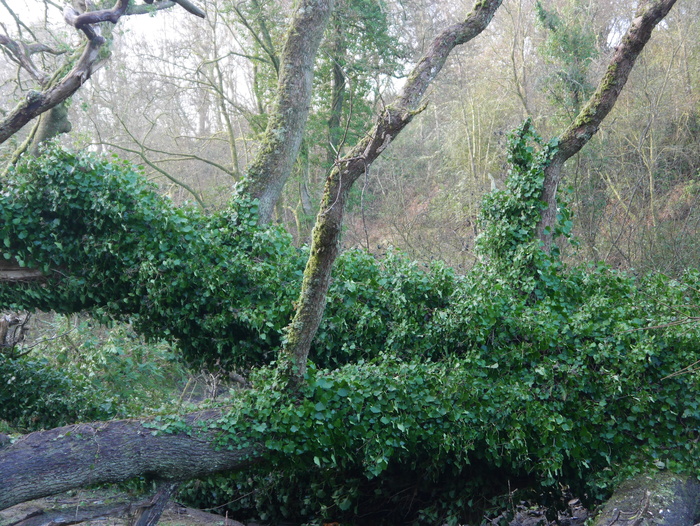
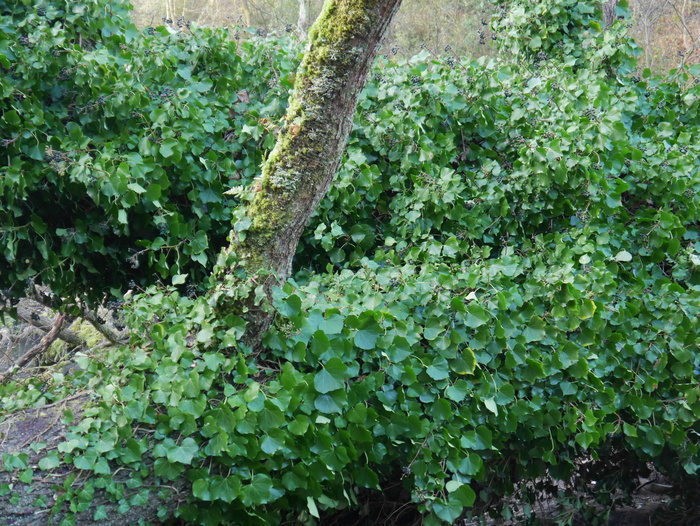
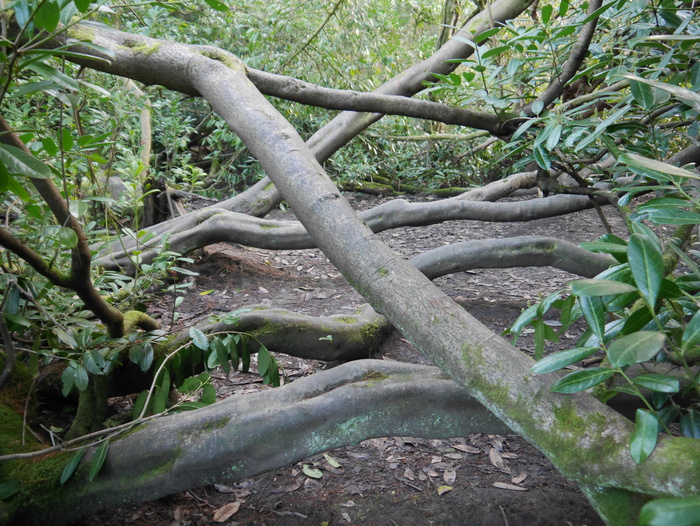
Black & White taken with the Cooke lens:
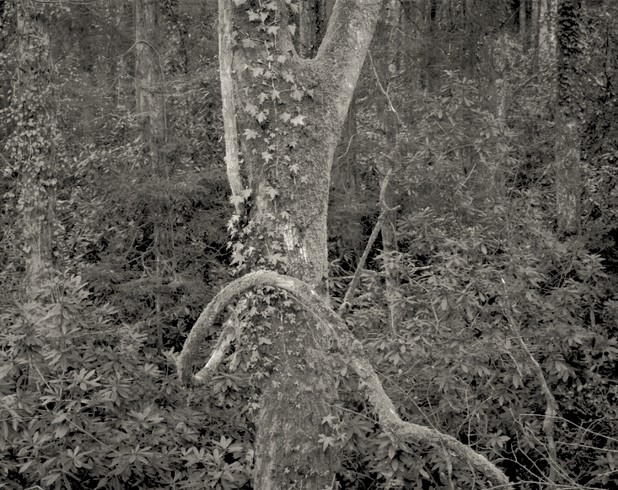
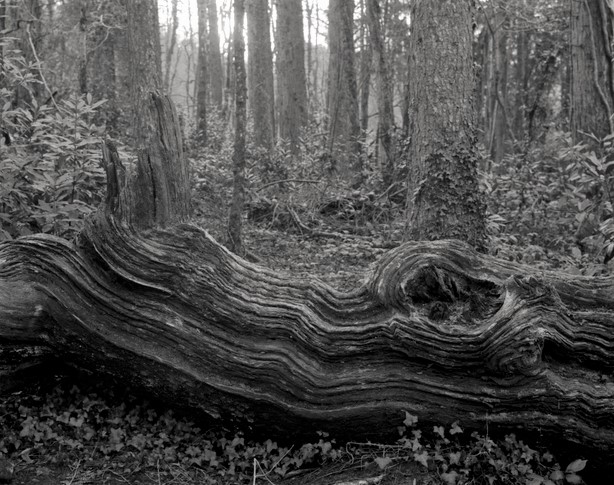
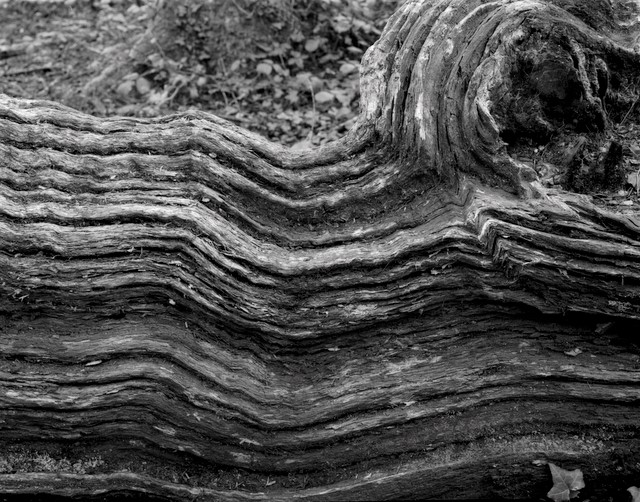
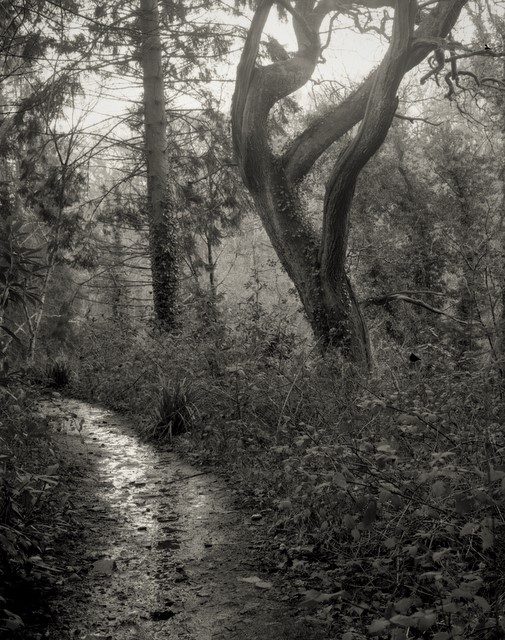
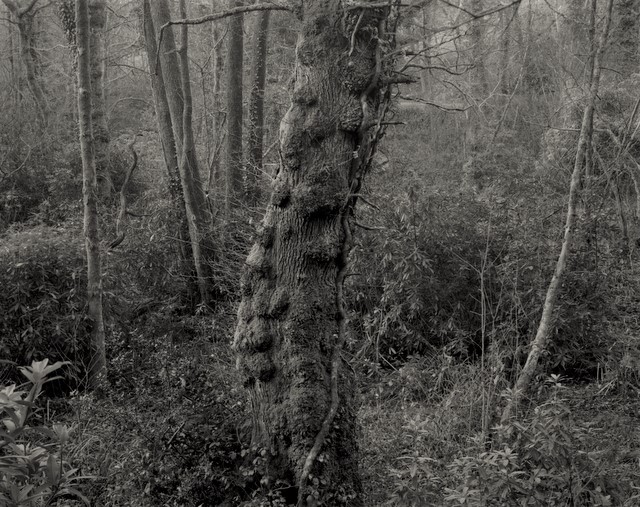
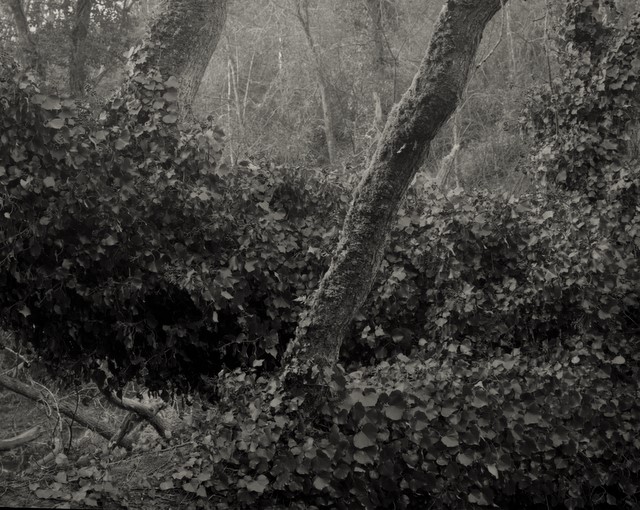
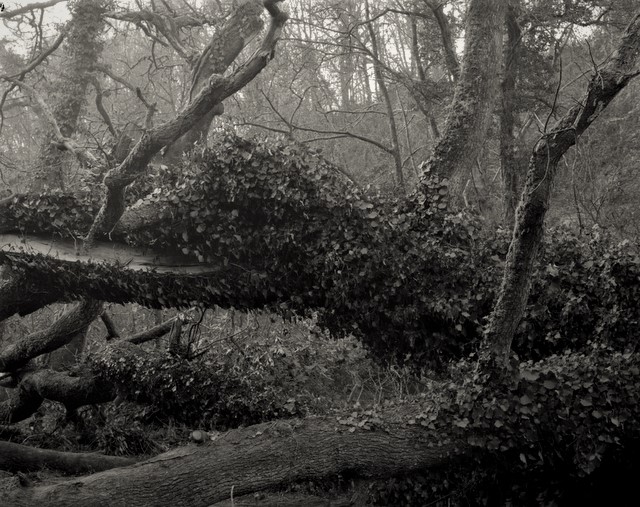
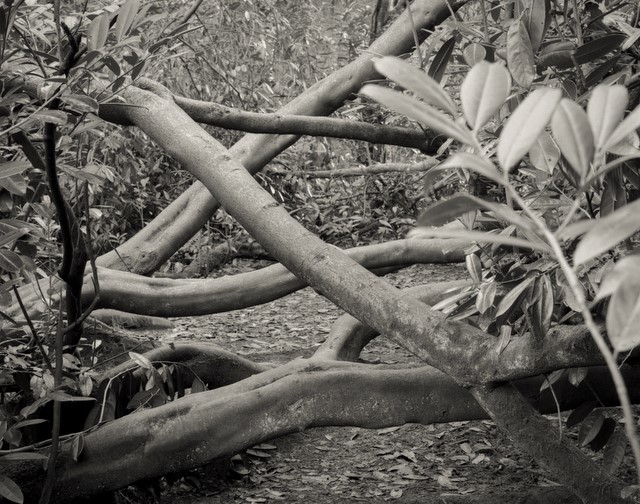
All black and white images (10x8inch hand printed using traditional darkroom techniques and unmounted) are available to buy at £35 each. £10 from each sale will be donated to the Penllergare Valley Woods or if you wish to donate directly please follow this link: https://penllergare.org/donate-fundraise/
If you’re interested in purchasing an image please email me at paulwhite@welshruins.co.uk
Turn around will probably be 2 – 3 weeks but sooner if I get more than one order.
All photograhs taken with an Ebony 5x4inch camera using the following brass lenses used:
Beck Steinheil Orthostigmat 7 1/8inch F6.8 (excellent glass)
Beck Symmetrical 8 inch F8 (excellent glass)
Cooke Aviar 6inch F4.5 (haze and fungus)
Dallmeyer Stigmat 6.4inch F6 (excellent glass)
Emil Busch Aplanat 8inch F6 (excellent glass)
Goerz Dagor 210mm F6.8 (front blooming, possible sepearation, a lot of dust
Dallmeyer Wide Angle 5 1/2 inch F6.5 (excellent glass)
Wray 5 1/2 inch 5x4 F6 brass (excellent glass)
Cooke 7.8 inch F6.5 series III (excellent glass, few light scratches)
I also intend to pay, in part homage, to the former owner of Penllergare Estate and photographer, John Dillwyn Llewelyn and his sister, Mary Dillwyn Llewelyn - see these links for more information:
https://en.wikipedia.org/wiki/John_Dillwyn_Llewelyn
https://penllergare.org/victorian-paradise/meet-jdl/
All black and white images (10x8inch hand printed using traditional darkroom techniques and unmounted) are available to buy at £35 each. £10 from each sale will be donated to the Penllergare Valley Woods or if you wish to donate directly please follow this link: https://penllergare.org/donate-fundraise/
If you’re interested in purchasing an image please email me at paulwhite@welshruins.co.uk
Turn around will probably be 2 – 3 weeks but sooner if I get more than one order.
I will be using my Ebony wooden camera and with a brass lens as seen in the pictures below. Exposures will vary from a few seconds to possibly a few minutes and I hope to emulate a sense of wonder and calmness that comes when photographing in such a manner.
Below are photographs... the black and white are the finished prints and the colour are snapshots and working in situ...
I'll be using a variety of old brass lenses (without shutter, using a lens caps to exposure the sheets of film).
First set of black and white images here were taken with a Beck Steinheil Orthostigmat 7 1/8inch (180mm). January 9th/10th 2021.






Colour snapshots showing locations and camera in situ...







The next few black and white images were taken 16th Jan 2021 using a Cooke Aviar 6inch brass lens. Some exposures, the first three were long exposures between 1 - 4 minutes... the latter three approximately 30 seconds... it was a dim morning... all taken at F22...







...and a few colour snapshots...






Penllergare Walled Garden - he walled garden is actually out of bounds currently due to renovation and repair.
The following images were taken with the Cooke Aviar lens...





The next few are taken with my preferred Orthostigmat:





Colour images from todays visit:

















A few words...
Since 1991 when I was 21 years old and purchased my first ever wooden 5x4inch field camera I have photographed in exactly the same manner as I do now. I have very seldom photographed any other way. The only times I have are when I was at college and university between 1993 – 1997. During this time I used a variety of methods; everything from studio still-life/portraits, to using flash indoors and outdoors, painting by light among other types. And mostly in colour. I did not regret or resent being forced to photograph in this manner but I knew even at that early stage that I would remain a largely uncomplicated and simple photographer. I liked only having two or three lenses, a slow wooden camera, always tripod mounted. I knew the weight and size of equipment would be annoying now and again but it seemed a small price to pay and indeed, became part of the whole process.
Occasionally I go walking with my family and just carry a digital camera and I take a few photographs. I compose, I take my time but it feels akin to cheating compared to carrying a heavy rucksack and heavy-duty tripod. Not to mention processing and printing in darkroom conditions. You feel you have properly earned an image, worked for it, not post-processed on a computer monitor.
The slow traditional process of photographing this way is an almost organic form. The only piece of electrical equipment used is a light meter which takes a 6volt battery. Everything else is purely mechanical and manual. And even the light metering is often something I can do without. I know that most times when I am out and about it will be morning. I know it will most likely be cloudy and I’ll be focussing my camera upon a rural ruin. Eighty percent of the time this means I will be using an aperture of F22 and exposing for approximately 4 seconds. Unless the lighting changes, the sun shines or I am under dark canopy of woodland, I can more or less continue photographing with this aperture/shutter combination. It works for me.
So what has changed recently? The Covid pandemic has meant I cannot travel anywhere beyond walking distance. My only local walk is Penllergare (sic Penllergaer) woodland, an old picturesque mansion estate just five minute walk away. Not disimilair to the Hafod Estate where I am from. I have of course photographed it numerous times with my normal set up; wooden camera, wide angle lens. I have however recently been looking at old brass lenses on eBay and purchased a Beck Orthostigmat 180mm. This lens dates from the 1890’s and has no shutter. This means I have to use a lens cap to expose a sheet of film. This means exposures need to be approximately over 2 seconds or so… not a problem.
This method of exposing film has never appealed to me. It always felt clunky and unscientific, mostly using guess work. In practice however it has felt the complete opposite of a step backwards. Technically speaking it is a step backwards but as far as a satisfying process to record an image onto film, it feels like a great leap forward.
Working this way has slowed me down further. Using a wooden camera is generally considered a slow process anyway but I have been using the same method of photographing for so long that it generally only takes me a minute from taking the camera out from the bag and setting it all up and exposing a sheet of film. I have done it this way for so long that I’ve often sped through the whole process without properly enjoying or appreciating it. Using shutter-less brass lenses has made me re-think, re-consider the whole process. And for this I am grateful.
My next lens is a Cooke brass lens, which has a similar focal length, but should produce a different look to the finished image.
Ideally I would like to use a larger 10x8inch camera (I have only ever used 5x4 inch camera’s) but the same concerns niggle me as they did back in 1991 when I was trying to find the camera for me. The price of film, the price of camera, lenses, darkslides, processing equipment all increases and I would, without any doubt, take a lot less photographs. I am already restricted to some degree how much I spend and increasing film sizes would simply restrict me further. So, I will remain with my set-up and be happy with what I have.
Of the images here they are mostly of landscapes. For many years, decades even, I considered myself a landscape photographer first and foremost. The truth is that I am not the greatest of landscape photographers! I have often felt my images lacked something, an air of mystery or of historical importance, or a true sense of place. I could produce pretty landscapes but they are often hollow and lack weight and meaning. Nonetheless, I have approached Penllergare woods as a landscape project. I may learn something new. I may discover how to create ‘weight’ and ‘meaning’ onto a sheet of film.
Or alternatively I may have reached my landscape creative peak thirty years ago when I first roamed the Hafod mansion estate when it was mostly untouched and not filled with walkers and visitors – not that I have an issue with walkers and visitors, I was then as I am now at Penllergare nothing more than a visitor.
Weekend 23rd January 2021 - A very cold morning - deep frost - first a few colour images and then followed by black and white....










The black and white were taken using a Beck Symmetrical 8inch lens - exposures varied from 4 minutes to approximately 15 seconds. Aperture F22 - F45. The Beck lens is very sharp once stopped down but the maximum aperture of F8 meant it was quite difficult to focus in the dim morning light.







24th January 2021 - A little snow at last in Swansea!










The black and white images were taken using a lovely little Dallmeyer Stigmat 6.4inch F6 brass lens and at F32 for approximately 1 second to 4 seconds. Images of the lens are here, lovely bright image on ground-glass meant I could take some of todays images without disappearing beneath a focus clothe.




The black and white images below are a slight disappointment to me. There could be a number of factors for this; firstly it could be the lens. I had high hopes for this Dallmeyer lens - I think the jury is still out - two of the images were shot directly towards the sun. Any brand new lens struggles with this, and to expect a lens over a hundred years old, before the invention of coating lens surfaces to reduce flare etc...
Secondly, I had never seen Penllergaer Woods look so beautiful! A light snow fall had reached every part of the forest, a low light mist hung between trees and the whole place had an air of a fairy-tale. It was a beautiful morning. However my preferred weather is that of cloud, deep cloud. On cloudy days there seems there's a whole extra spectrum of grey tones... which leads to my third reason for my disappointment; a change of film stock. All the previous images were taken with FP4 (albeit out dated) but these four images were taken using Fomapan 100. I've never been the greatest of fans of Fomapan but it's cheap, almost half the price of its counterparts. I also noticed the negatives had drying marks - not something I normally have issues with. I think from now on I will spend a little extra and use either Ilford or Kodak film.




I have not given up on this Dallmeyer lens. I think it deserves another chance. It should also be noted that the exposures were quite short - 1 second to about 4 seconds. Using the lens cap as a shutter has it's own pitfalls with such short exposures. Next weekend, weather permitting, I'll return to Penllergare, early before sun up and expose more sheets and hope for improvements!
January 30th/31st 2021... a few colour images... black and white to follow shortly...










The first few images were taken with this Emil Busch Aplanat 8inch lens on a very windy day...






Still need some testing with this lens. It's difficult to gauge it's sharpness, although I acept sharpness is not the only attribute to a lenses performance and usefulness.
The next few are from the Dallmeyer Stigmatic which performed a little better this time around most likely due to the subject matter...





Day off - mid-week 3rd February 2021 - tough day - walked to Penllergaer Woods - visited the only ruined farm I know of in Penllergaer - Bryn-sil - it's a little off the beaten track and the track down is partially a stream. Black and White to follow...














The black and white set were taken with a Cooke Aviar which I have just noticed has some haze and also some strange marks which are possibly fungus - therefore detrimental to the final image - uncertain if it is fungus since the 'strands/lines' are criss-crossed very symmetrically. Uncertain what weird phenomenon this is!








Next set: 7th February 2021












The black and white taken on 7th Feb 2021 were taken with a brass Goerz Dagor 210mm F6.8 lens - a well regarded lens - however my very cheap version purchased on eBay (£15) has an awful lot of dust, some blooming on the front element and yellowing of the optics (unless this is Thorium glass - which I doubt if it is!)... However, the negatives are nice looking, lacking contrast - which I've increased when scanned, and I think when I can find a better example the Dagor is definitely one to keep.
Exposures varied at F22 from 15 seconds to approx 45 seconds.






Following colour images were taken 13th February 2021 - black and white coming soon...







The next three images were taken with a Dallmeyer 5 1/2inch wide angle....



The next three images were taken with the Wray 5 1/2inch brass lens.



17th March 2021
After a break of a few weeks and with Lockdown coming to an end here in Wales, I thought I should think about ending this little project - final few images were taken with a Cooke 7.8 inch F6.5 series 3 brass lens - a lovely looking optic and I am optimistic of its qualities..
Black and white images to follow...













Black & White taken with the Cooke lens:








All black and white images (10x8inch hand printed using traditional darkroom techniques and unmounted) are available to buy at £35 each. £10 from each sale will be donated to the Penllergare Valley Woods or if you wish to donate directly please follow this link: https://penllergare.org/donate-fundraise/
If you’re interested in purchasing an image please email me at paulwhite@welshruins.co.uk
Turn around will probably be 2 – 3 weeks but sooner if I get more than one order.
All photograhs taken with an Ebony 5x4inch camera using the following brass lenses used:
Beck Steinheil Orthostigmat 7 1/8inch F6.8 (excellent glass)
Beck Symmetrical 8 inch F8 (excellent glass)
Cooke Aviar 6inch F4.5 (haze and fungus)
Dallmeyer Stigmat 6.4inch F6 (excellent glass)
Emil Busch Aplanat 8inch F6 (excellent glass)
Goerz Dagor 210mm F6.8 (front blooming, possible sepearation, a lot of dust
Dallmeyer Wide Angle 5 1/2 inch F6.5 (excellent glass)
Wray 5 1/2 inch 5x4 F6 brass (excellent glass)
Cooke 7.8 inch F6.5 series III (excellent glass, few light scratches)